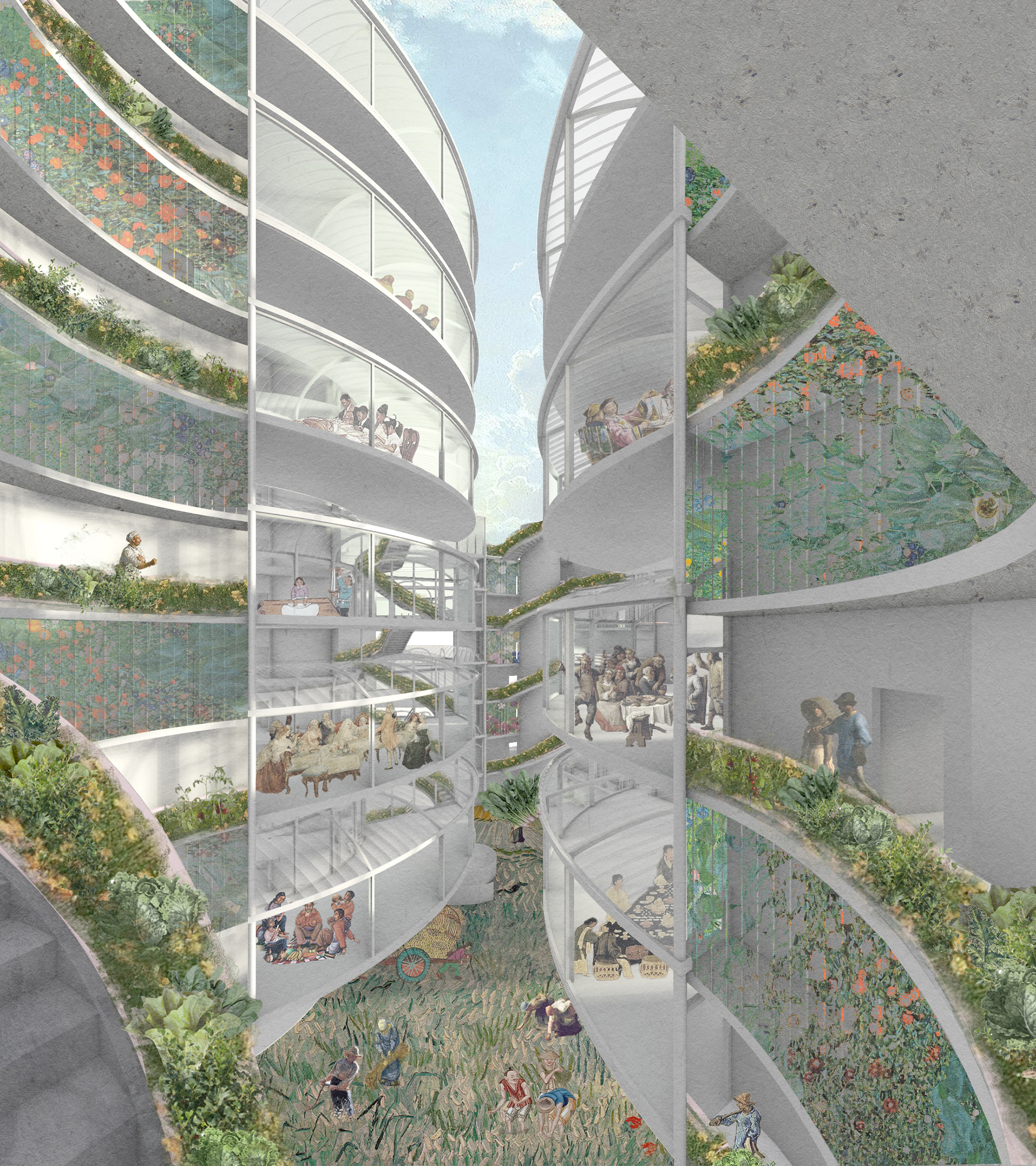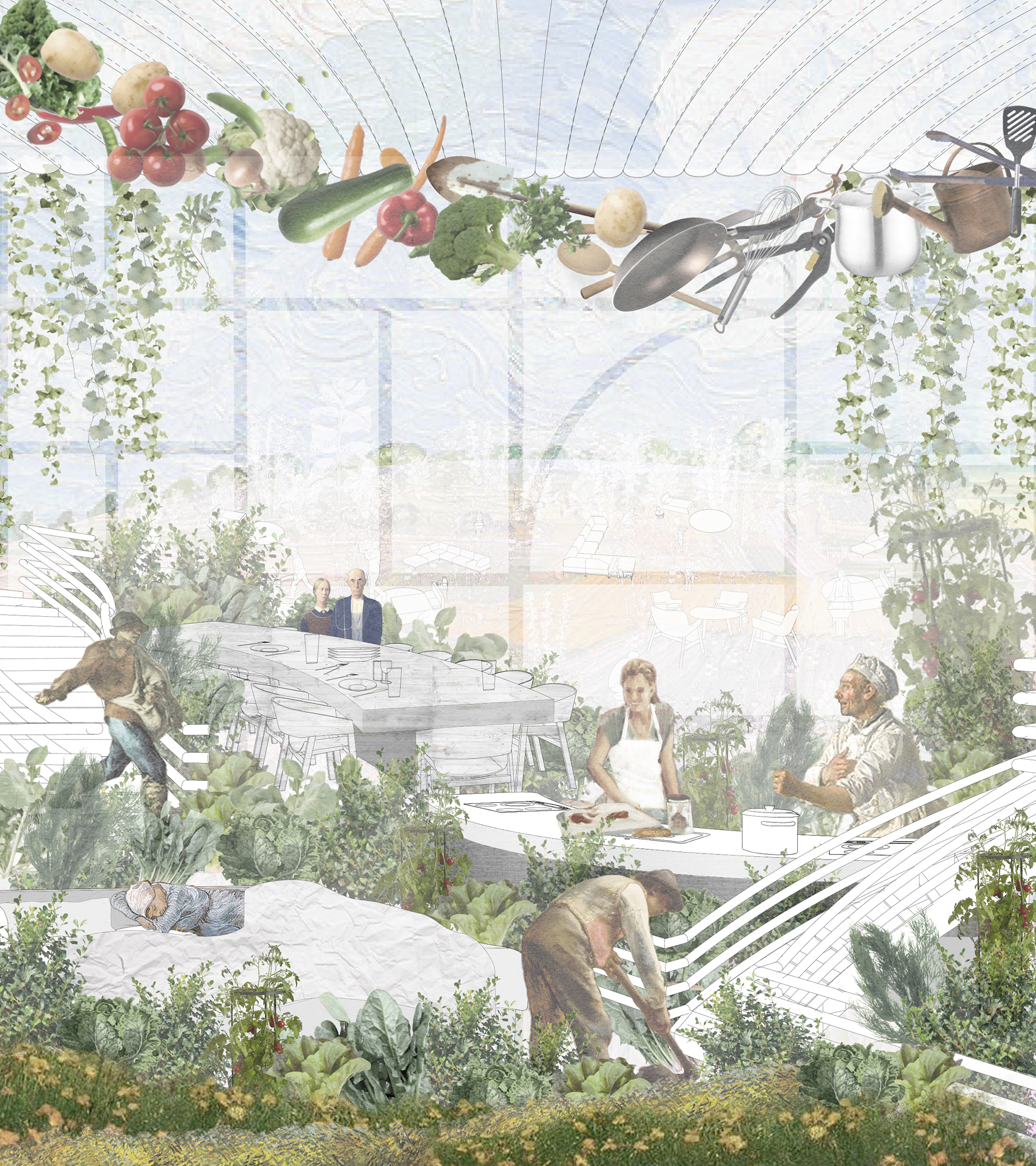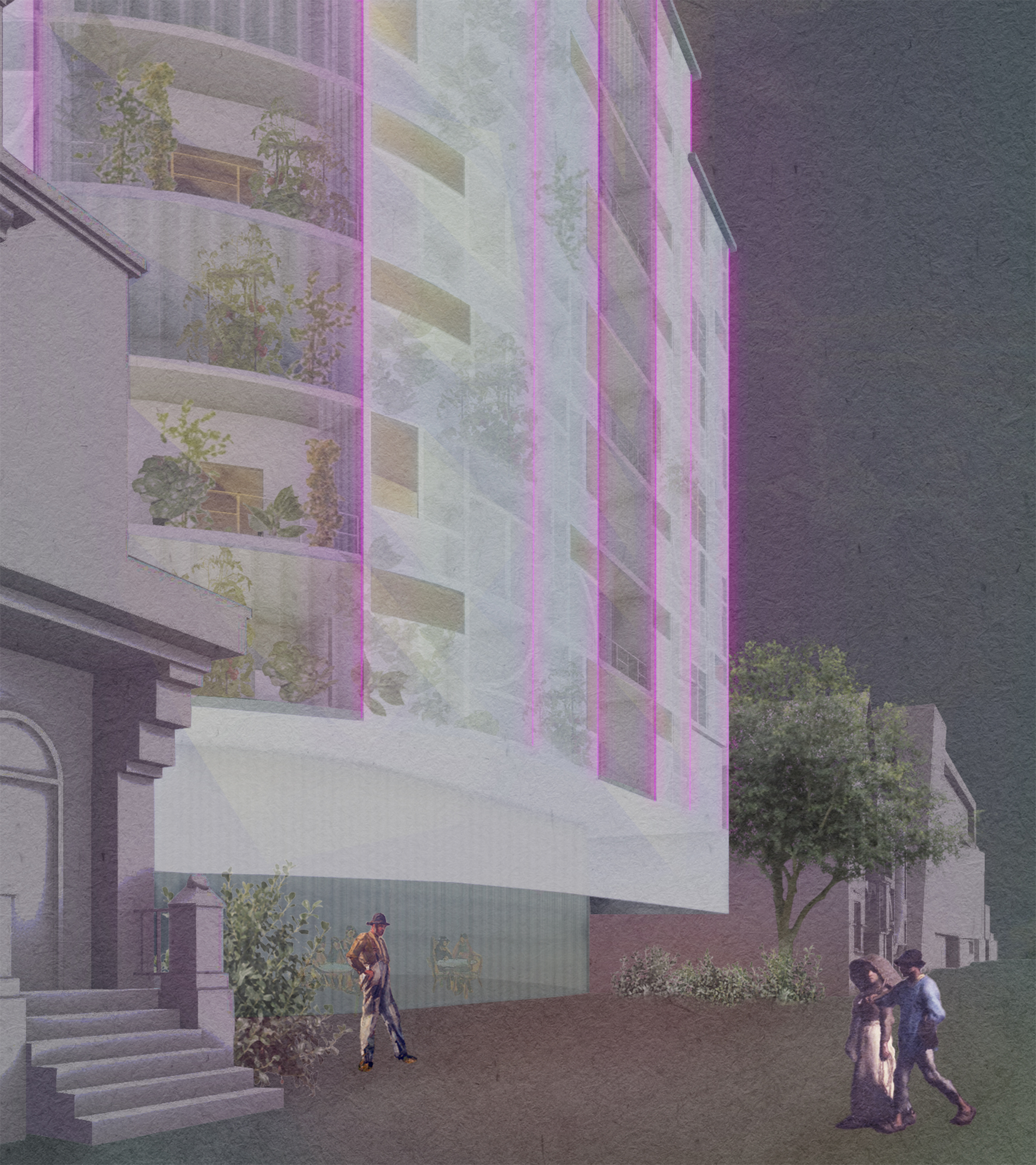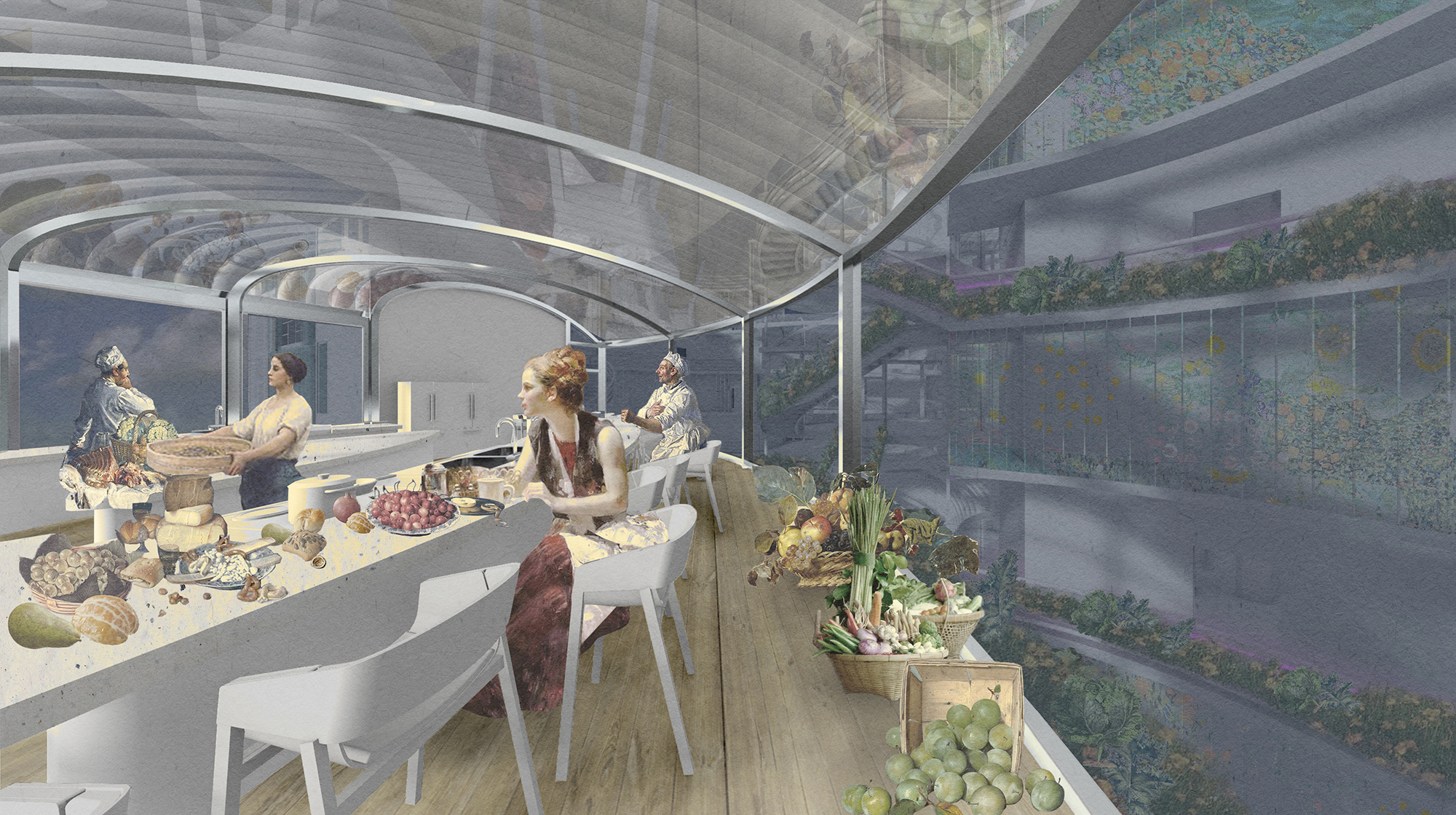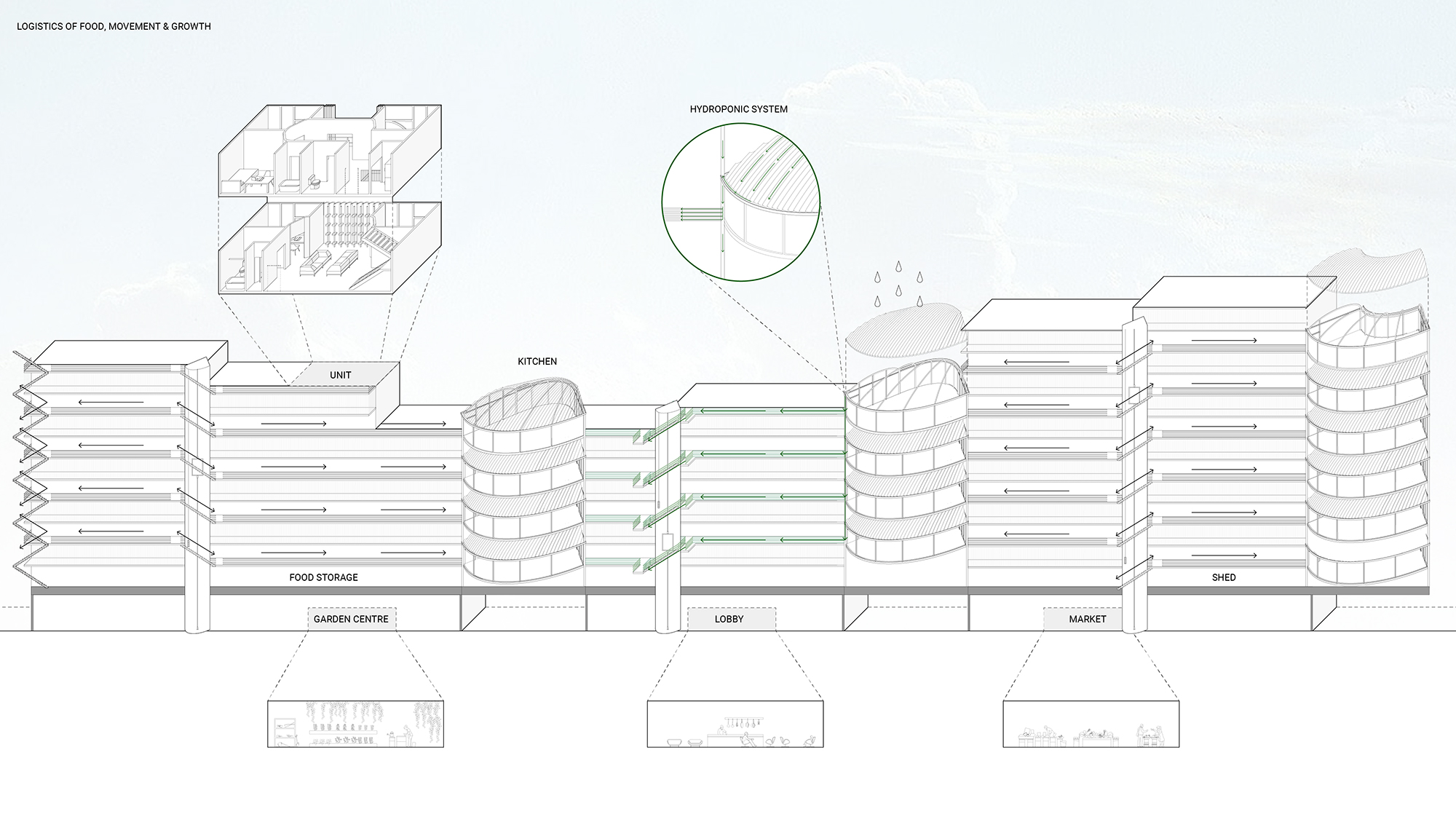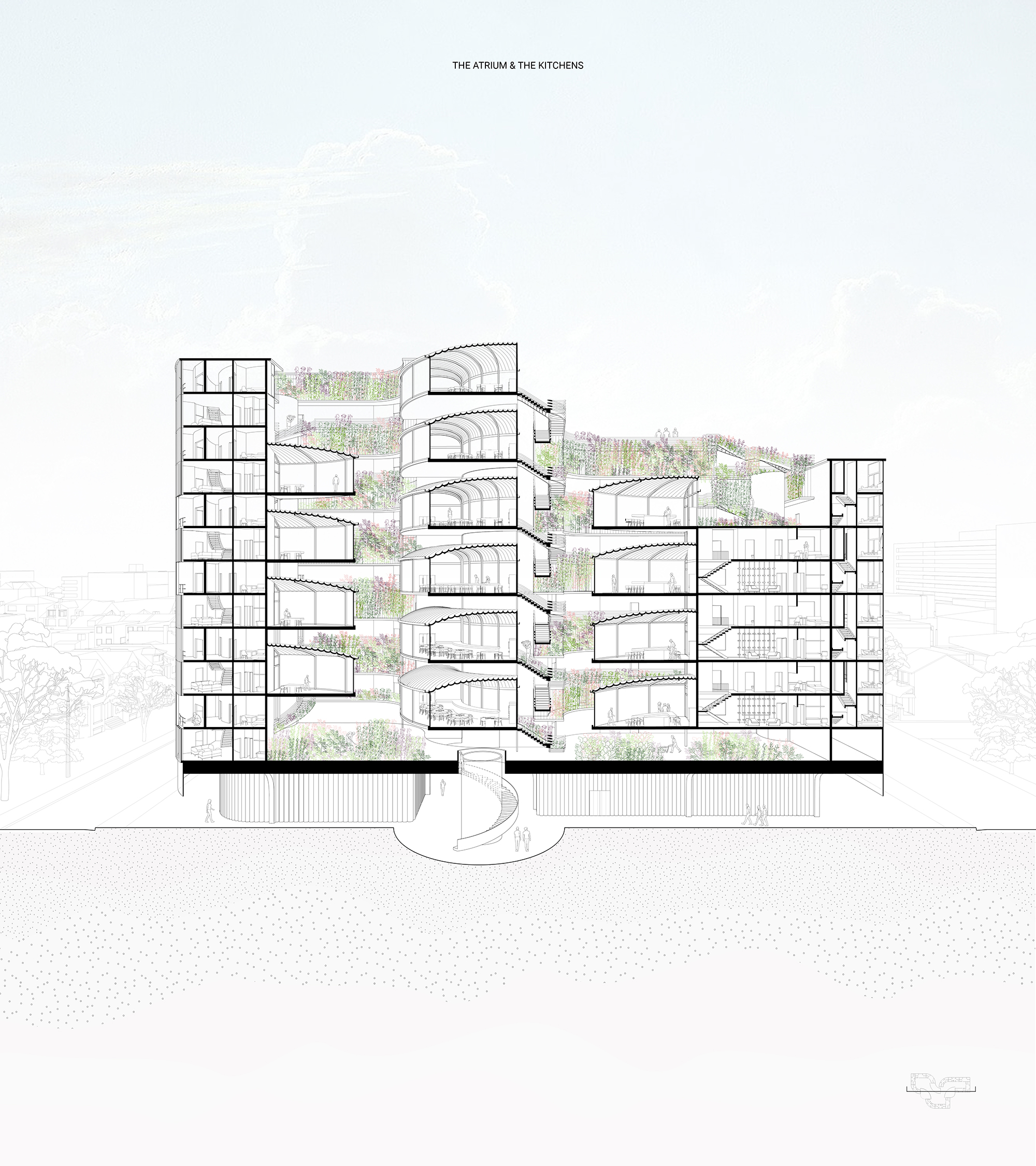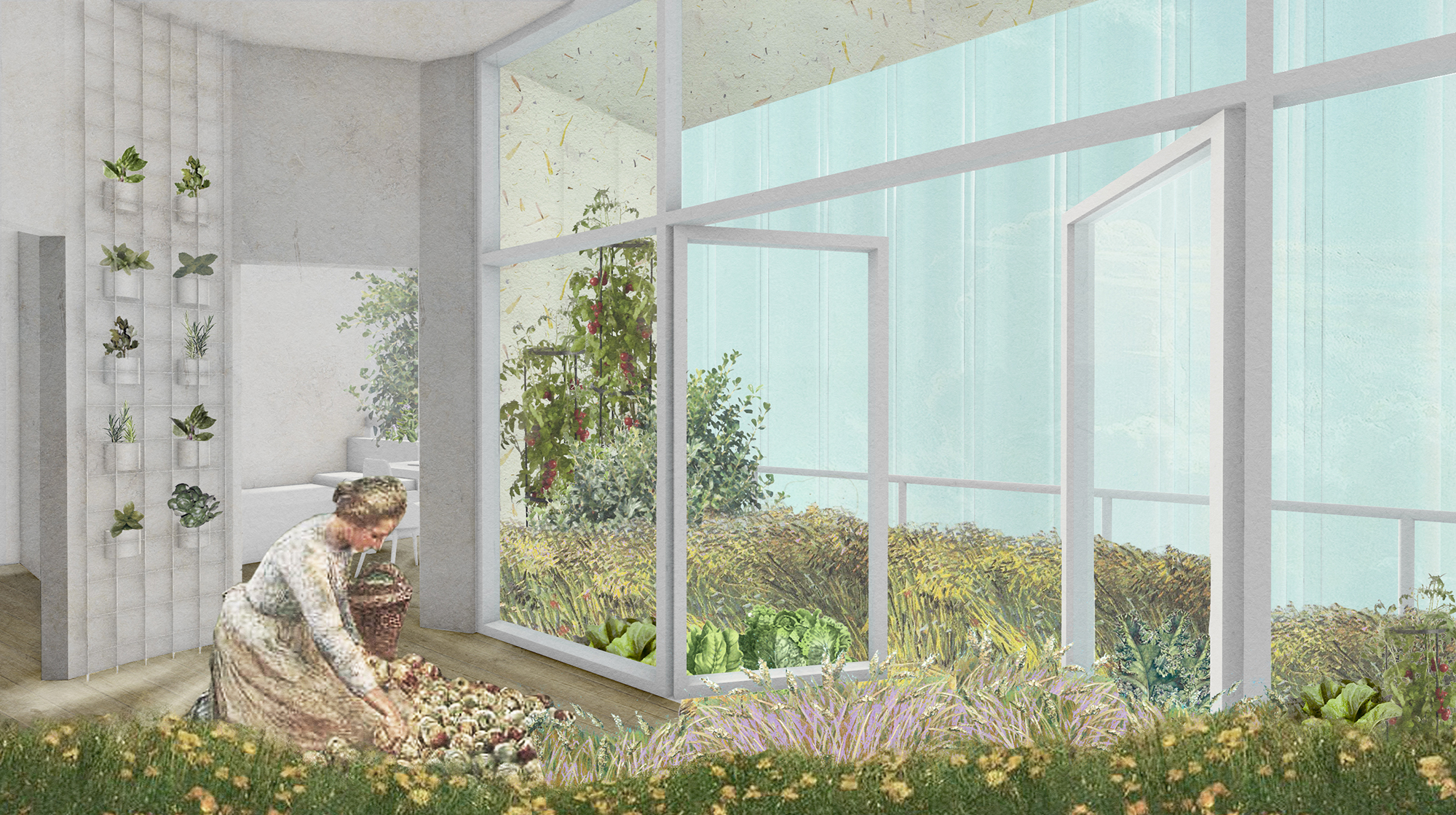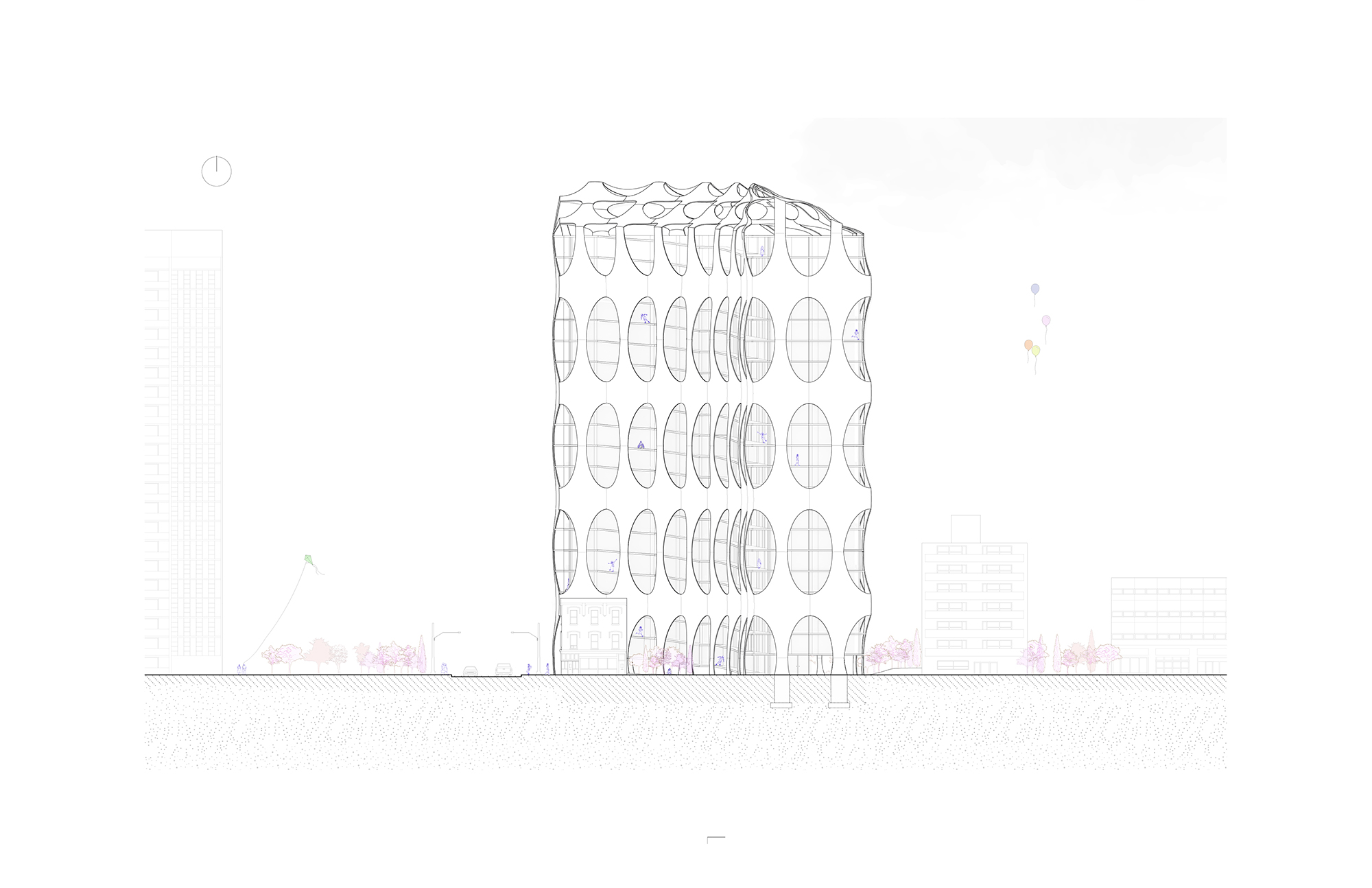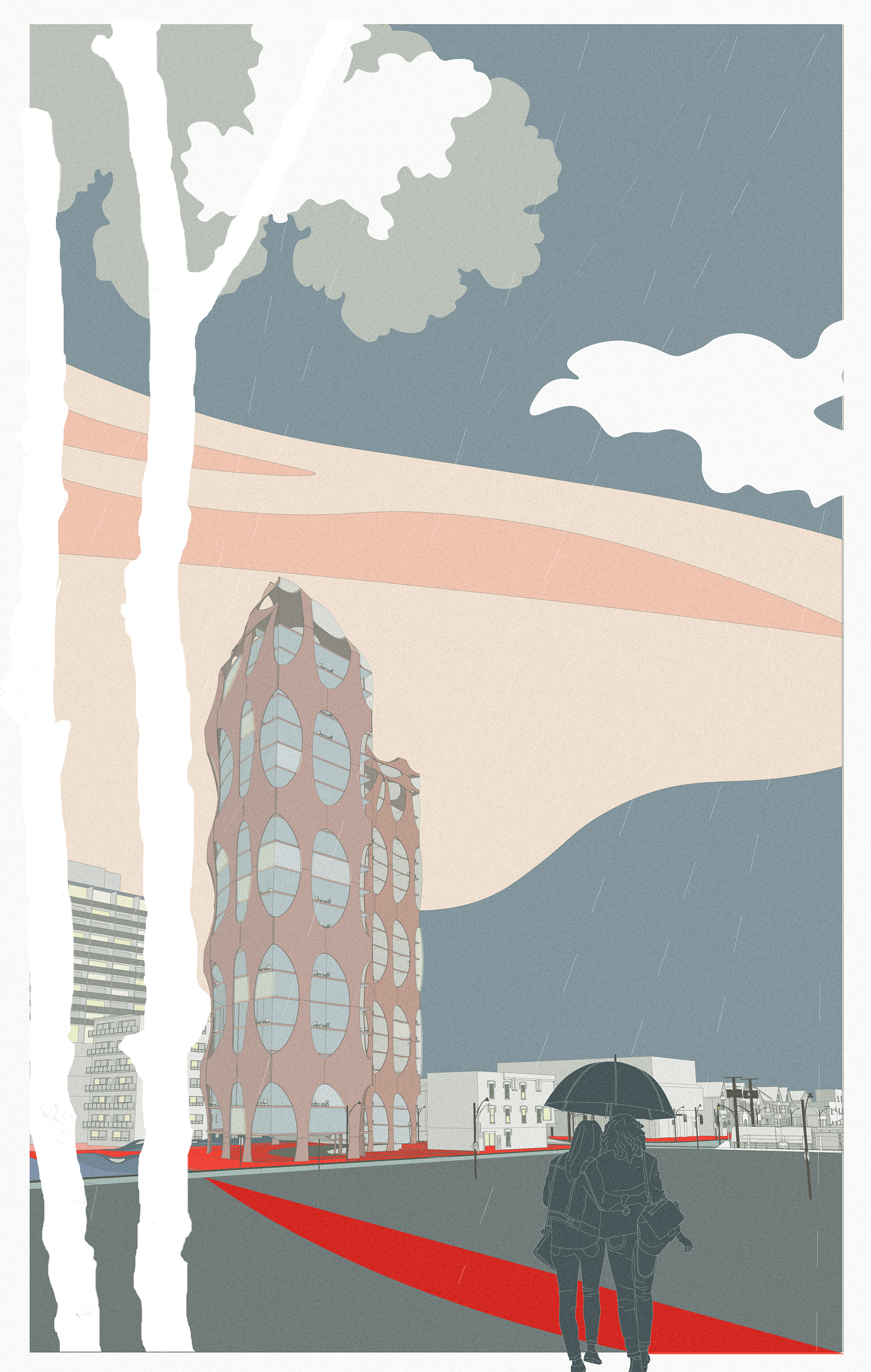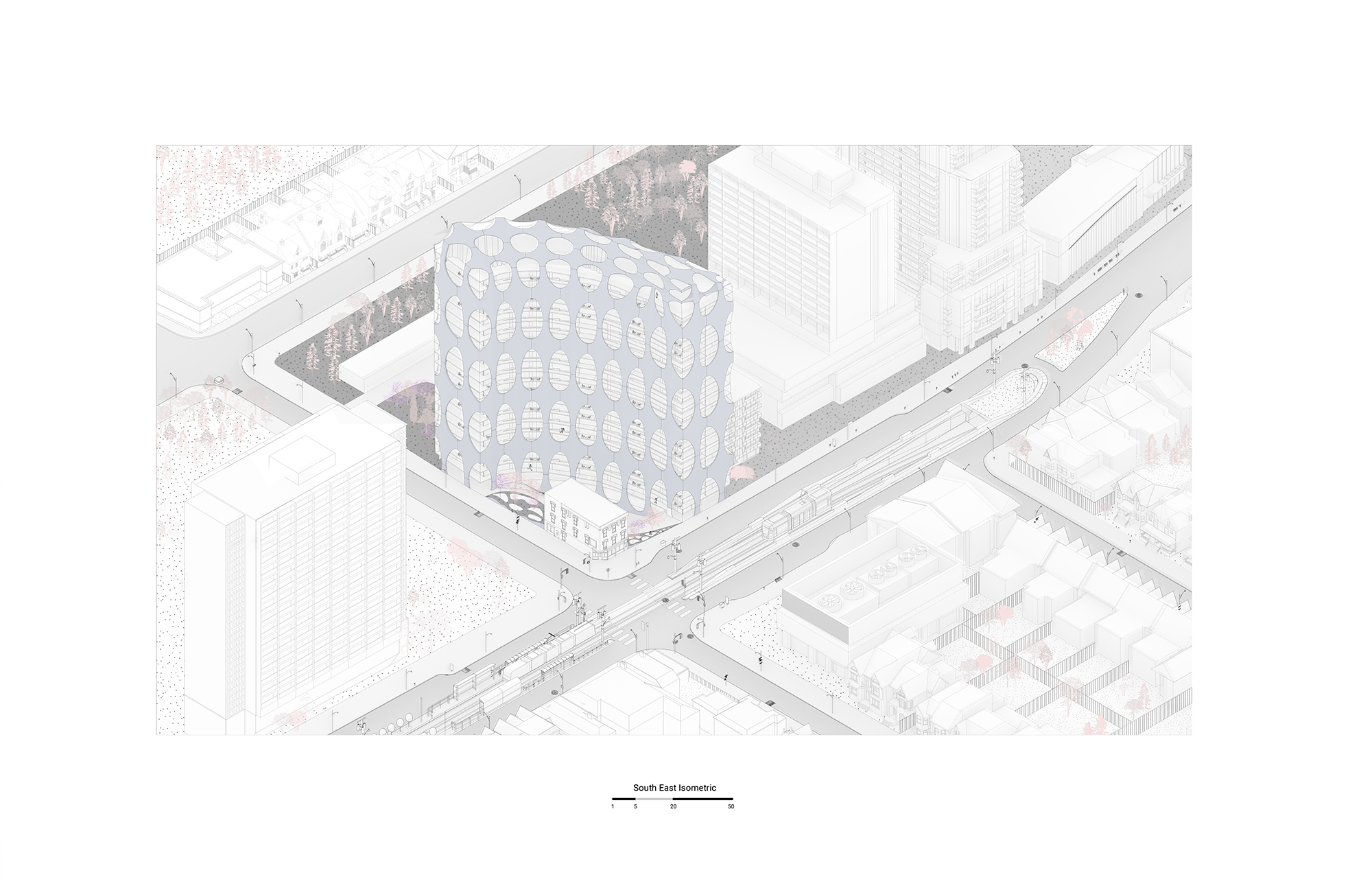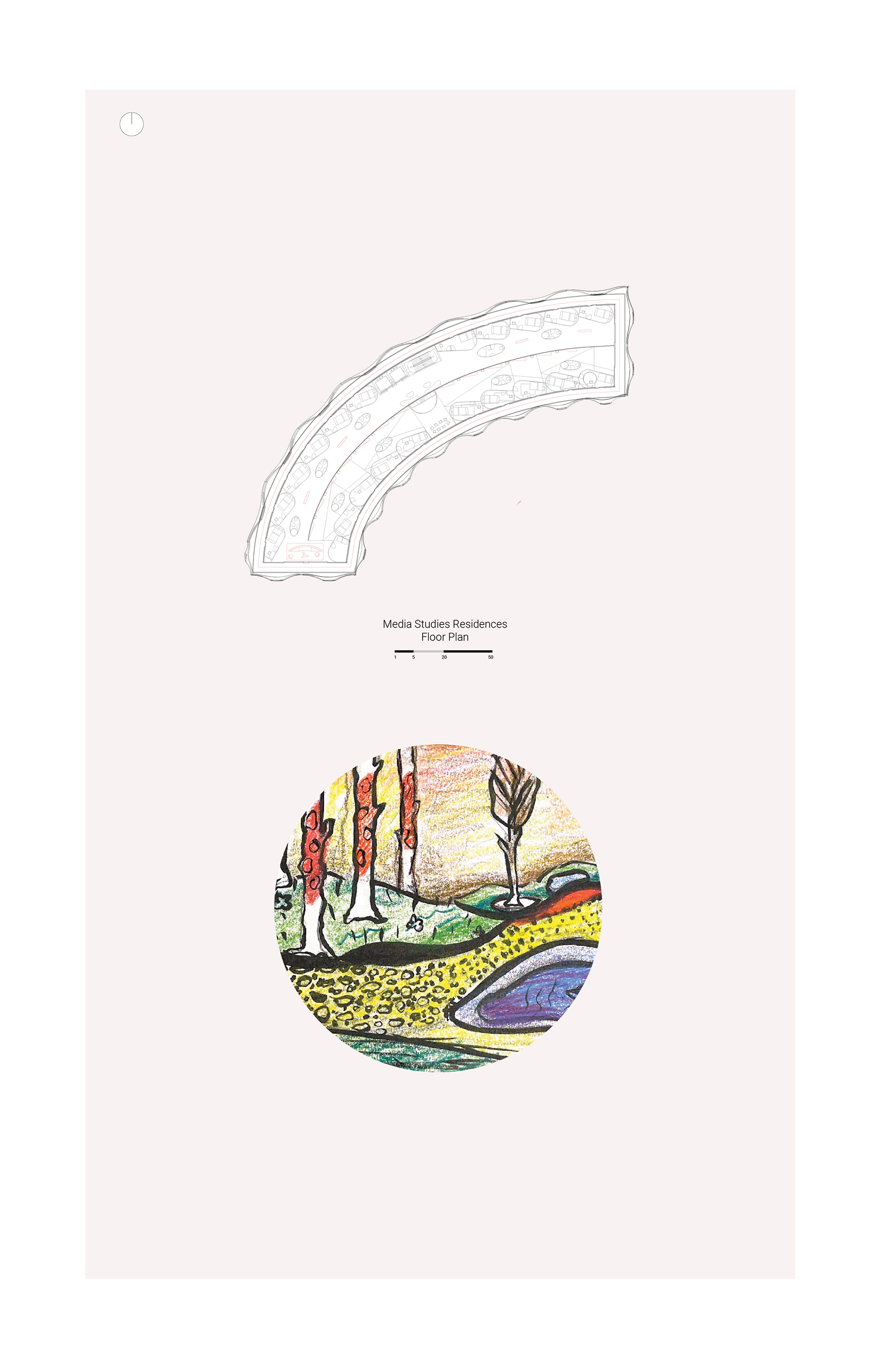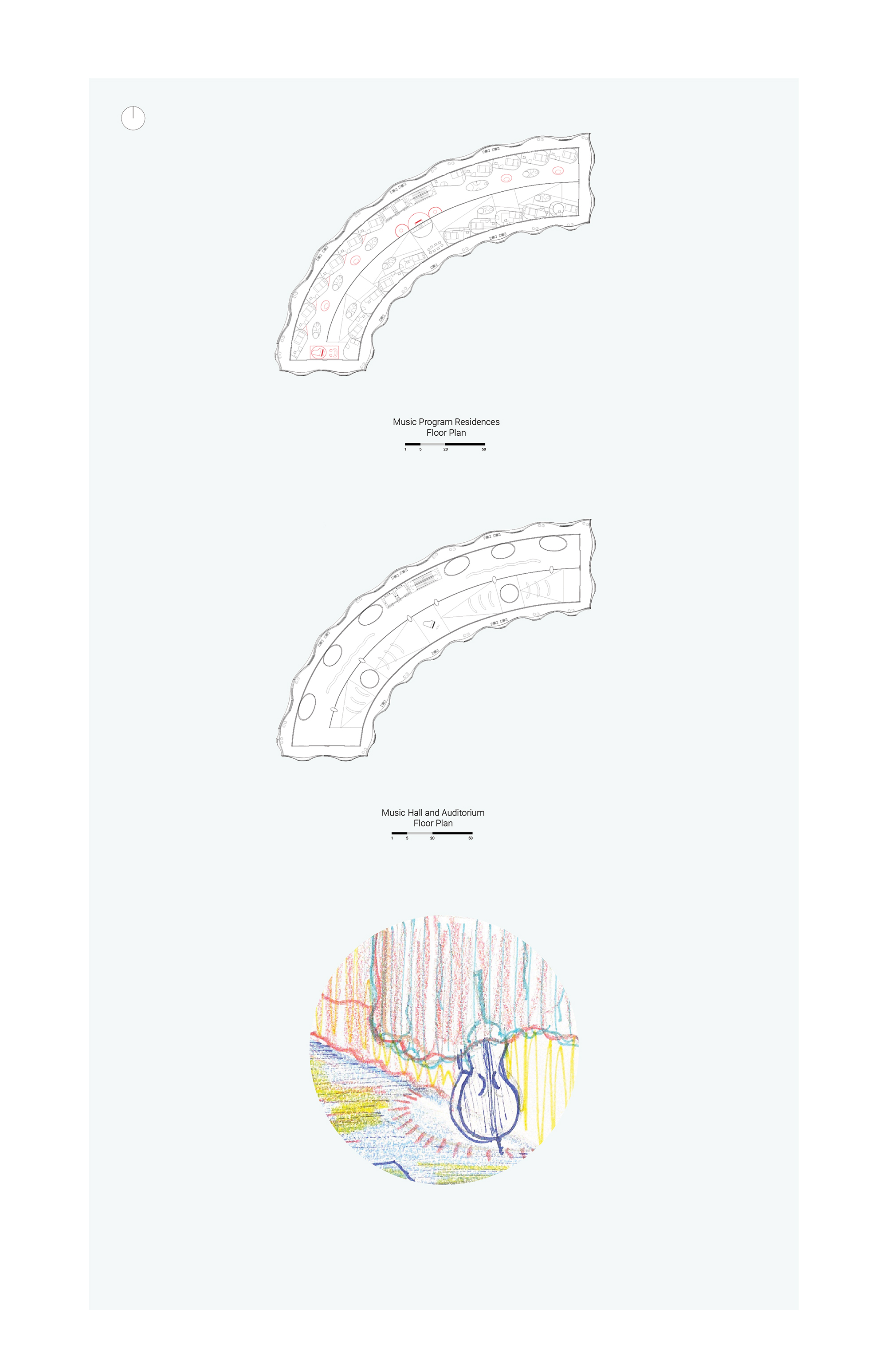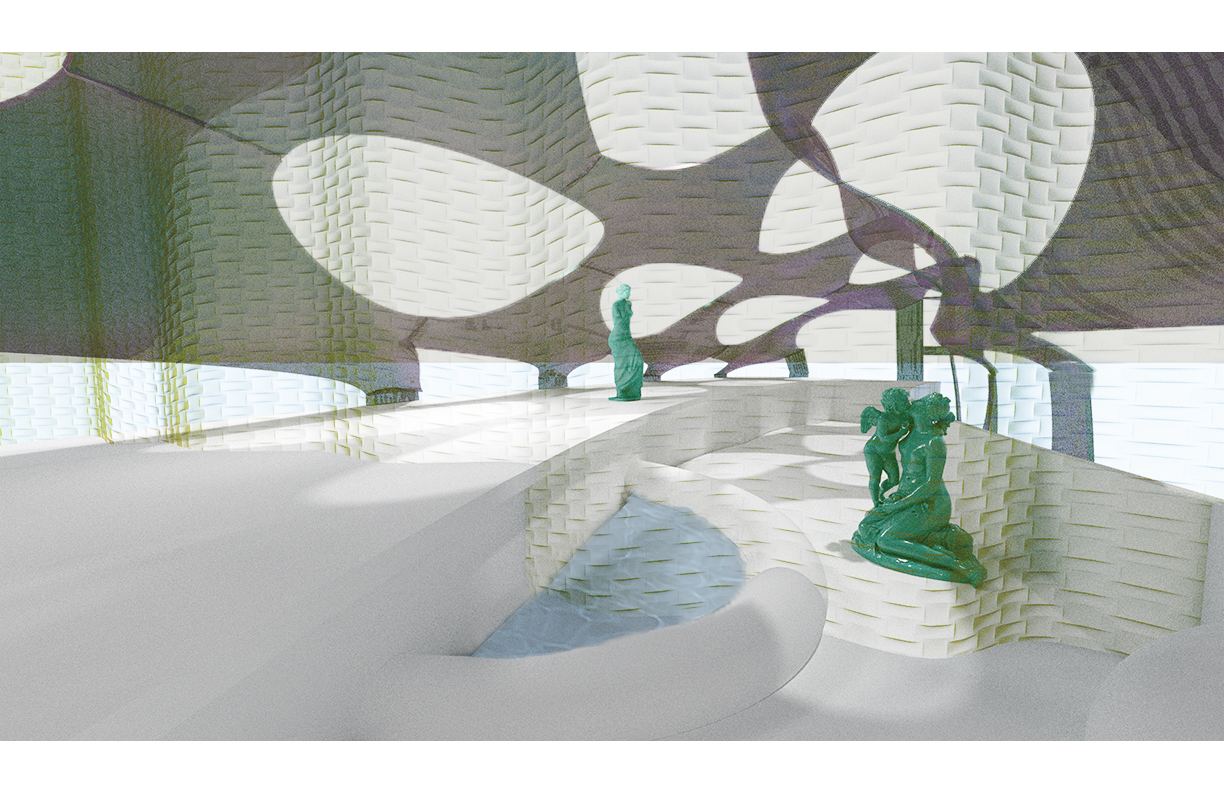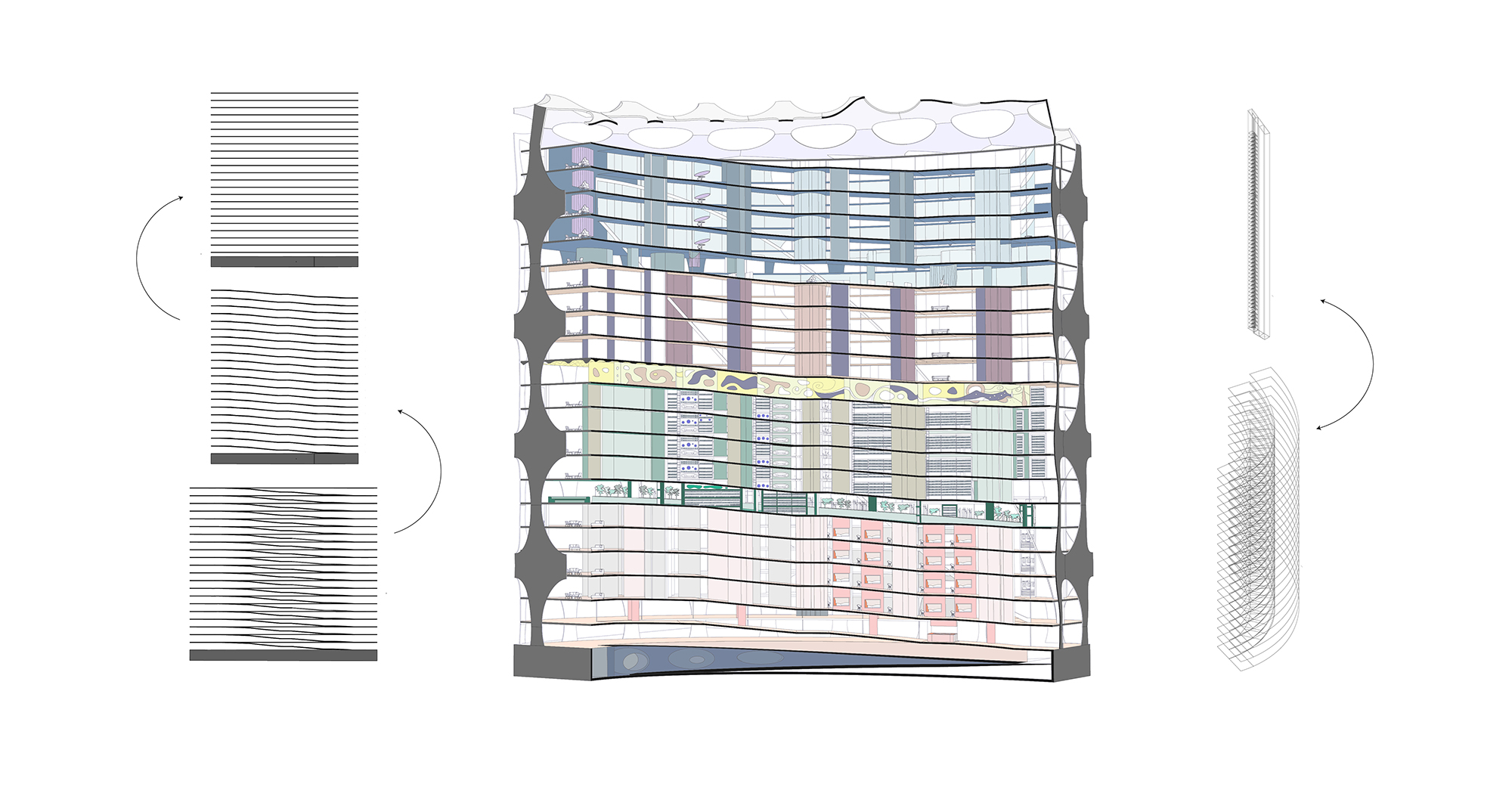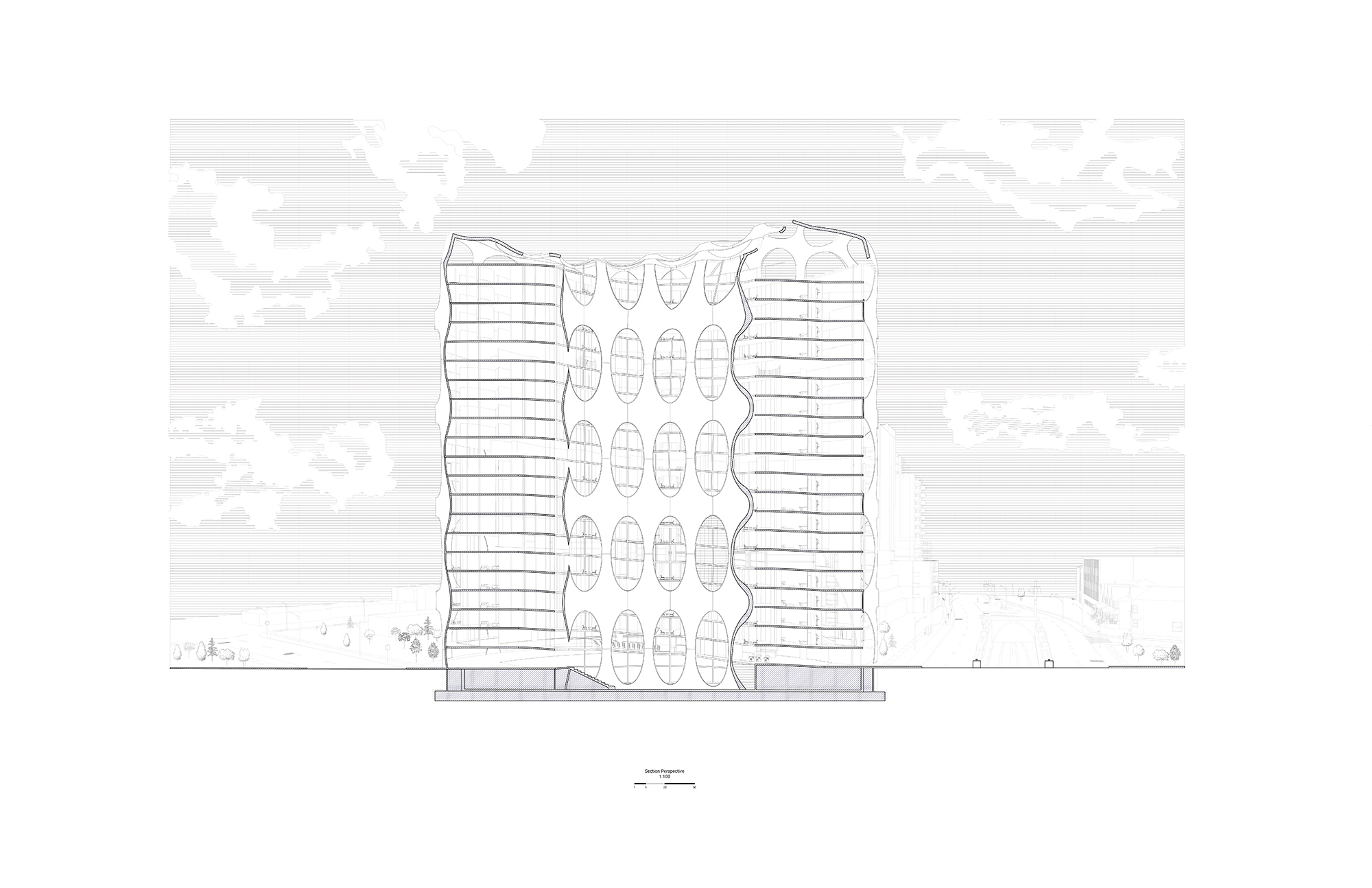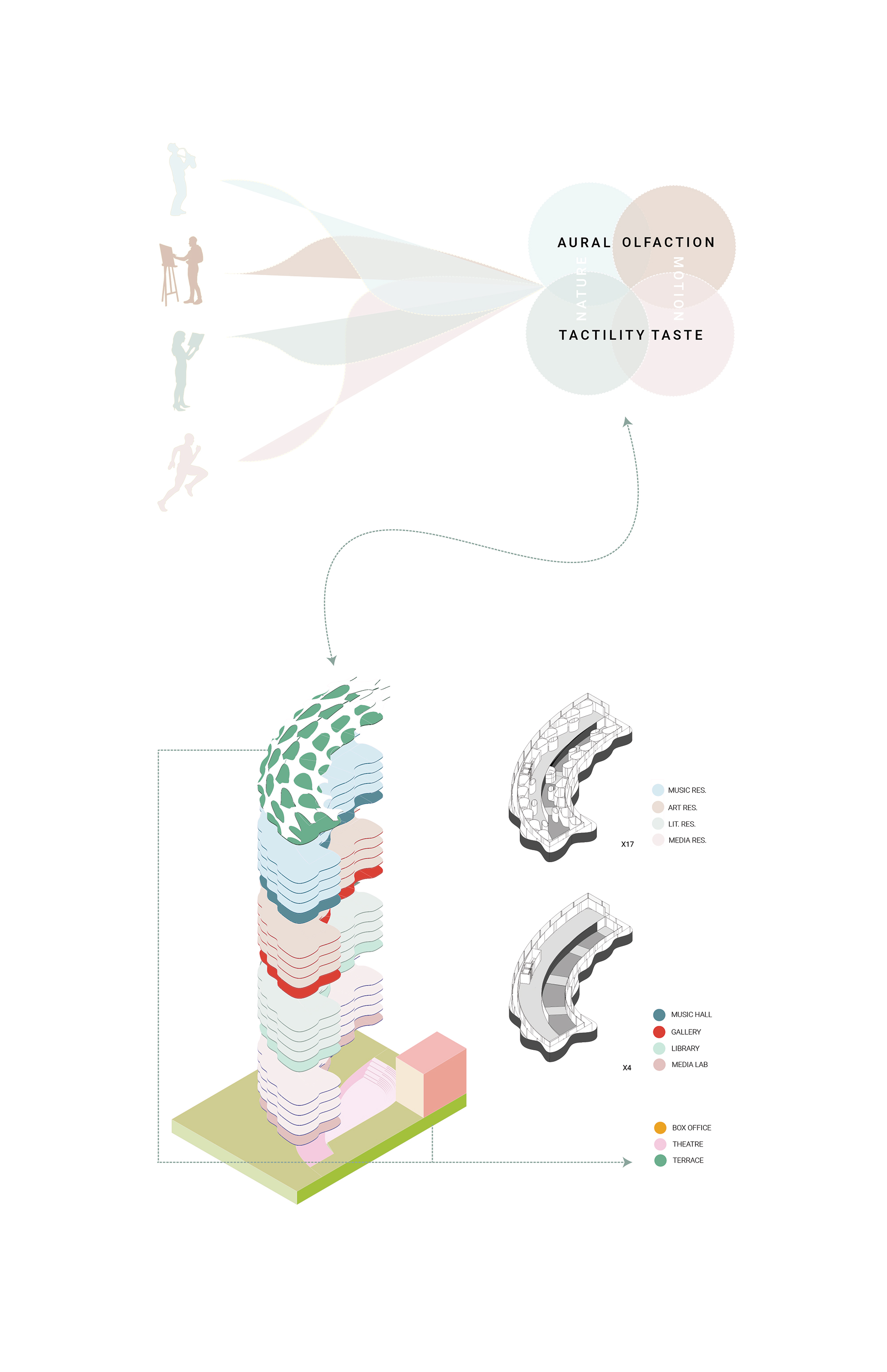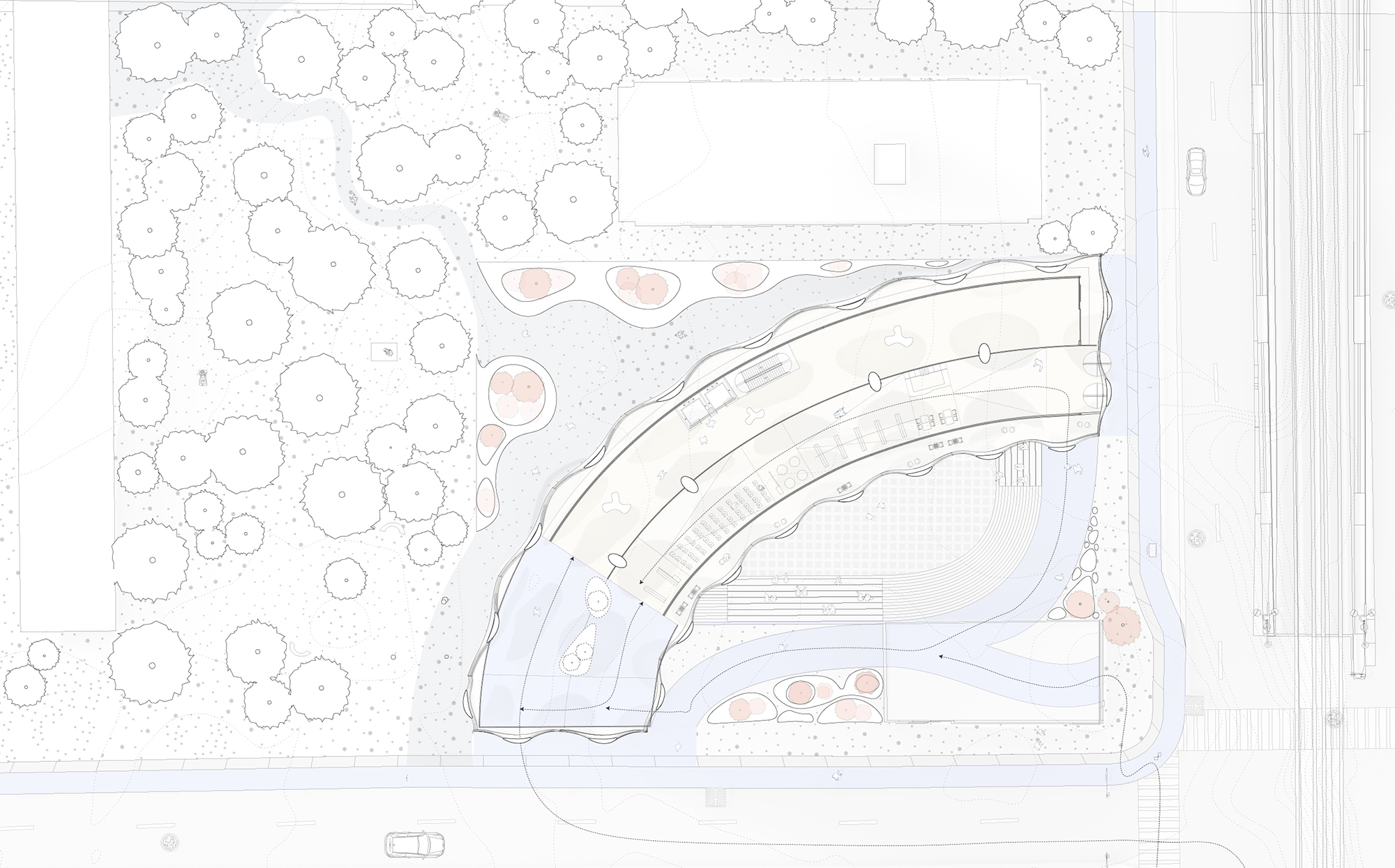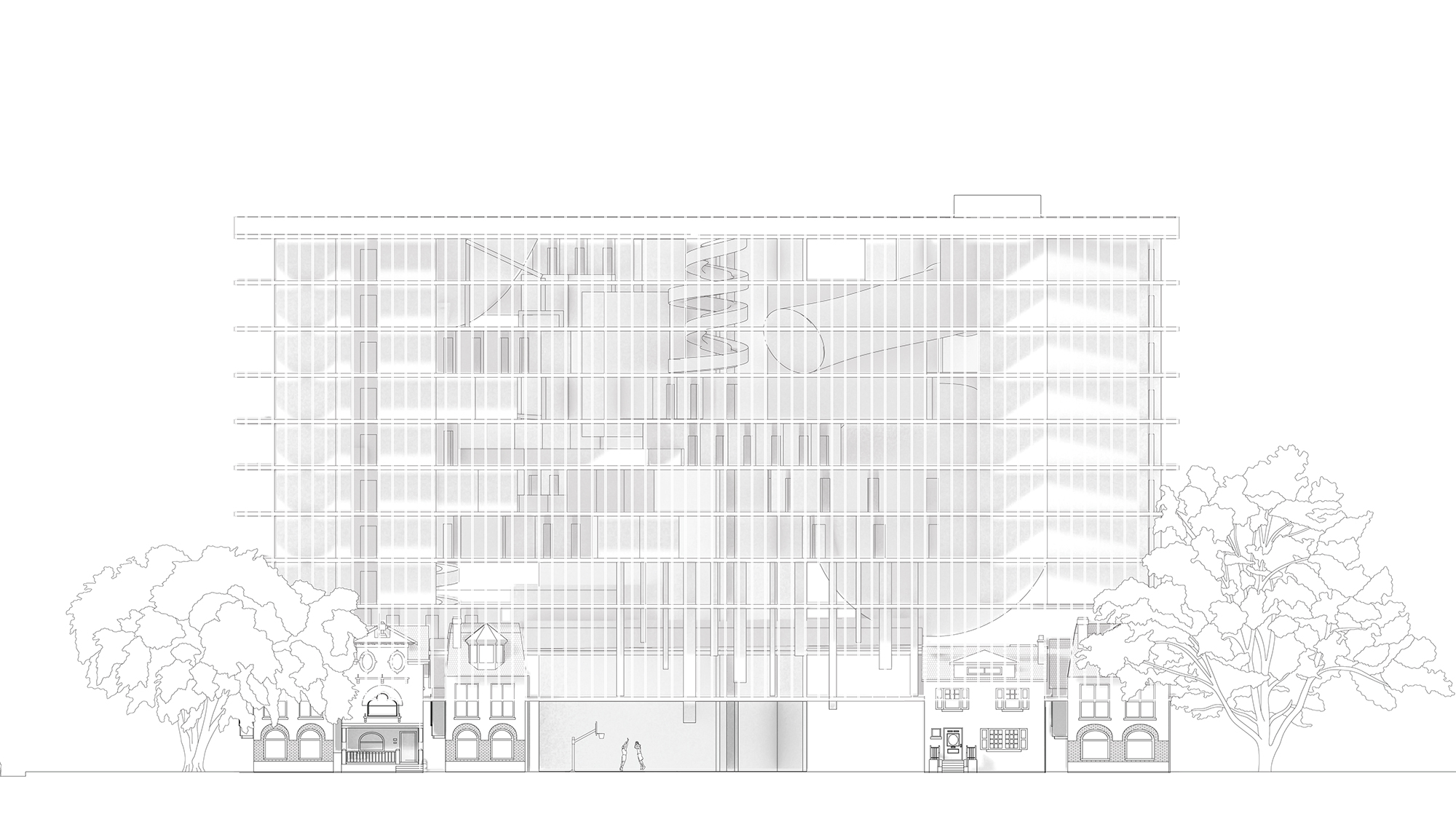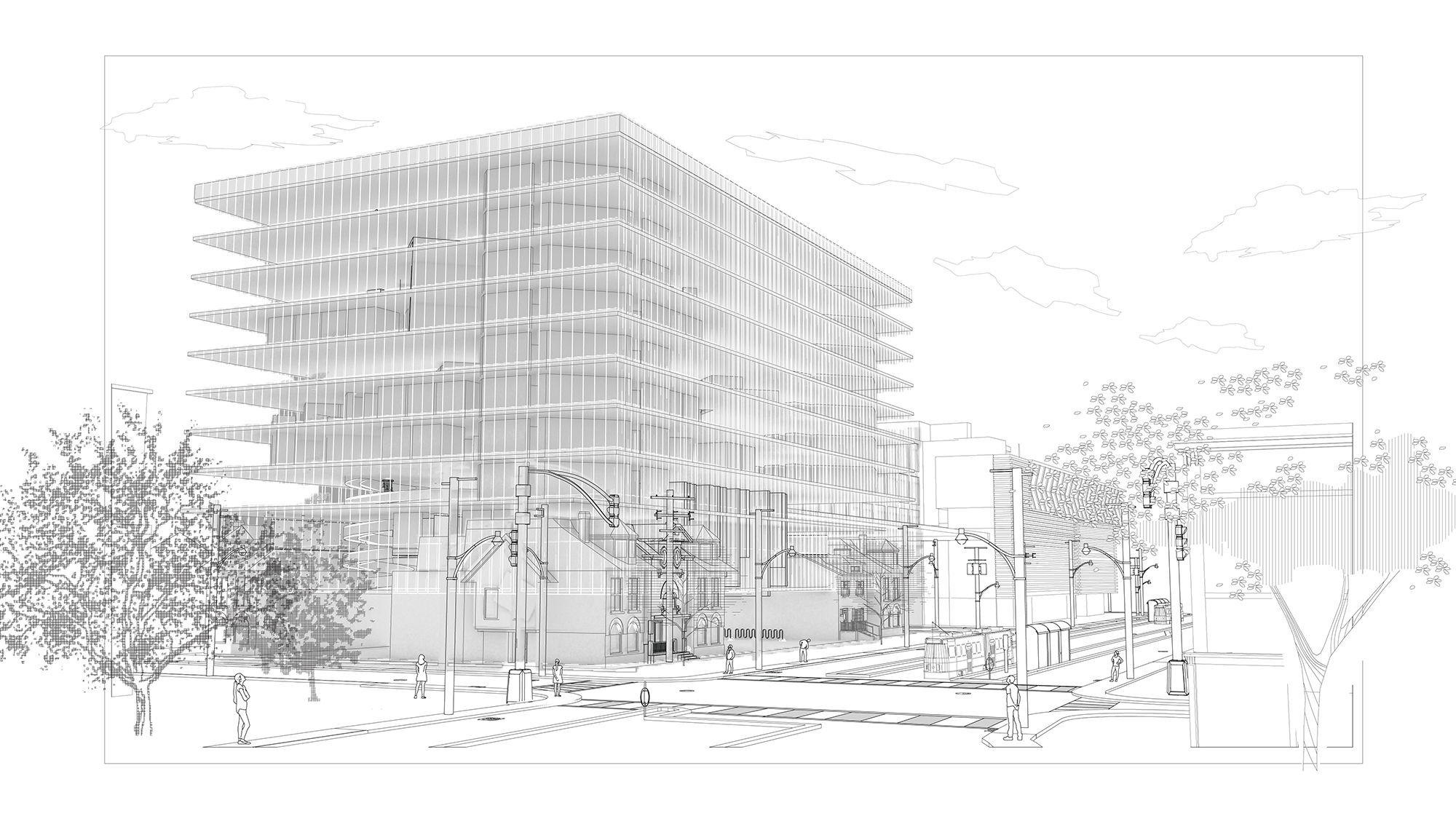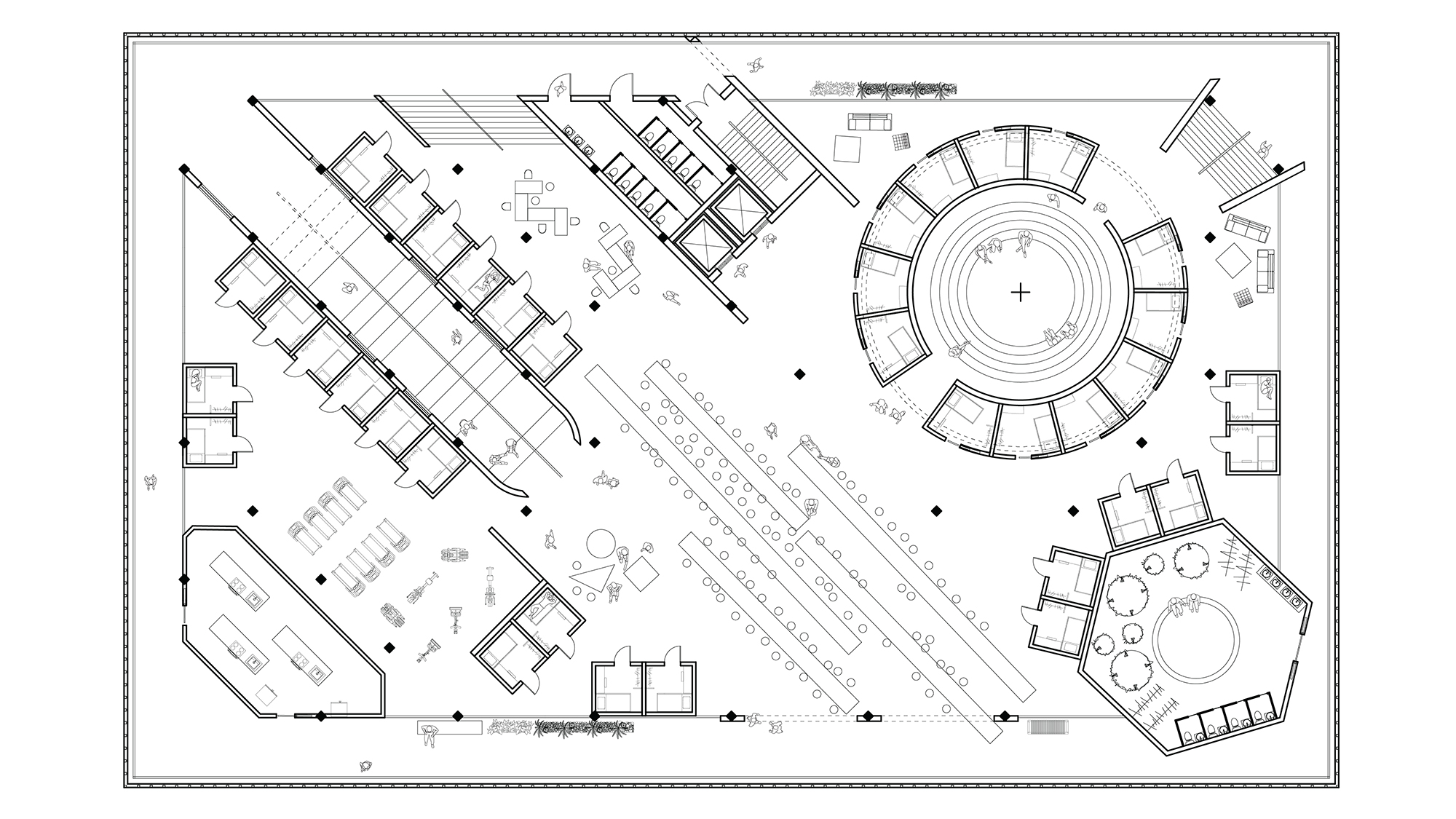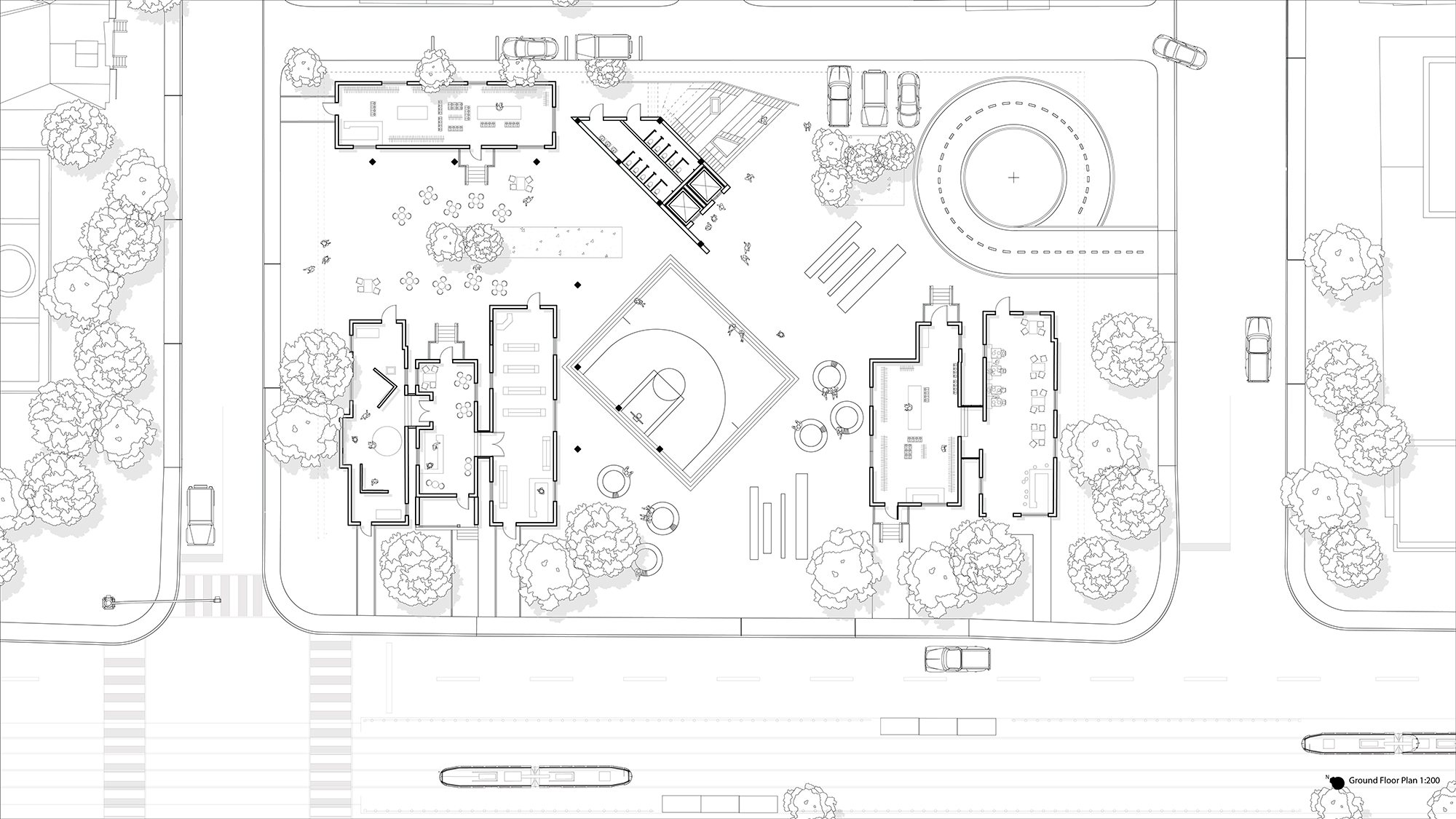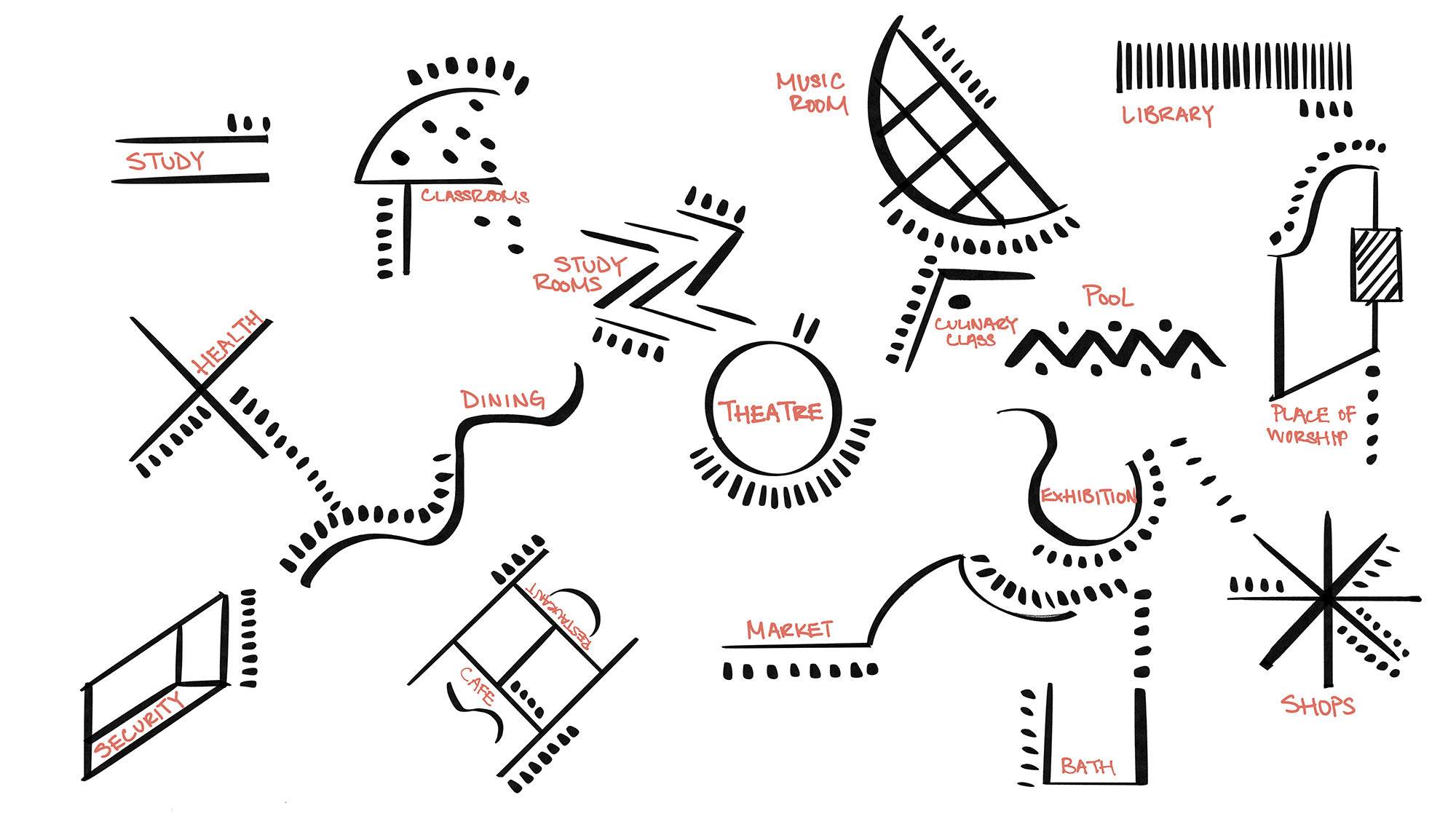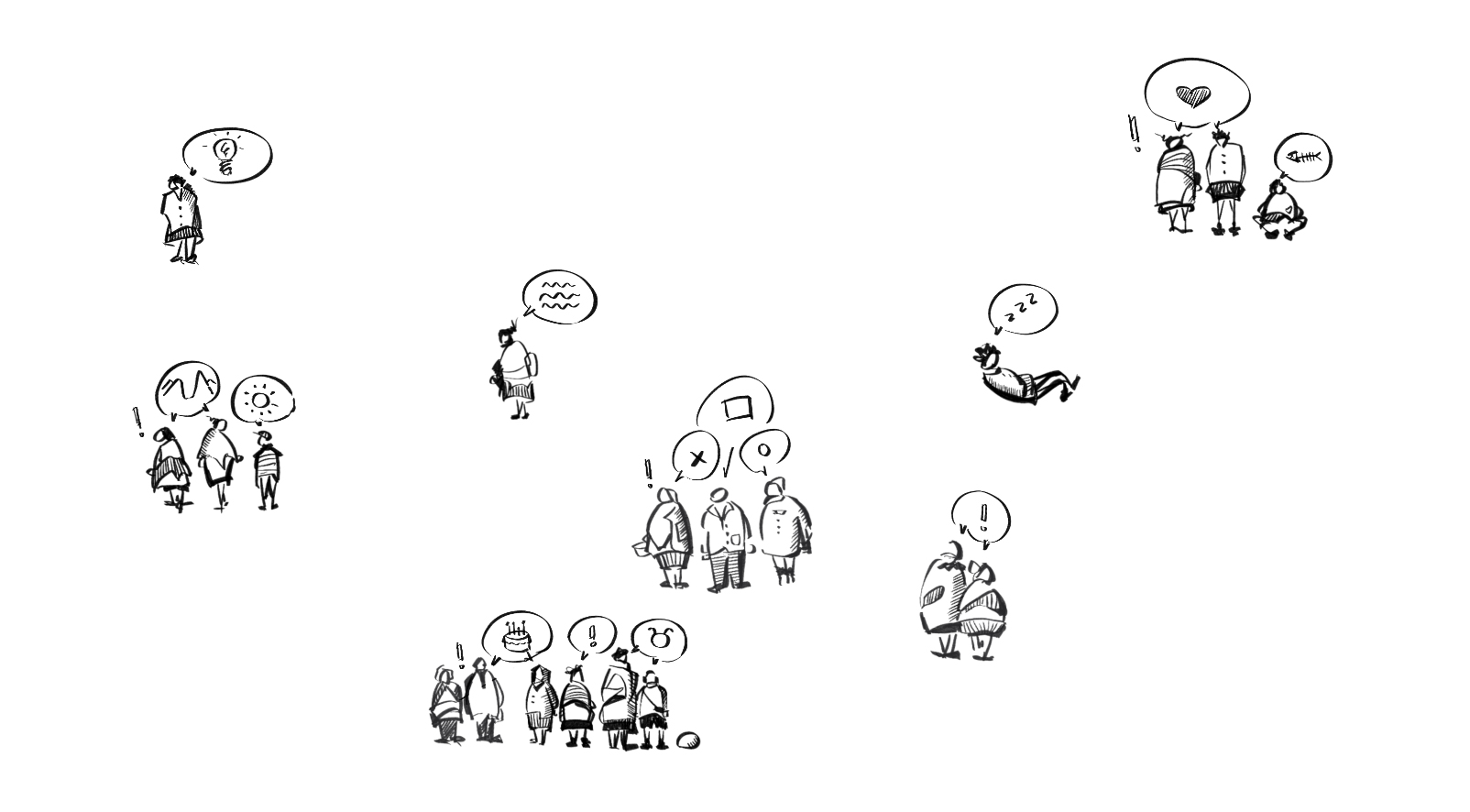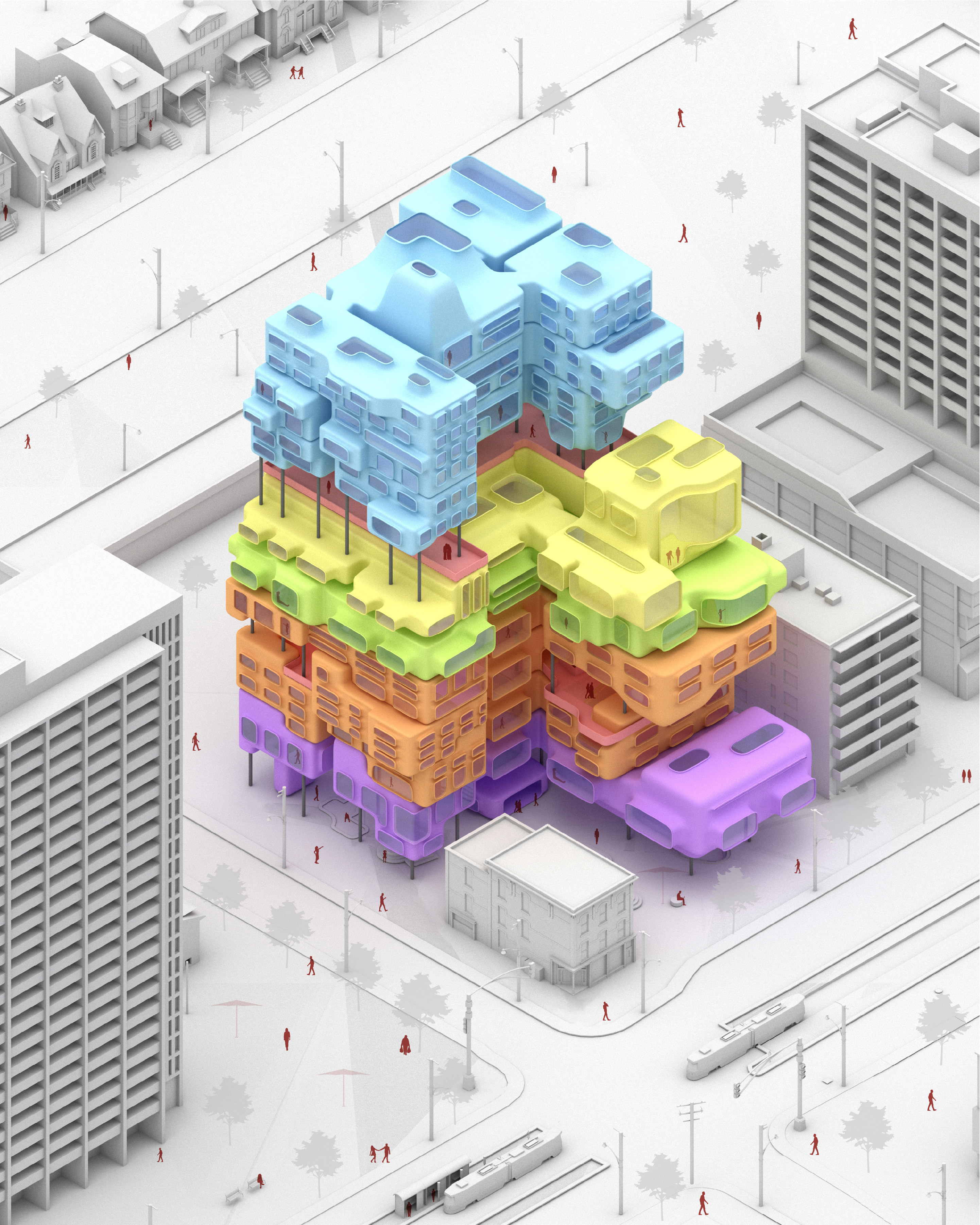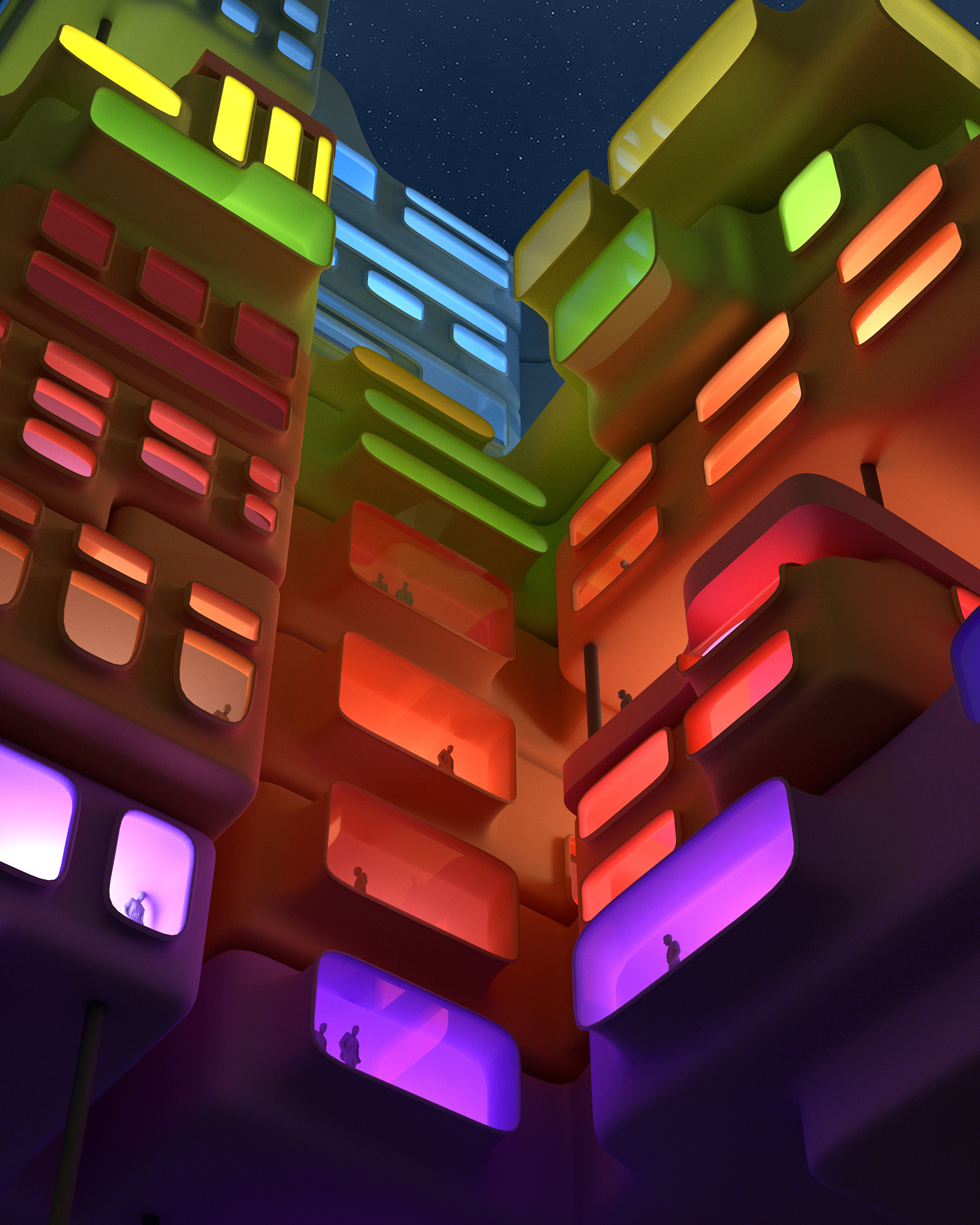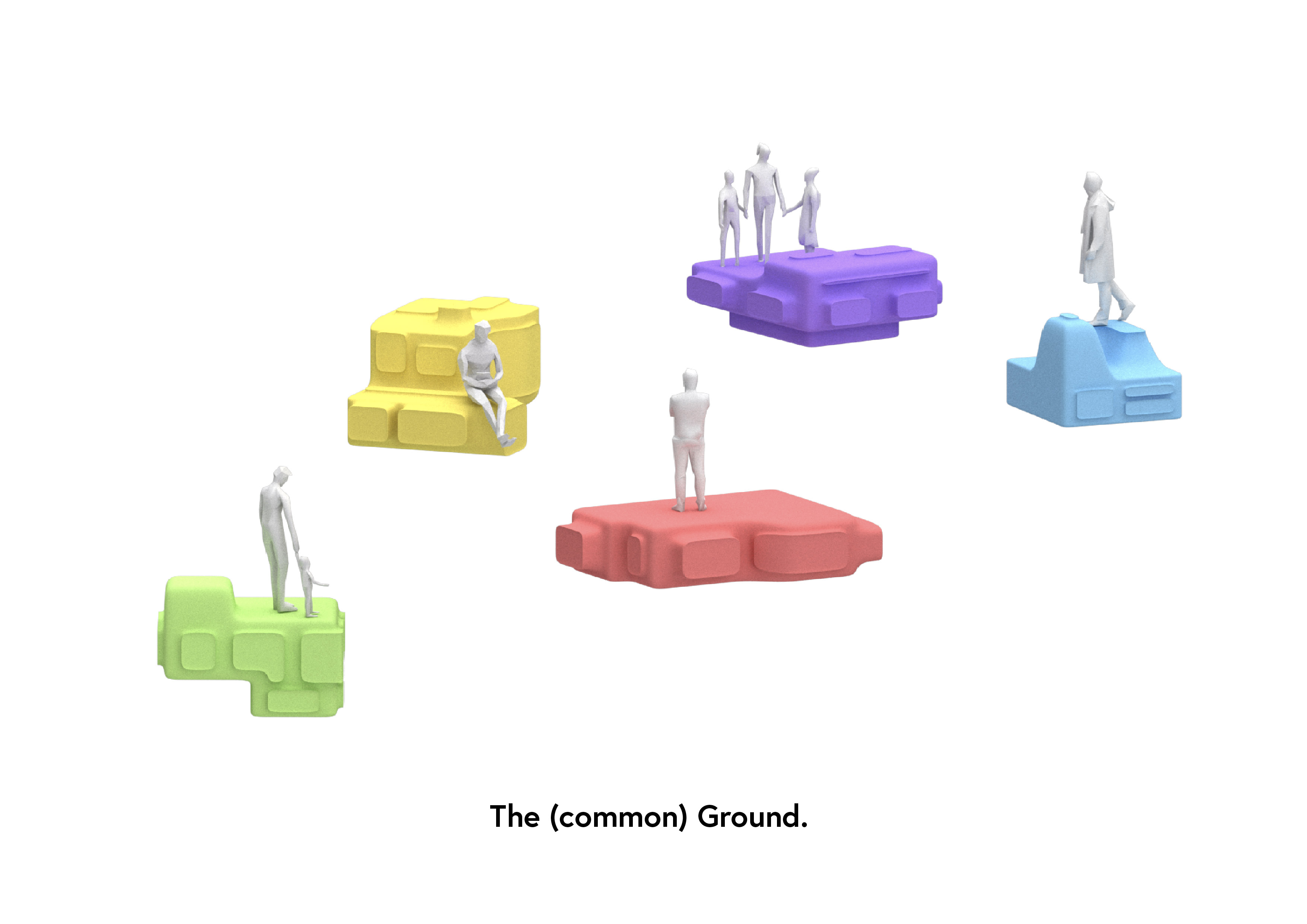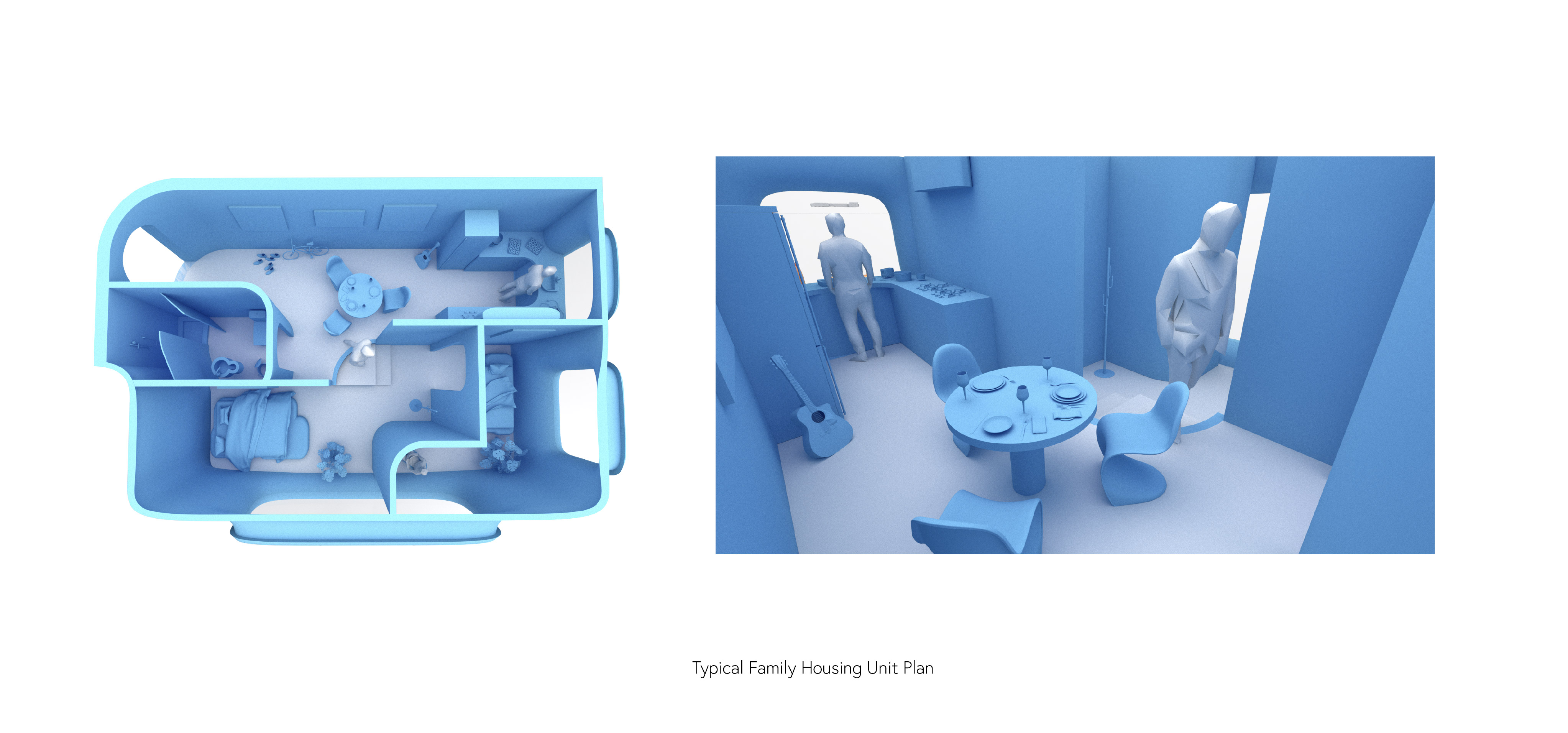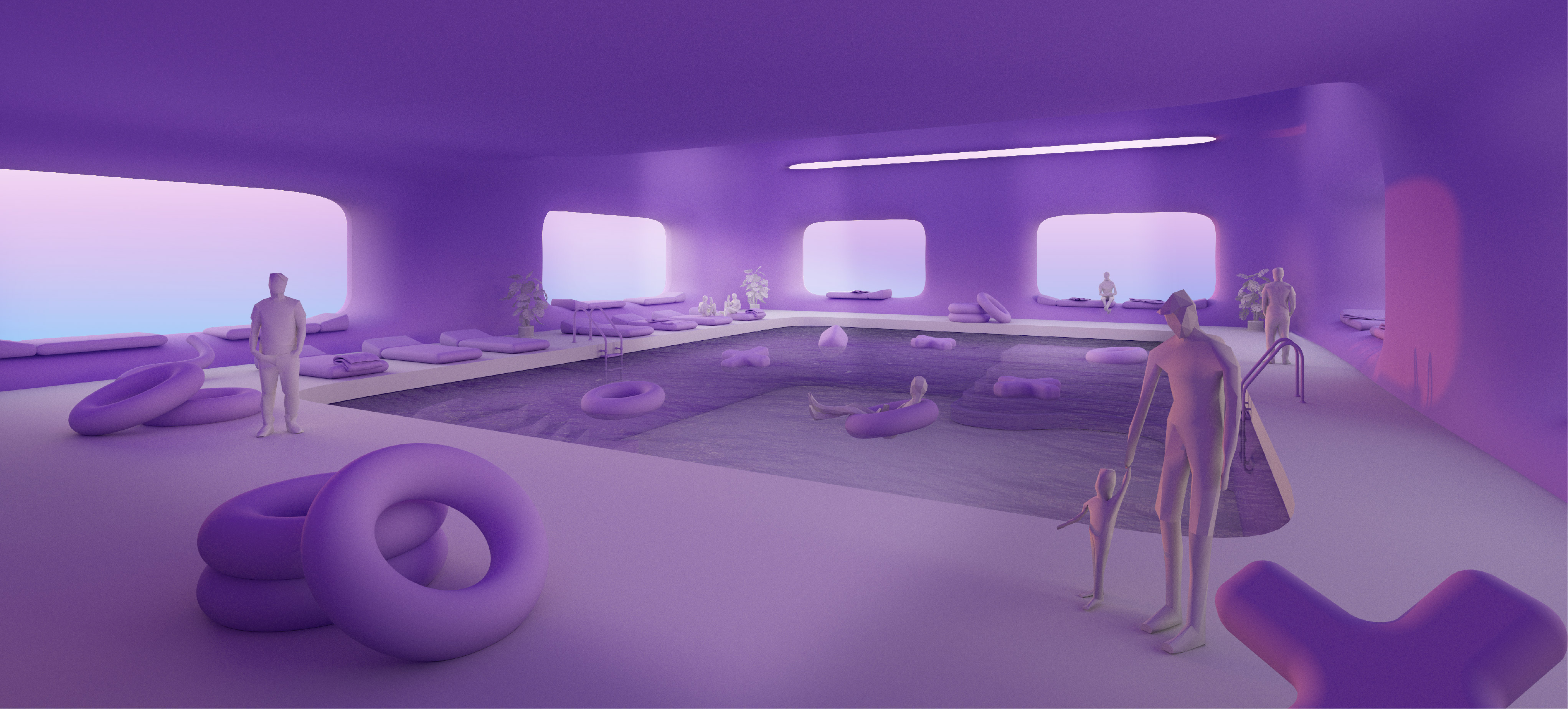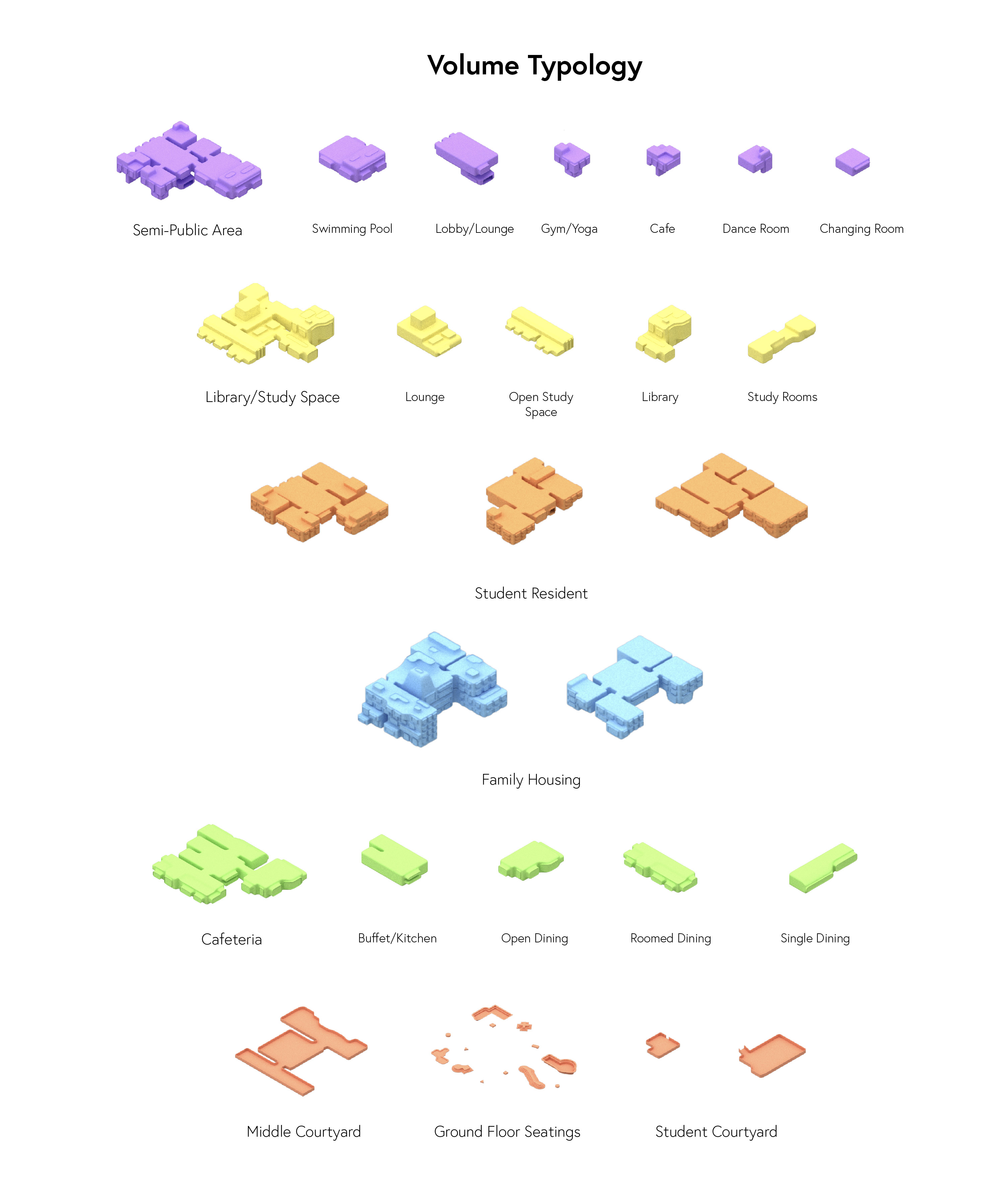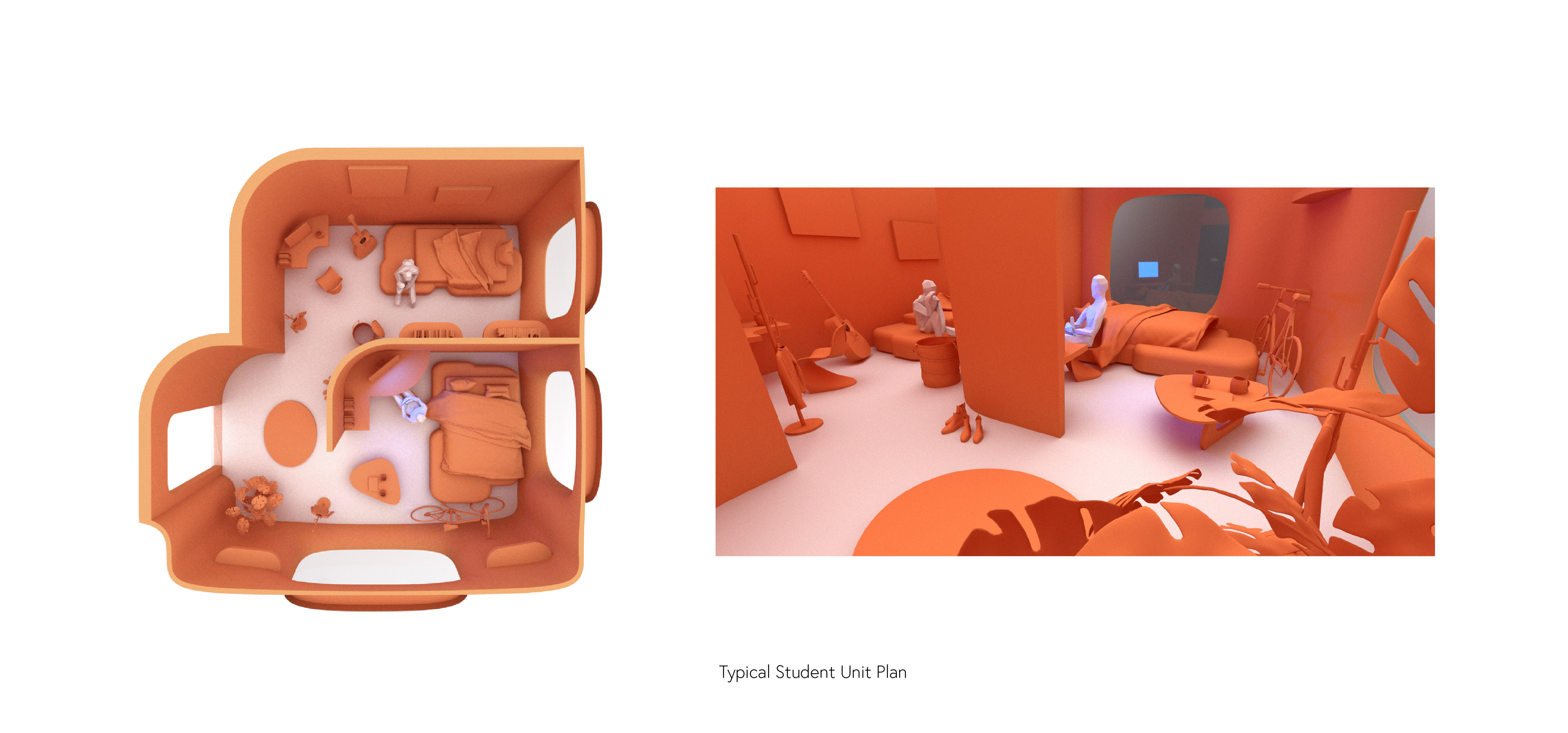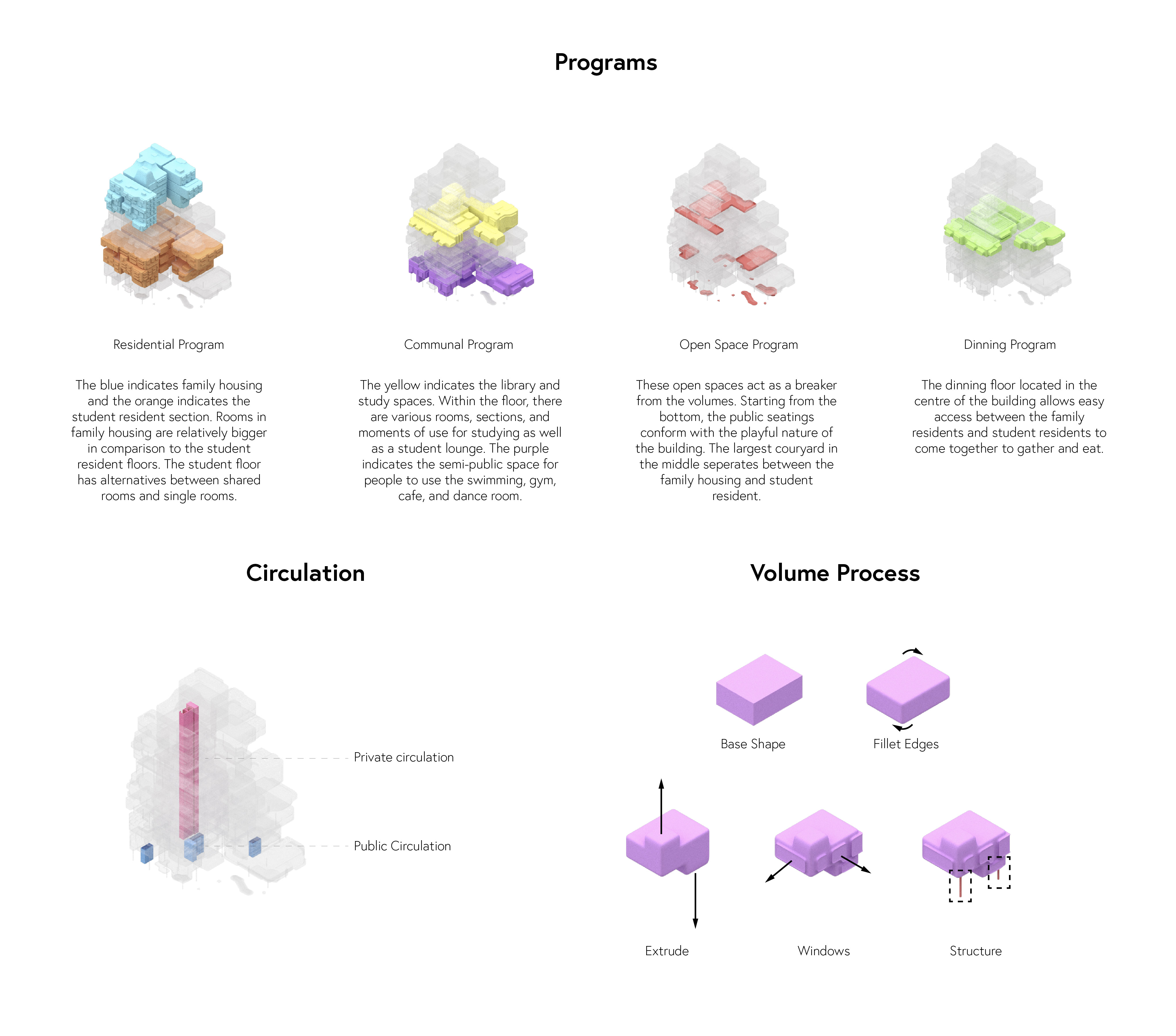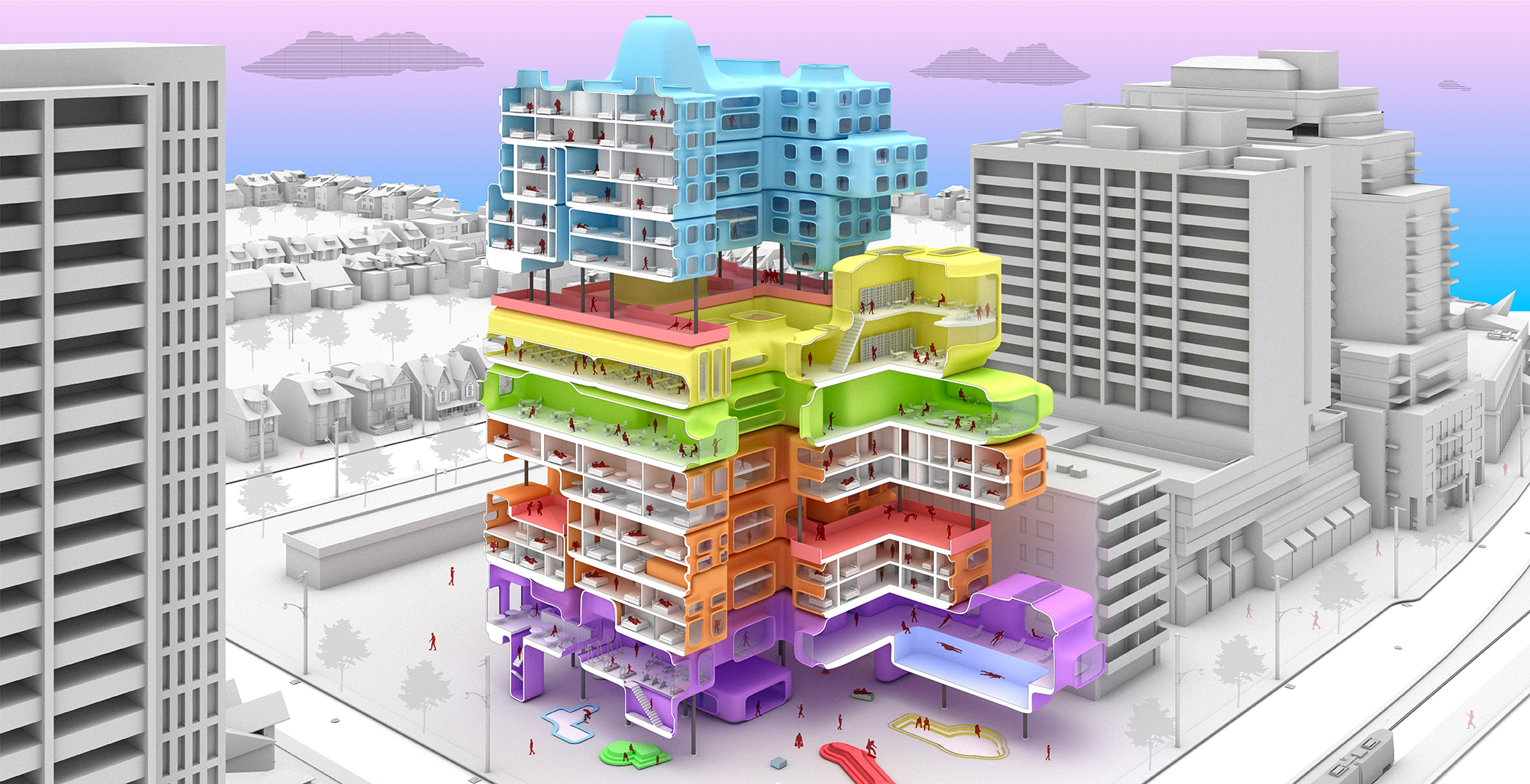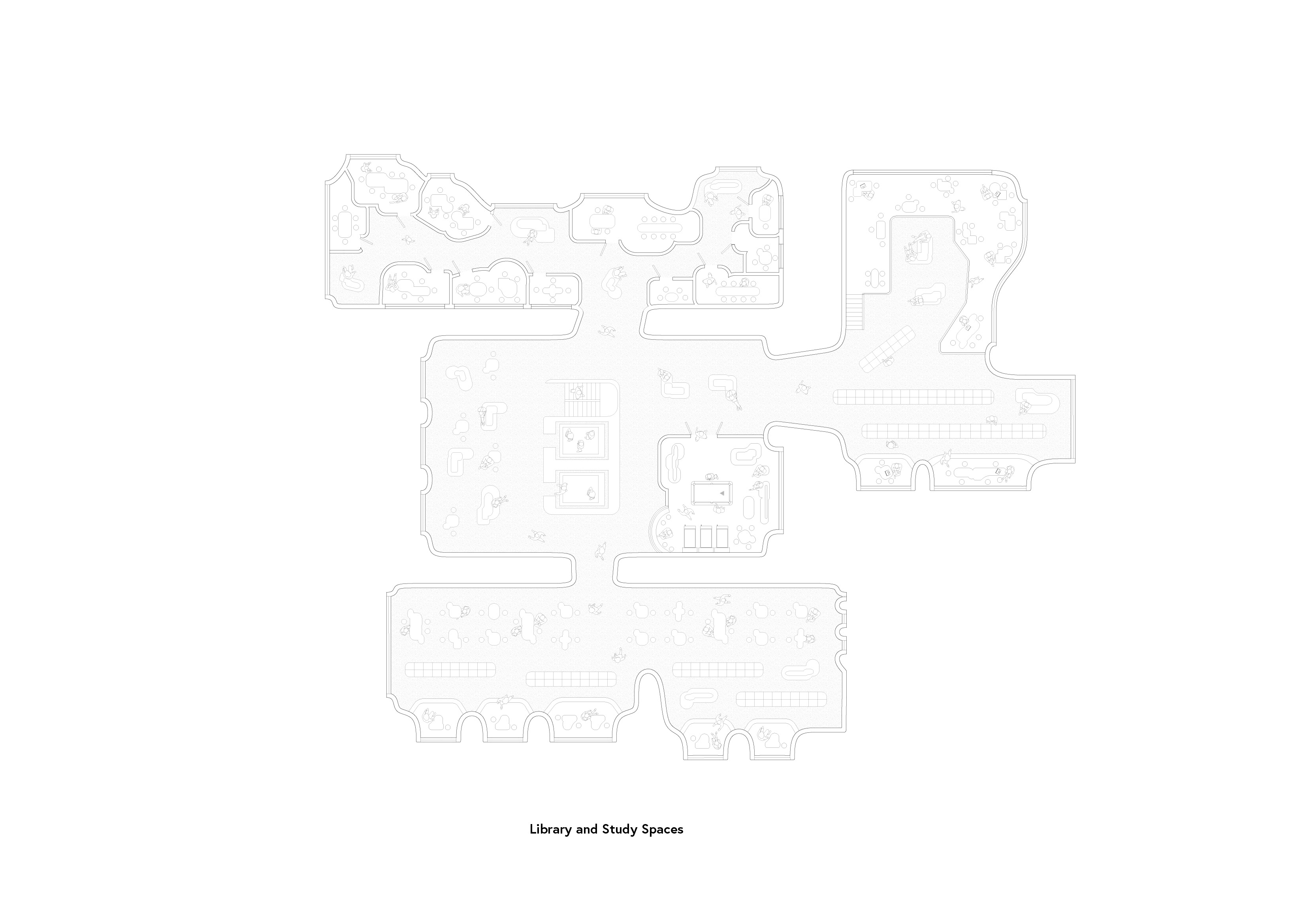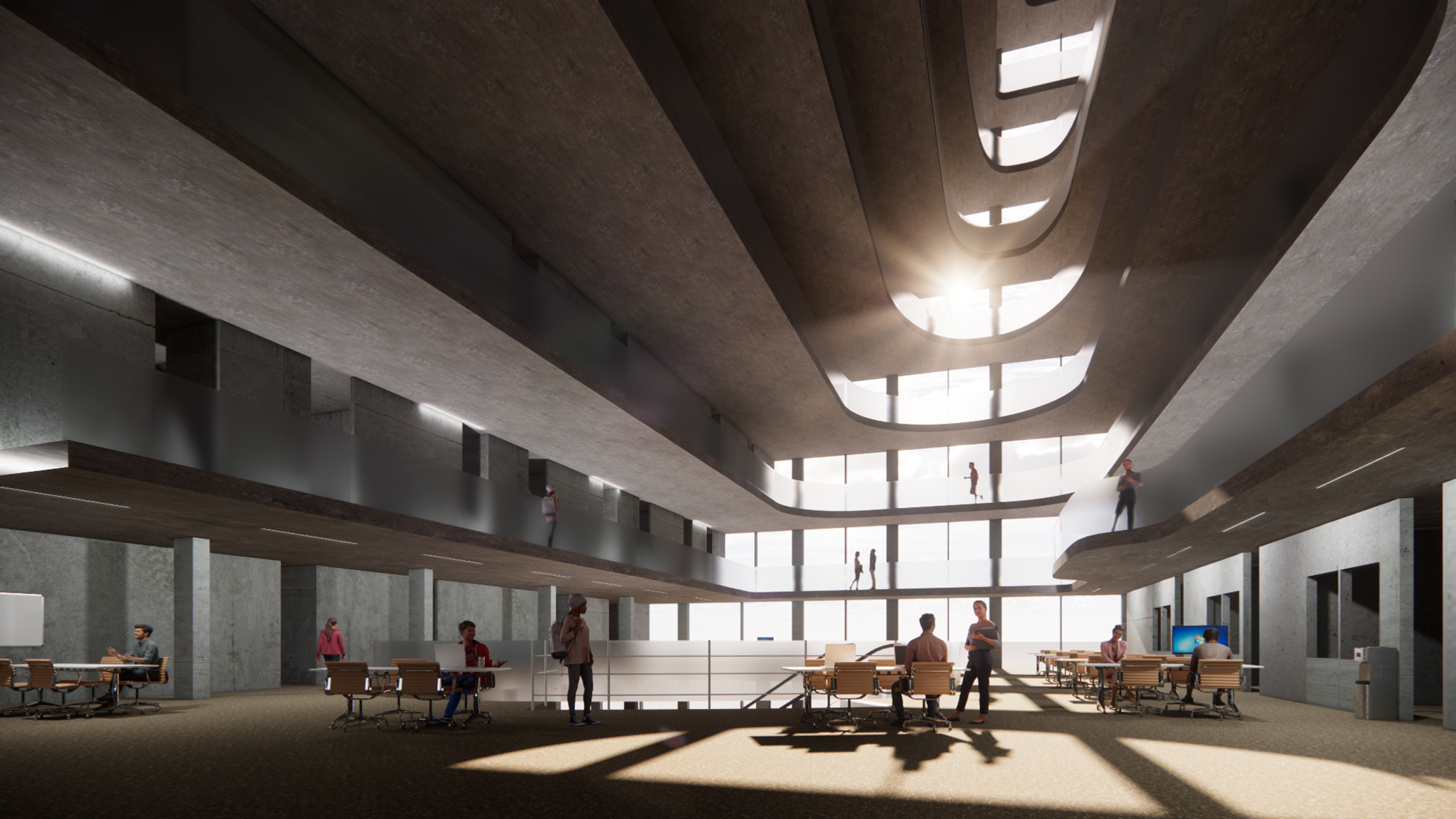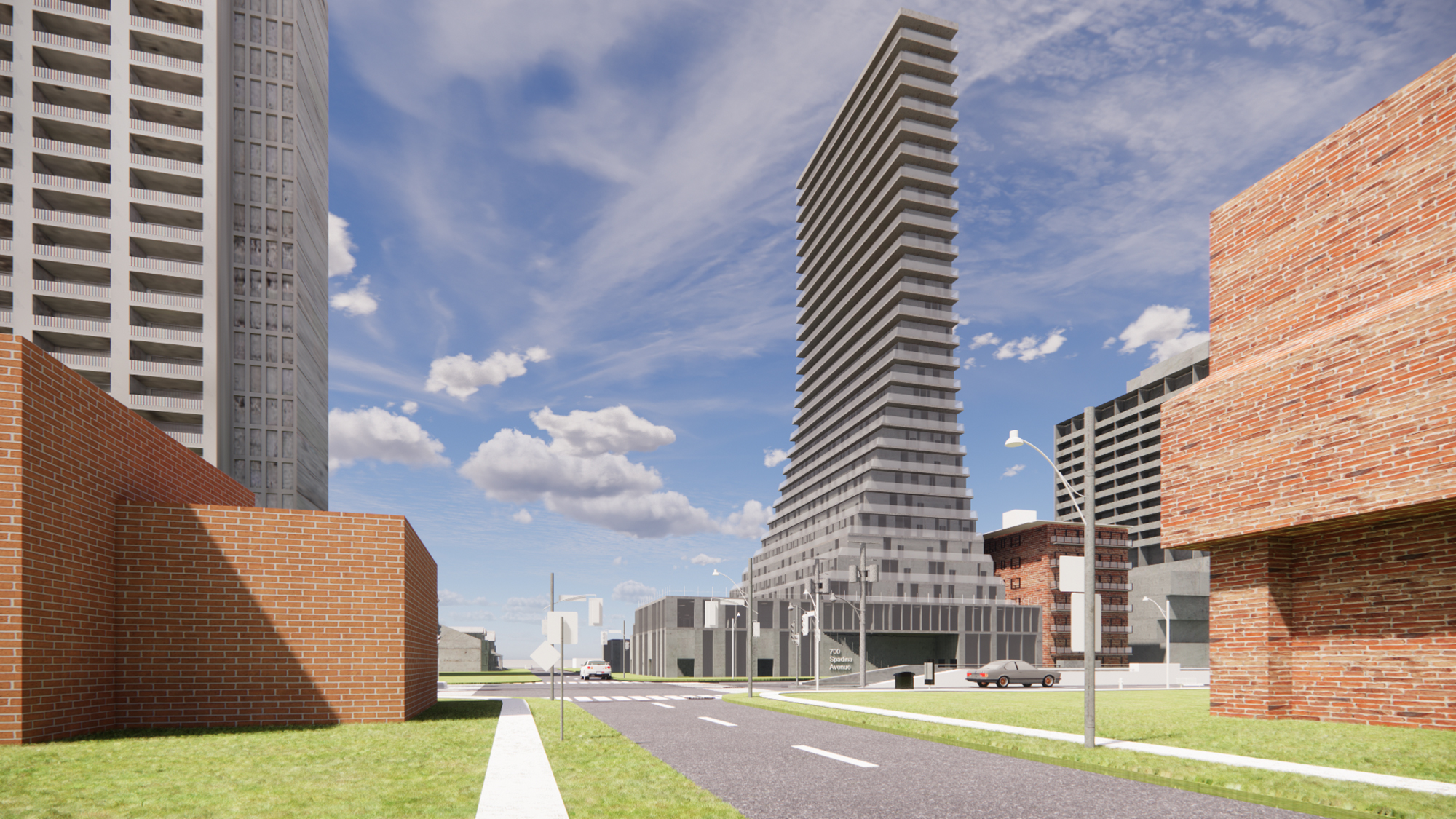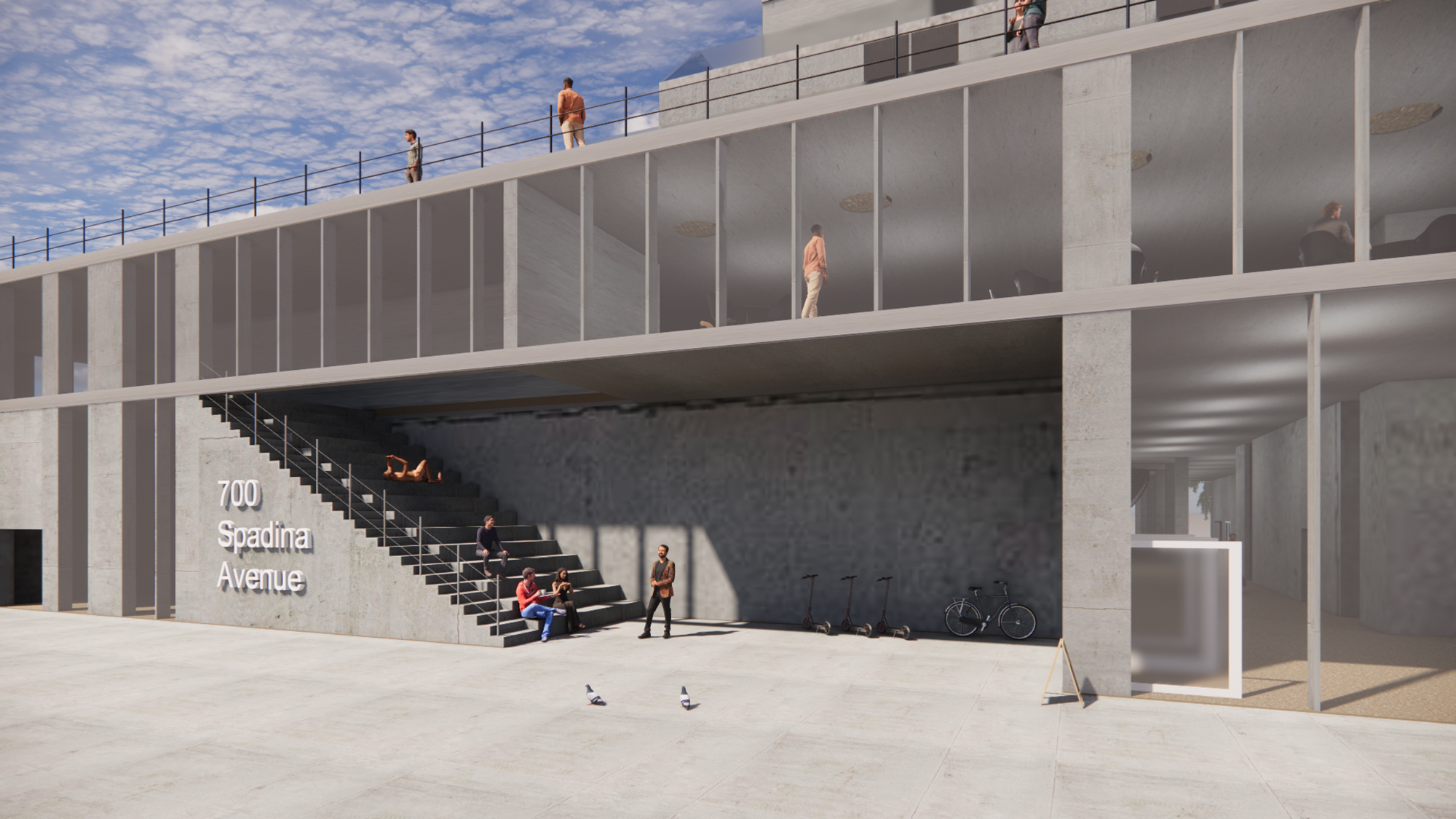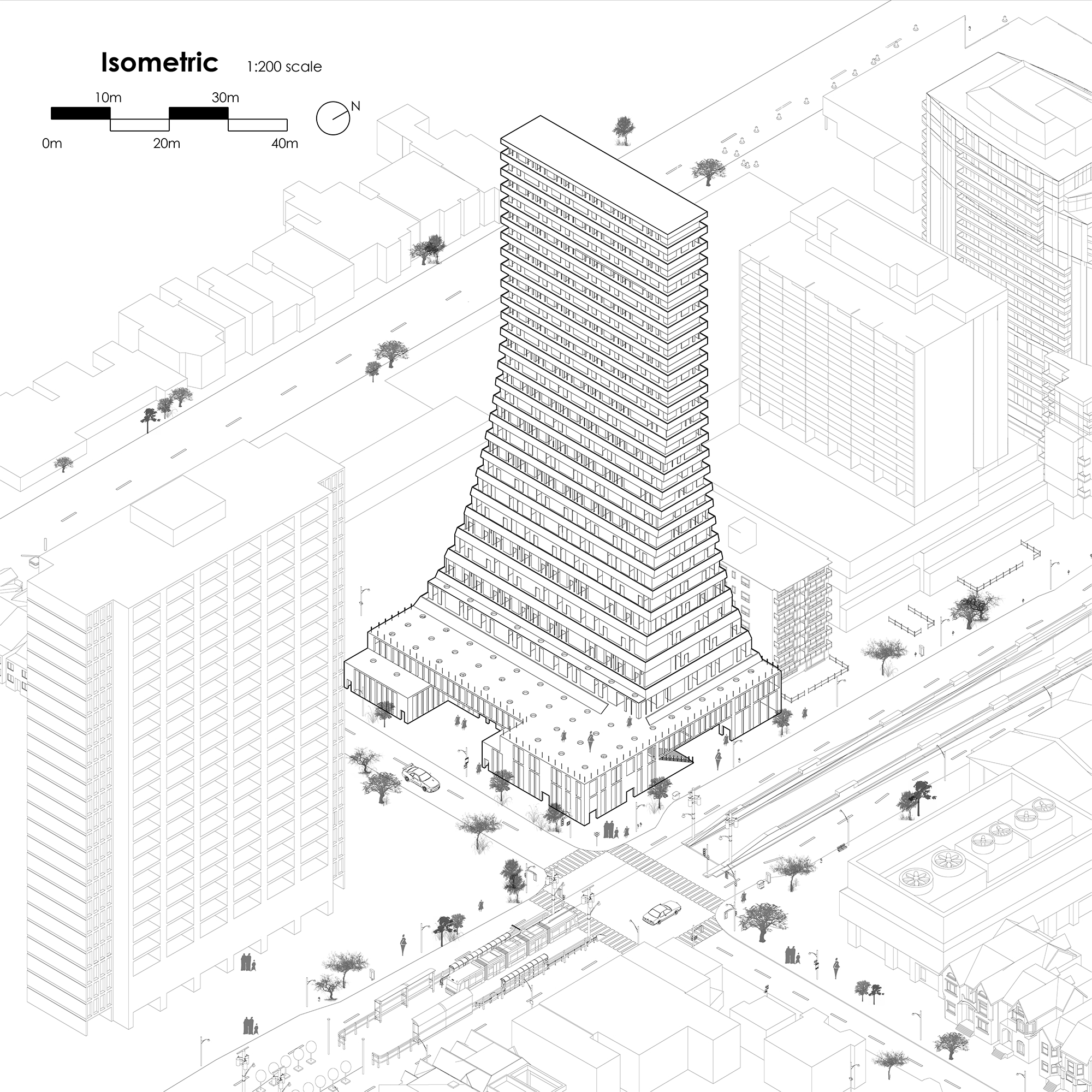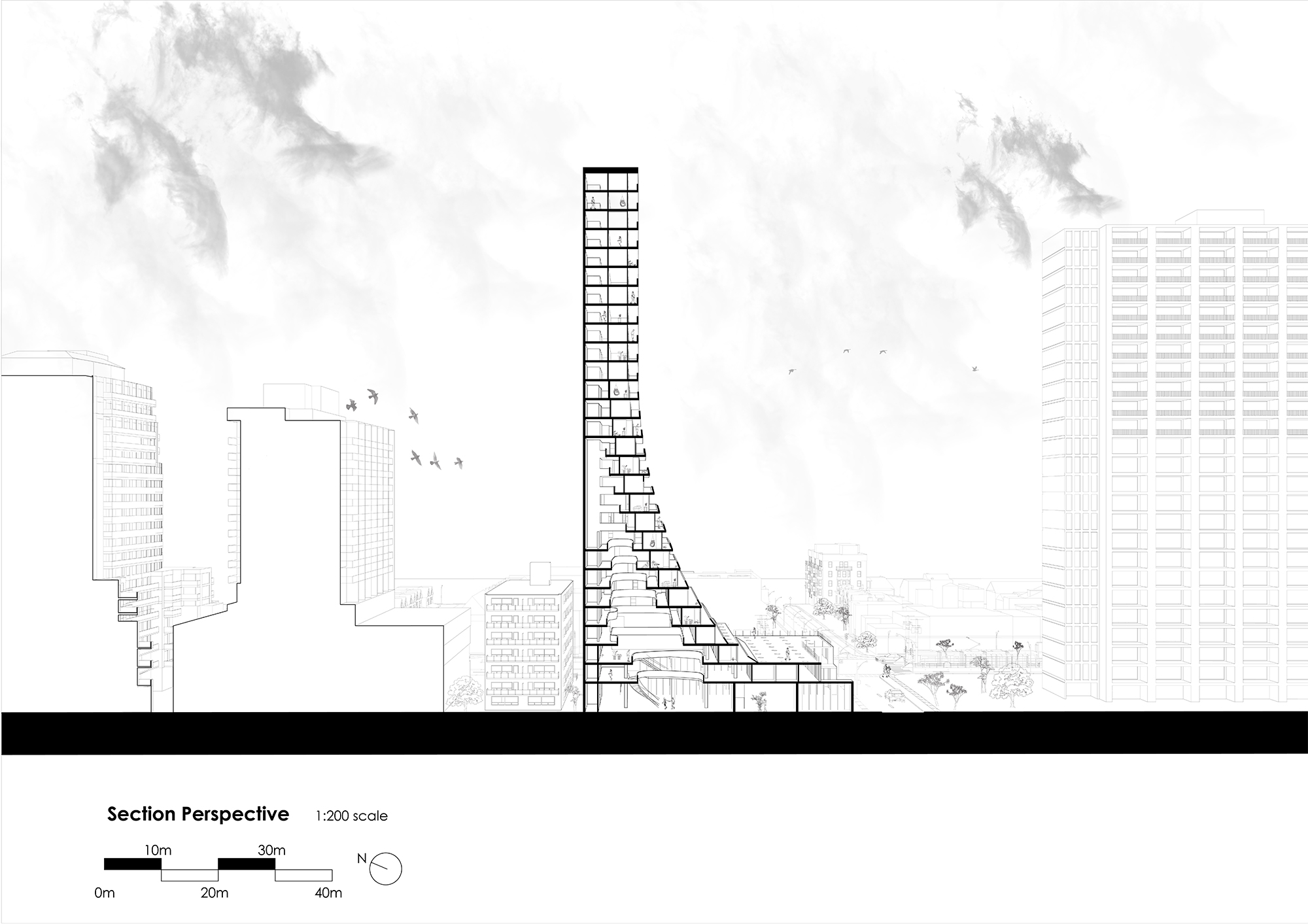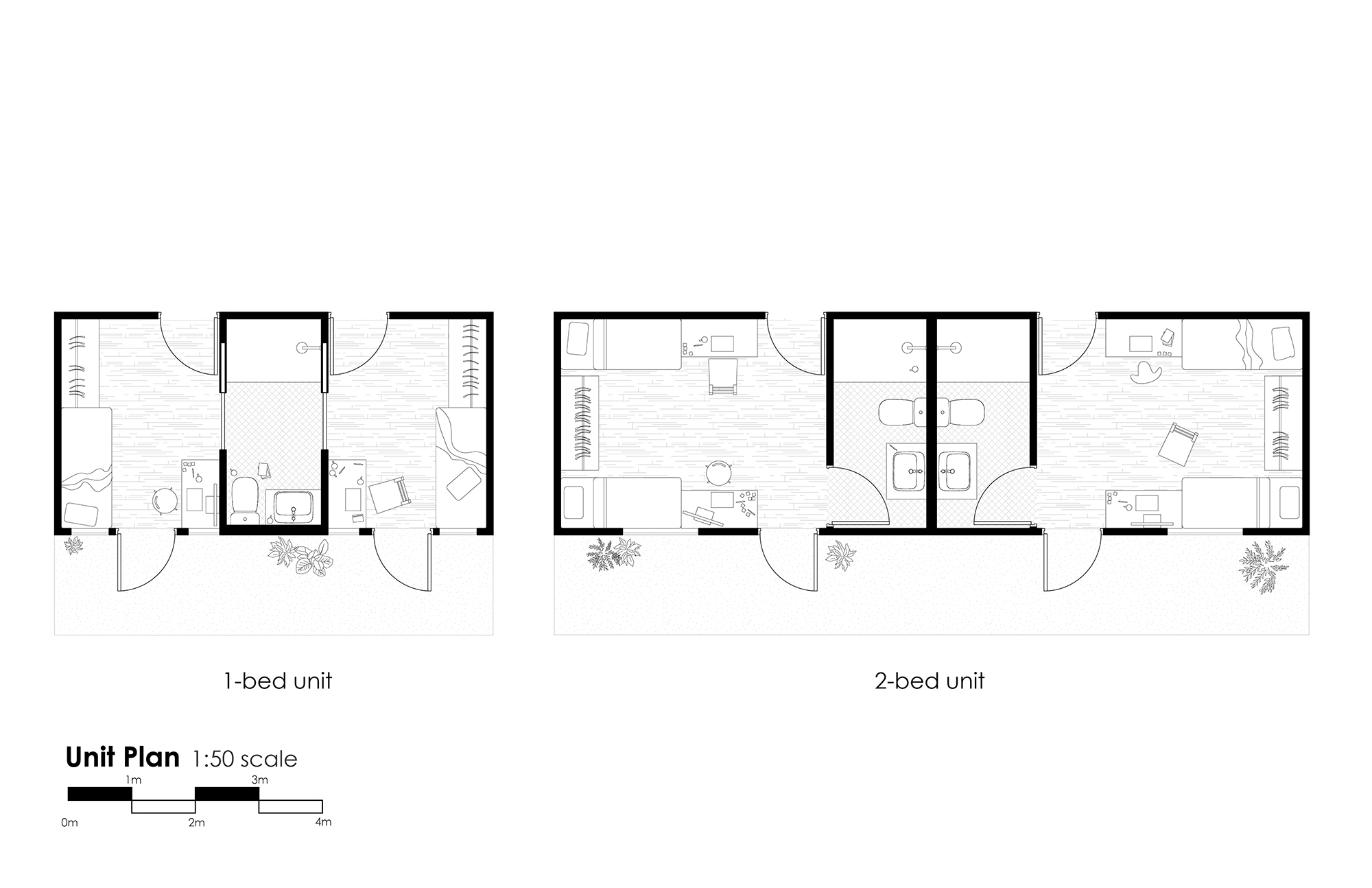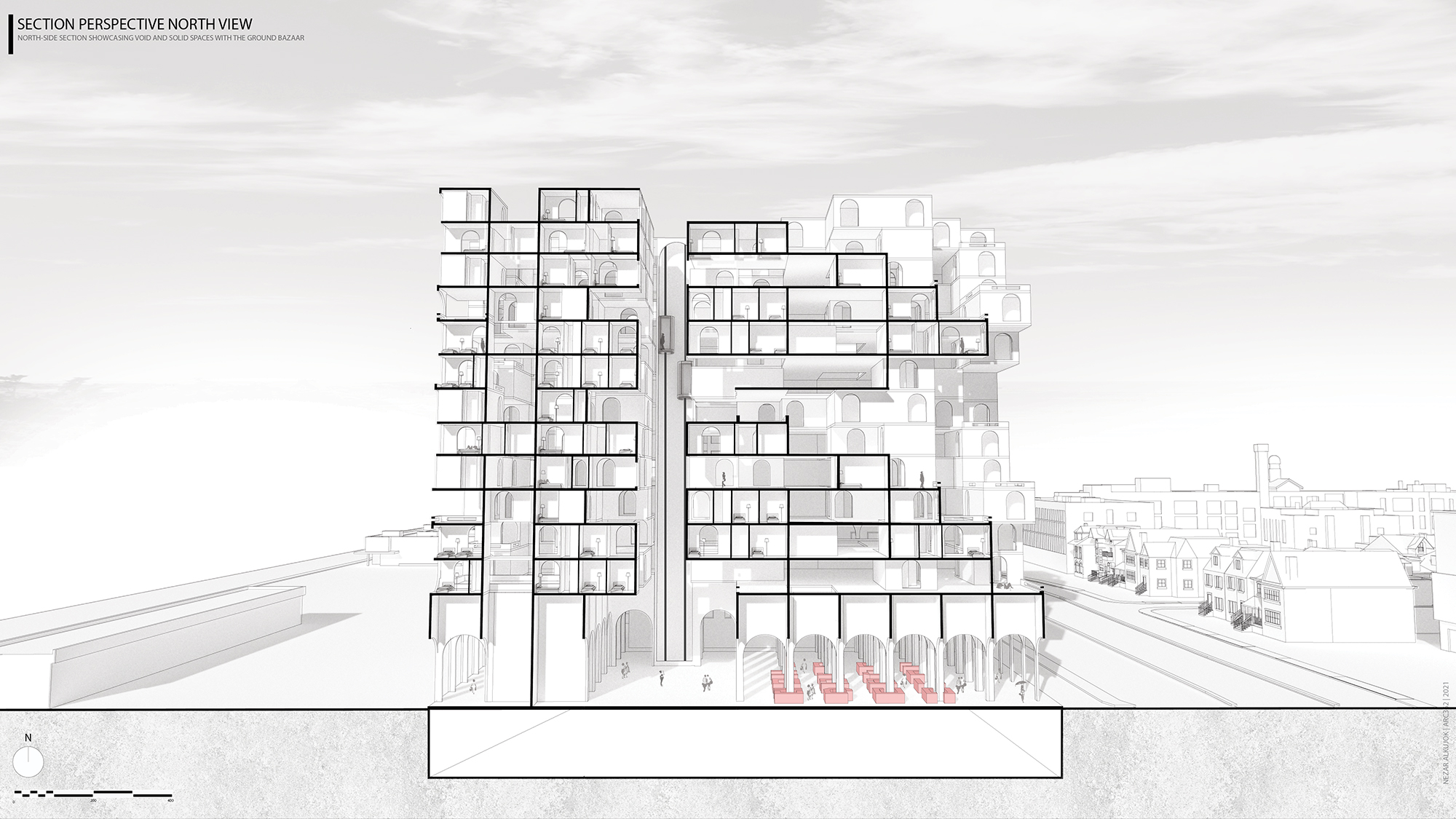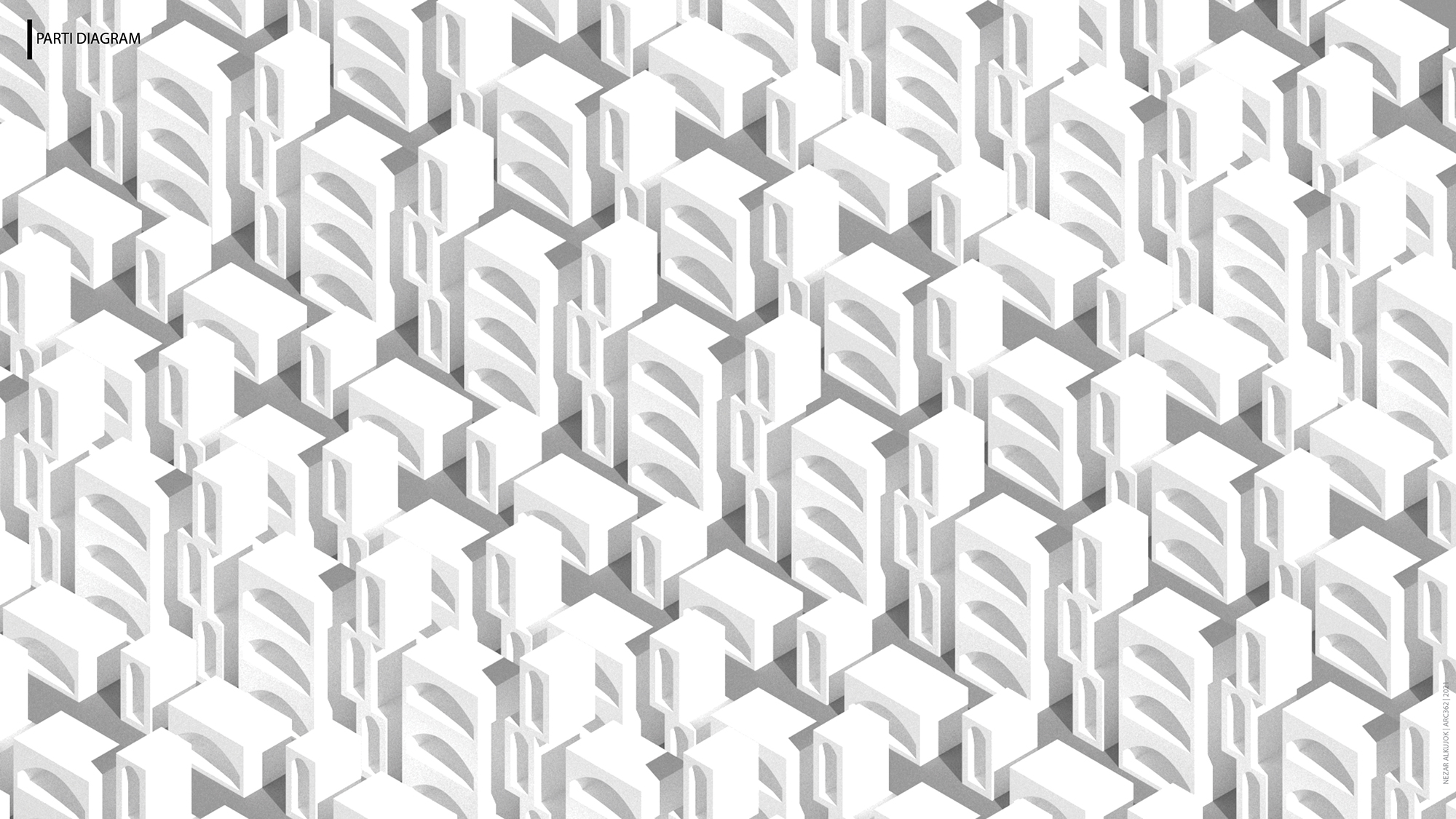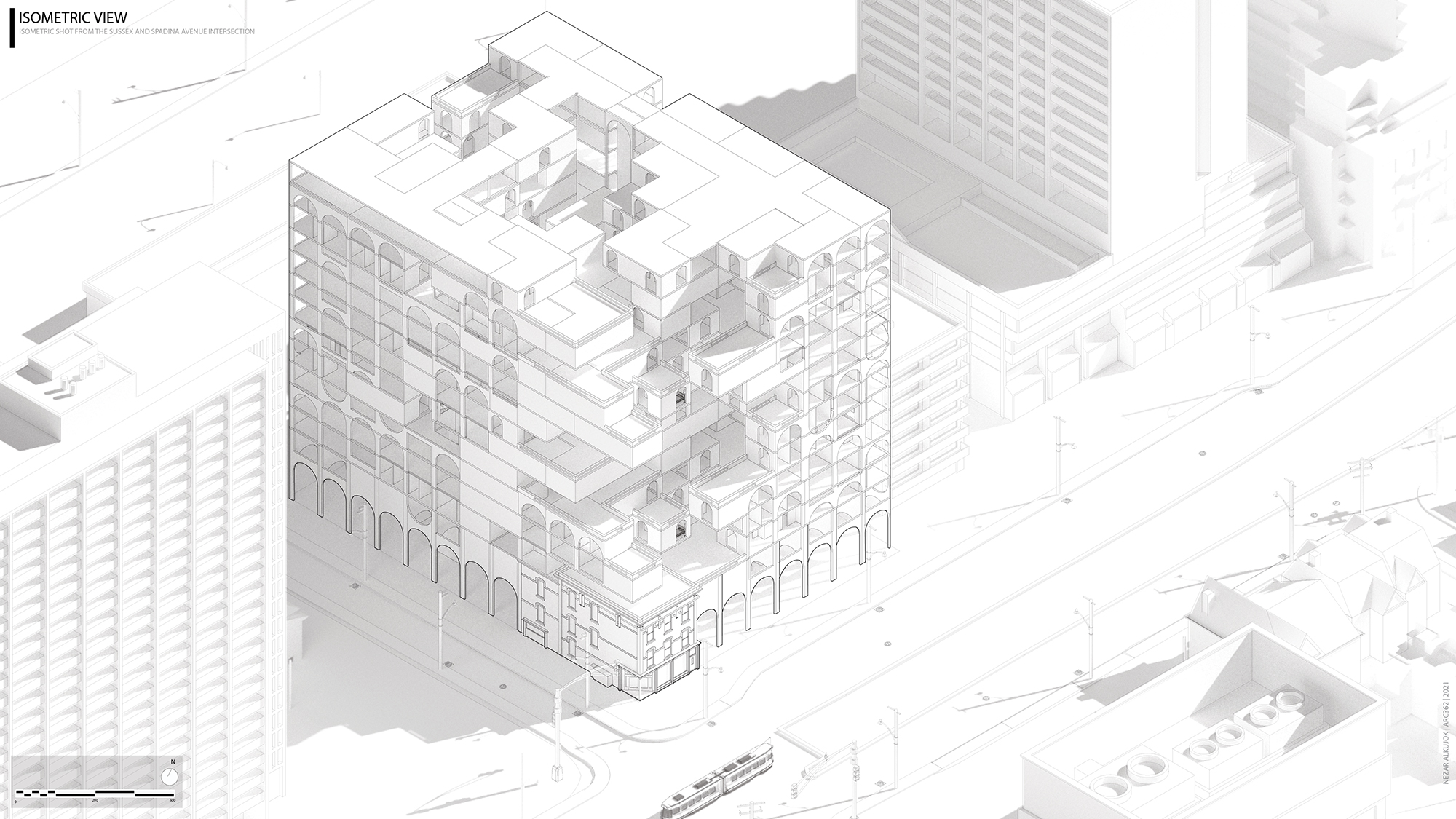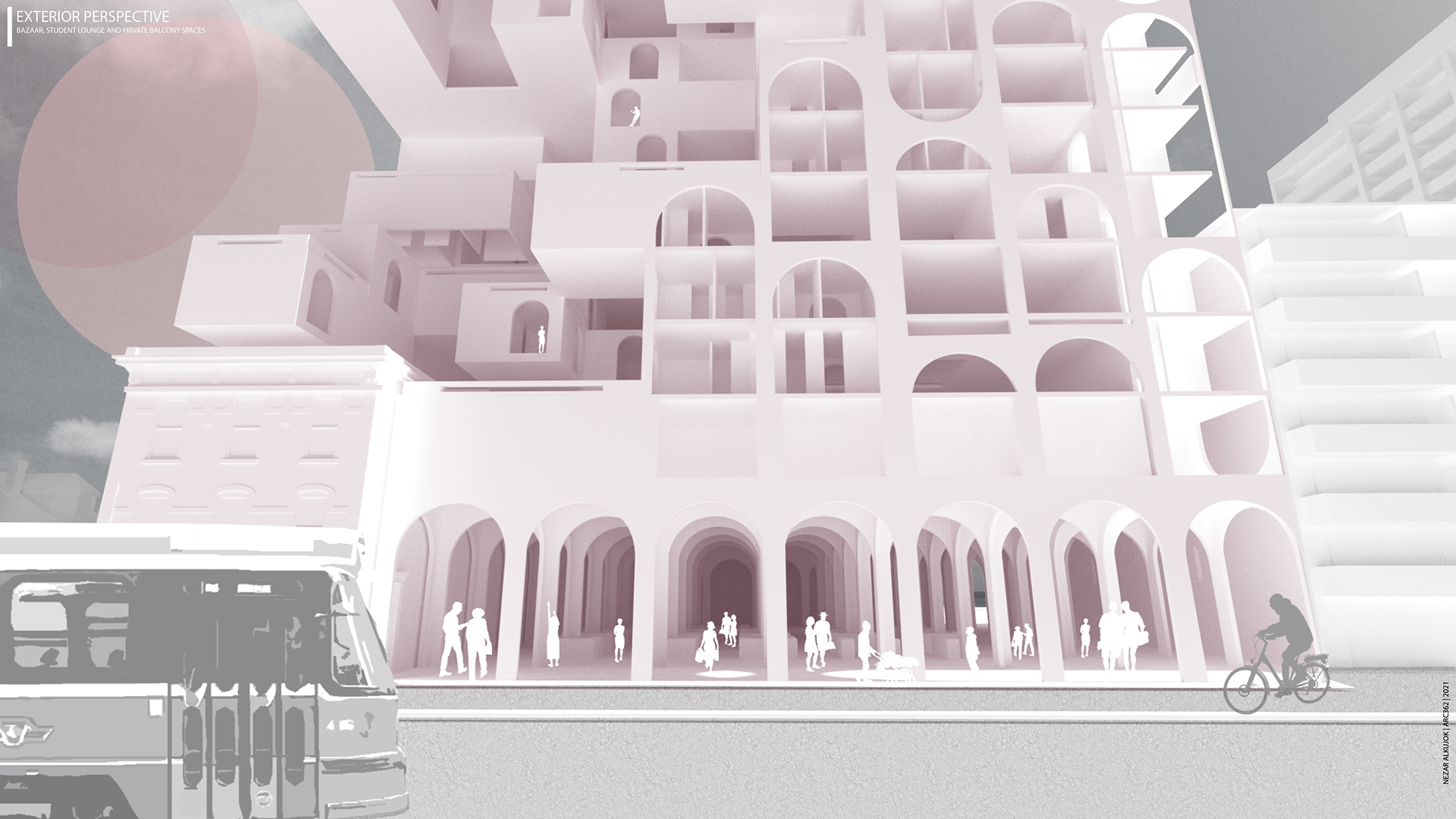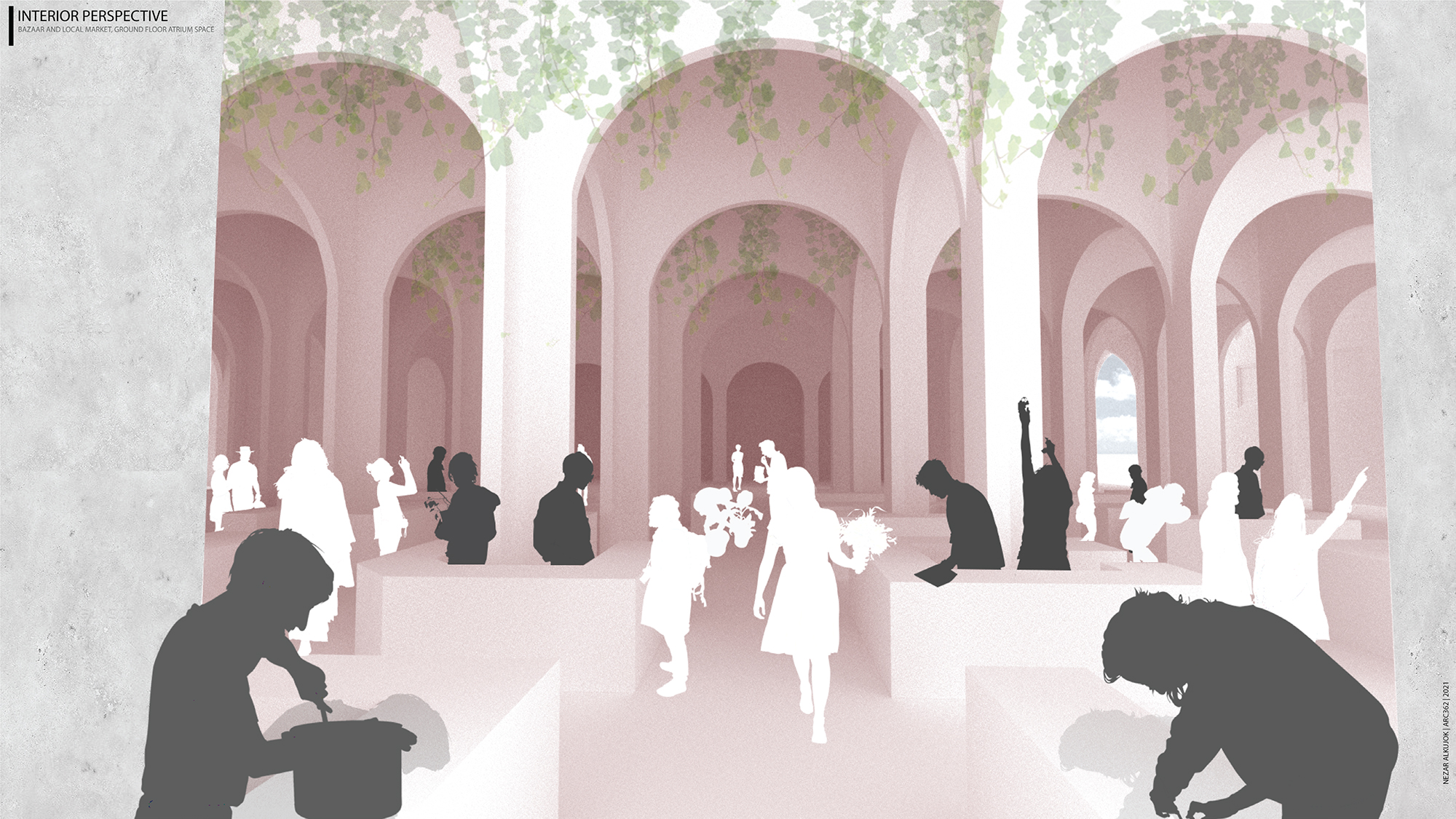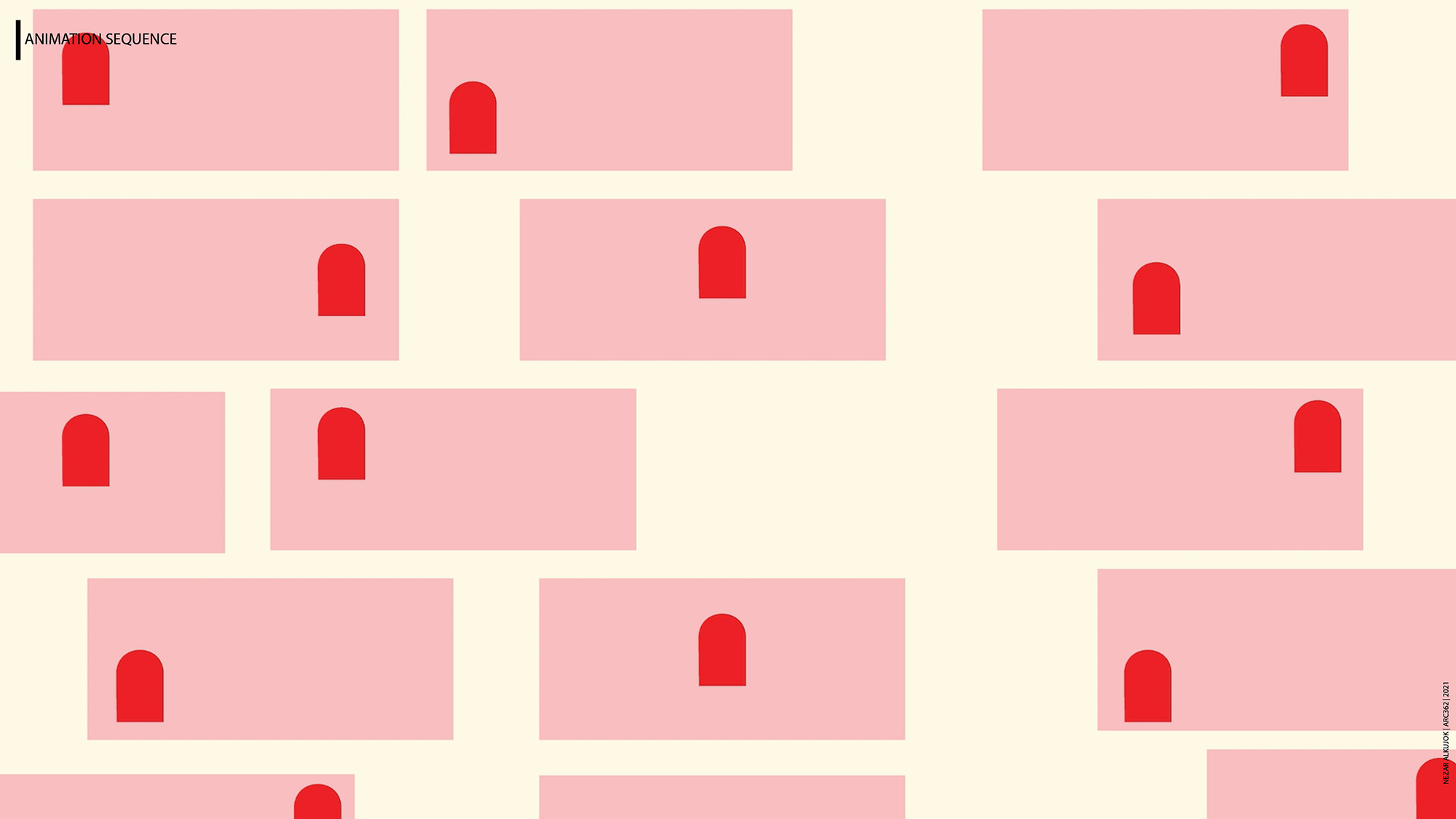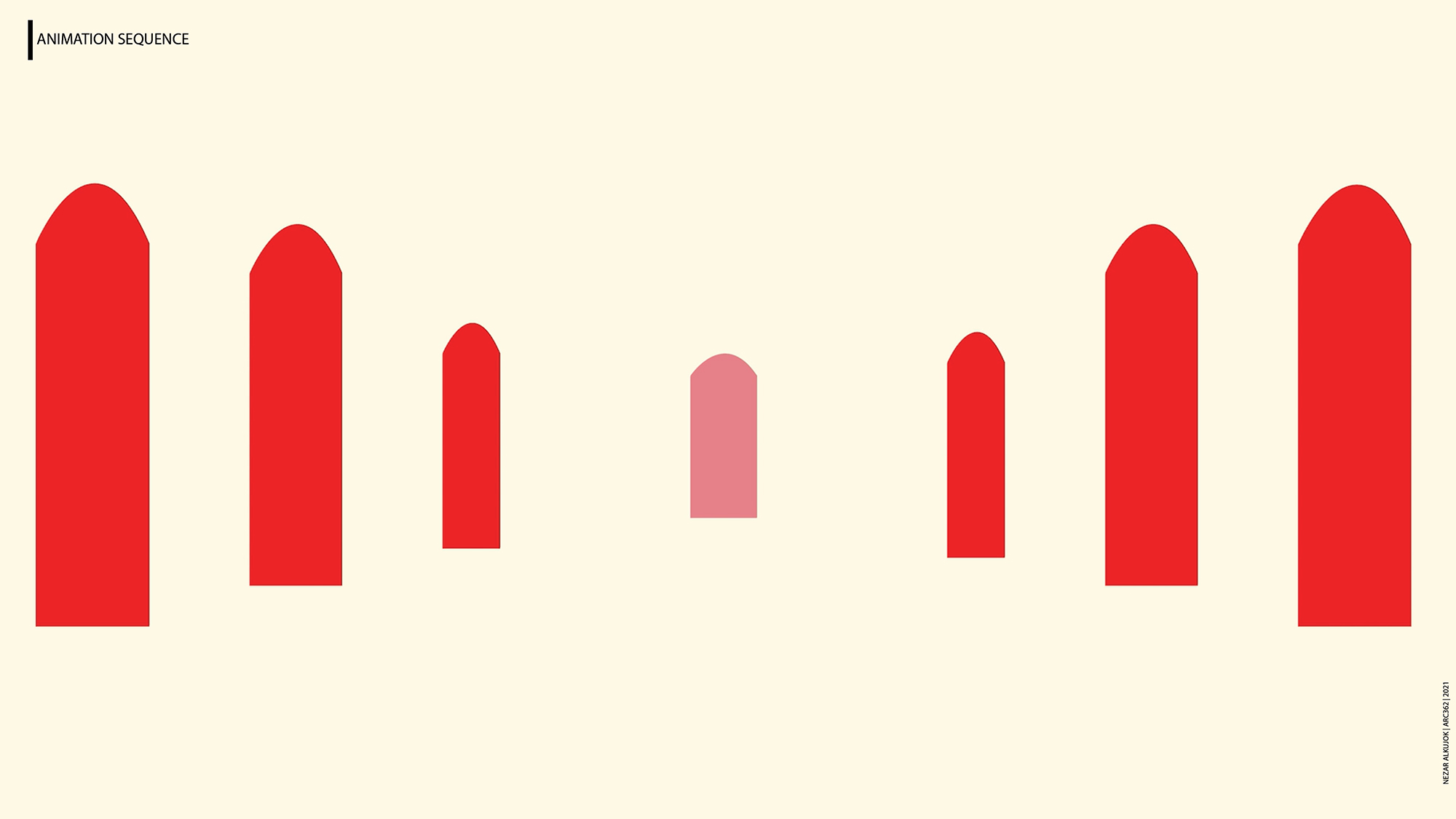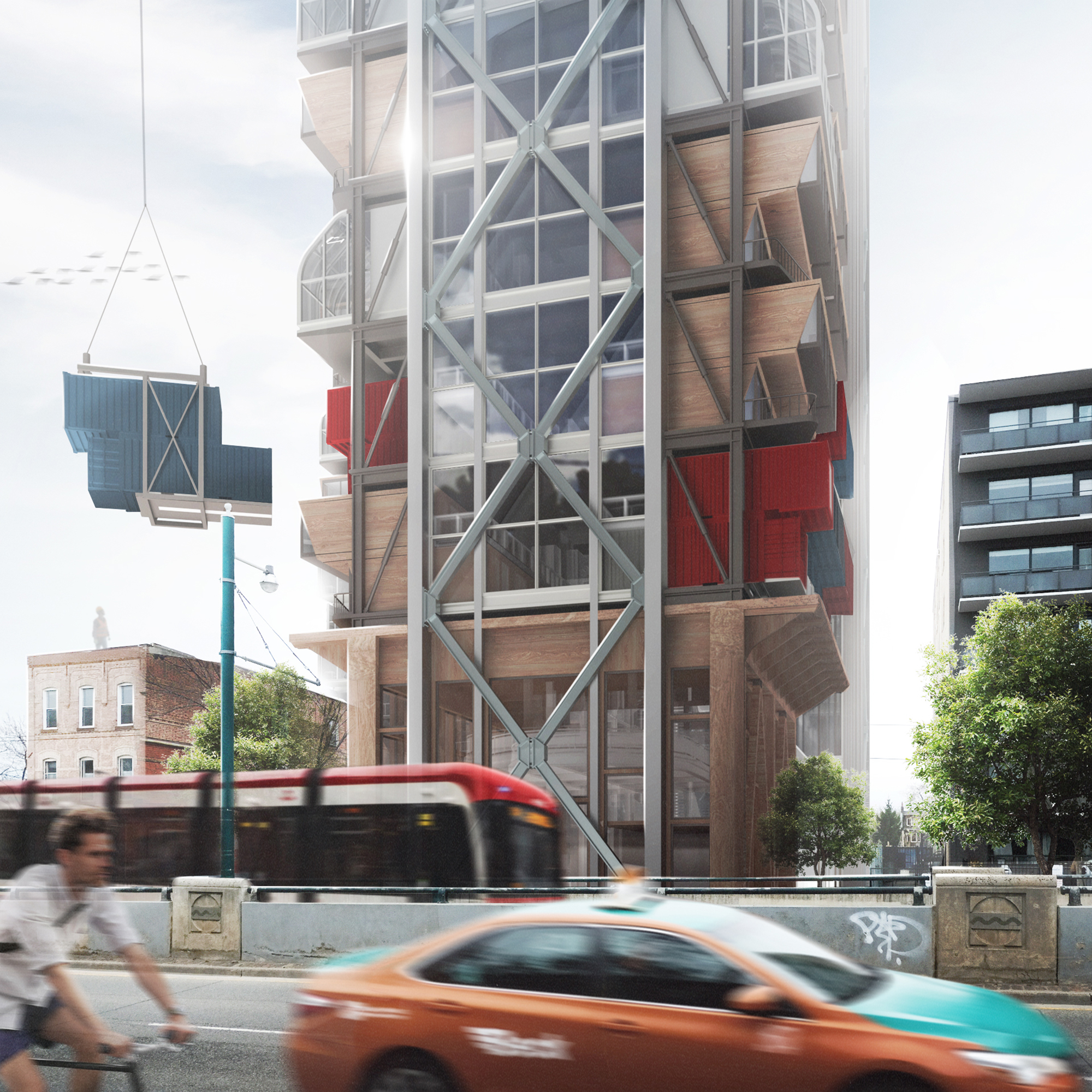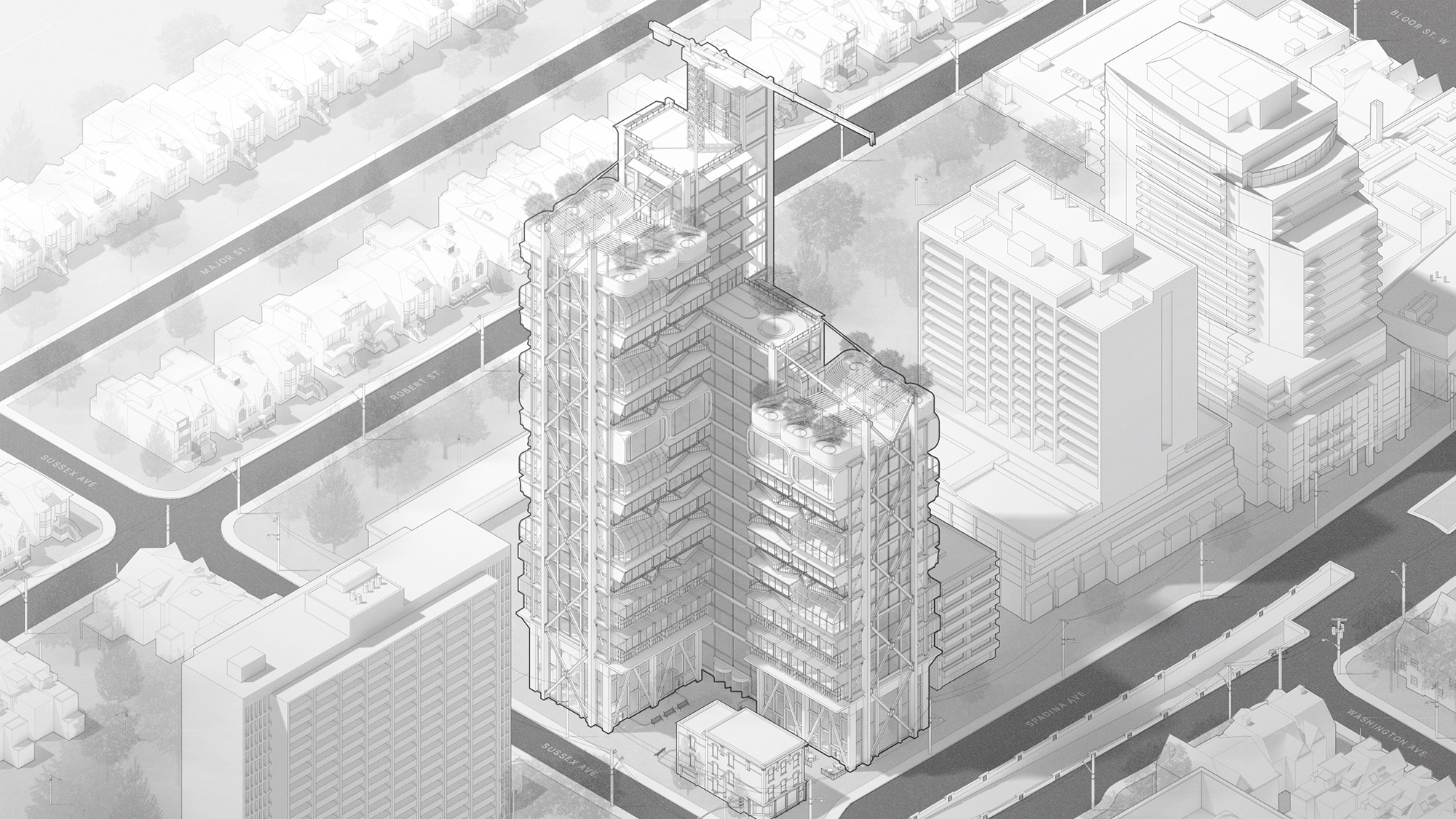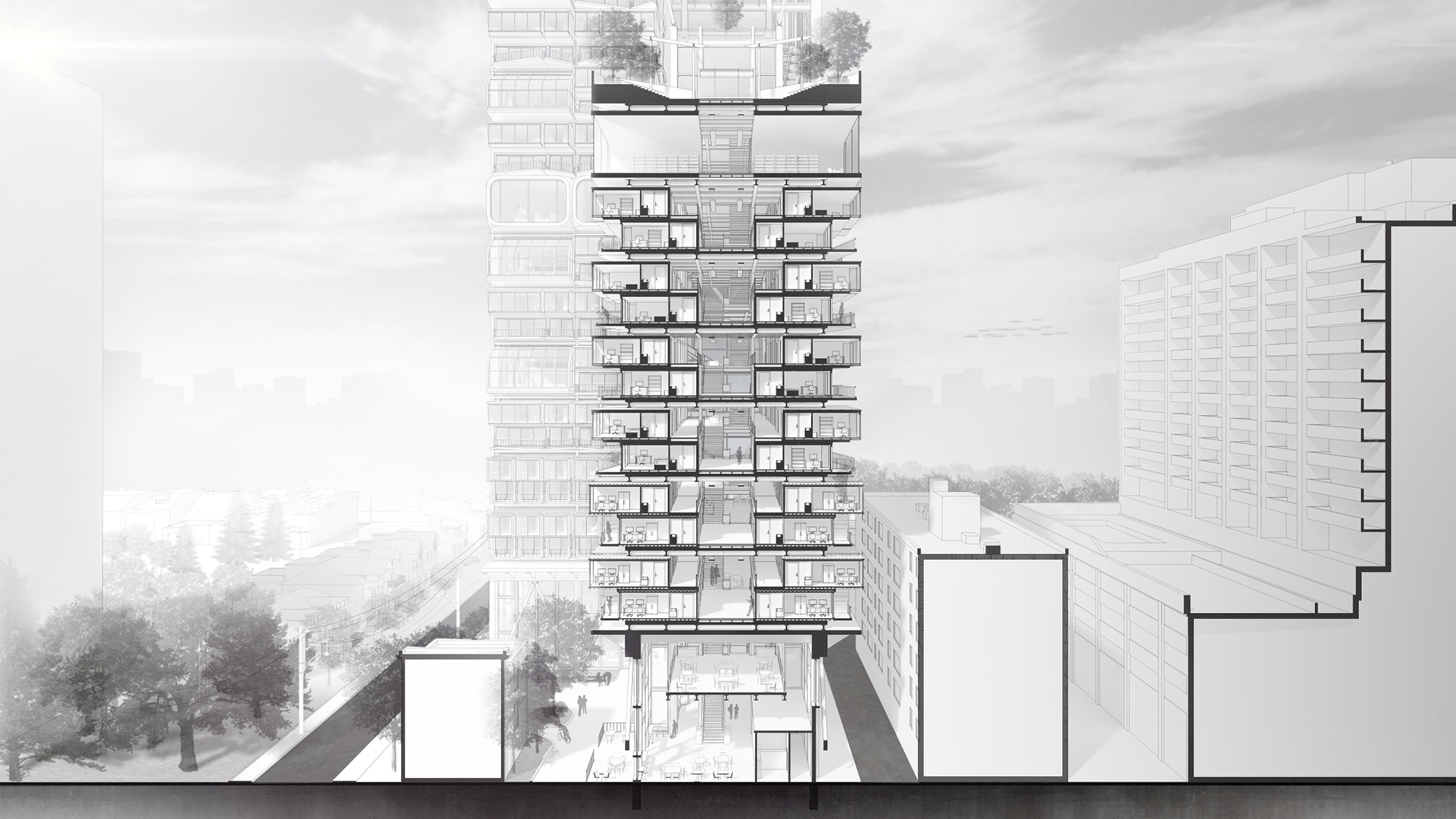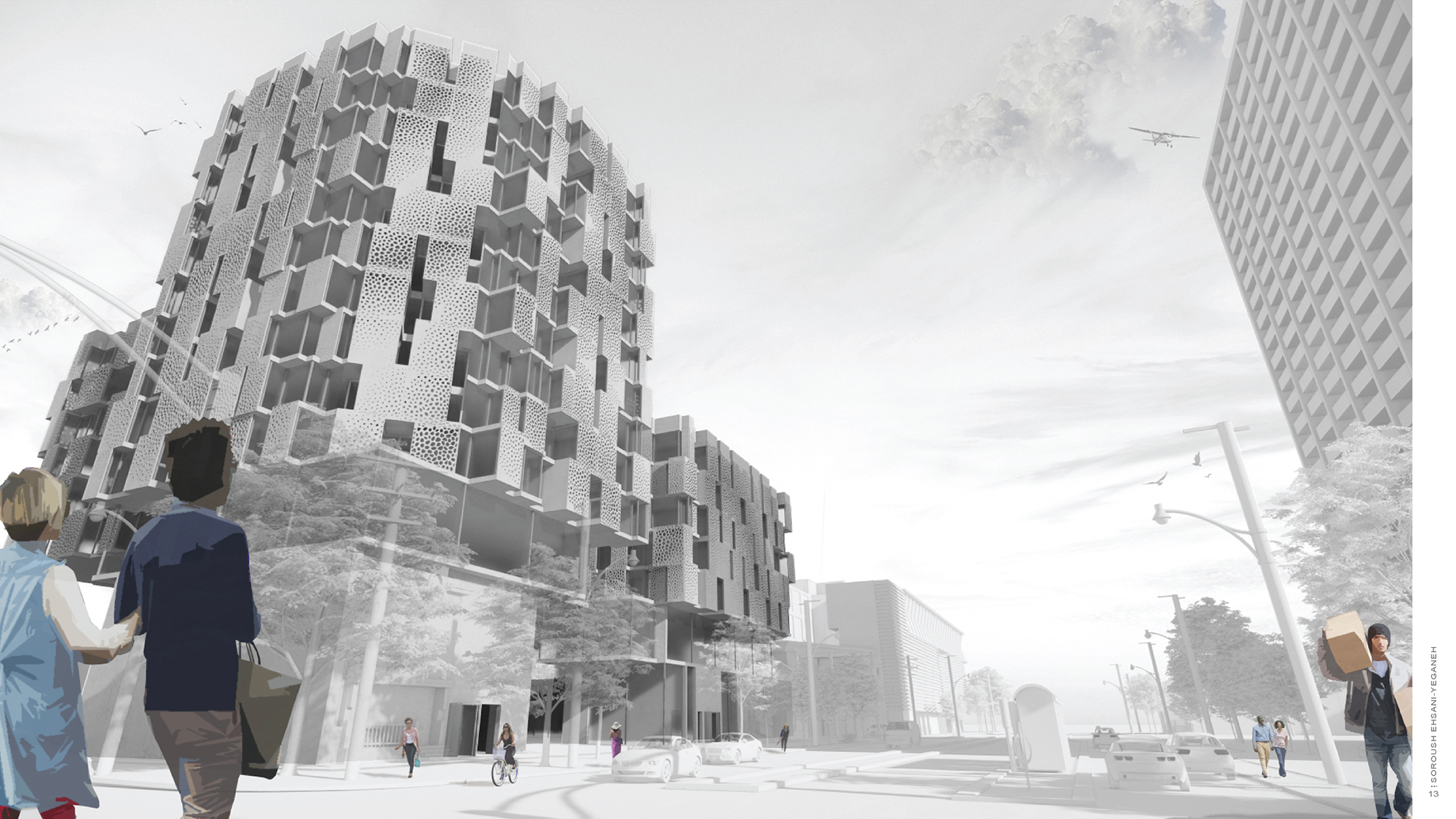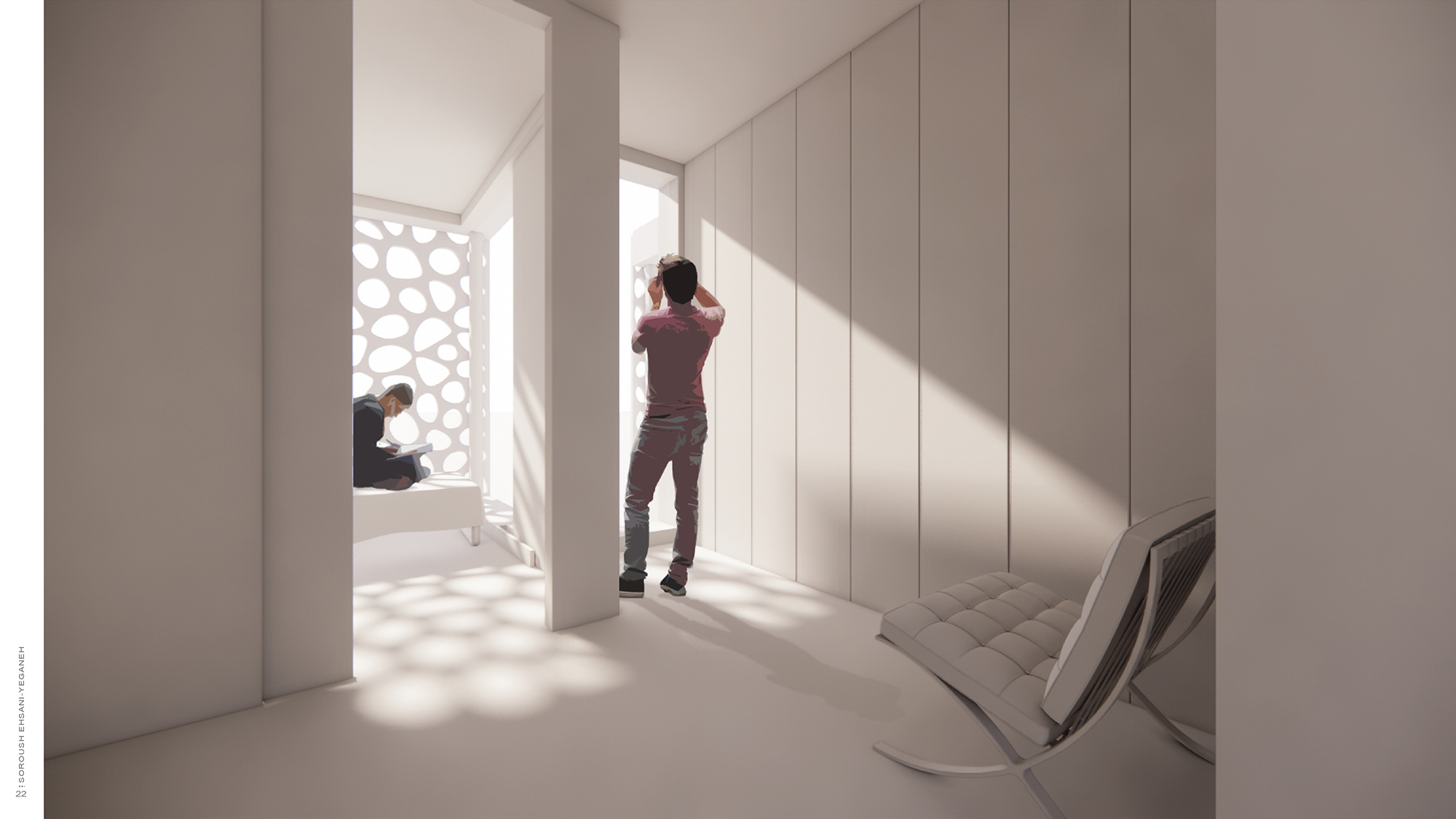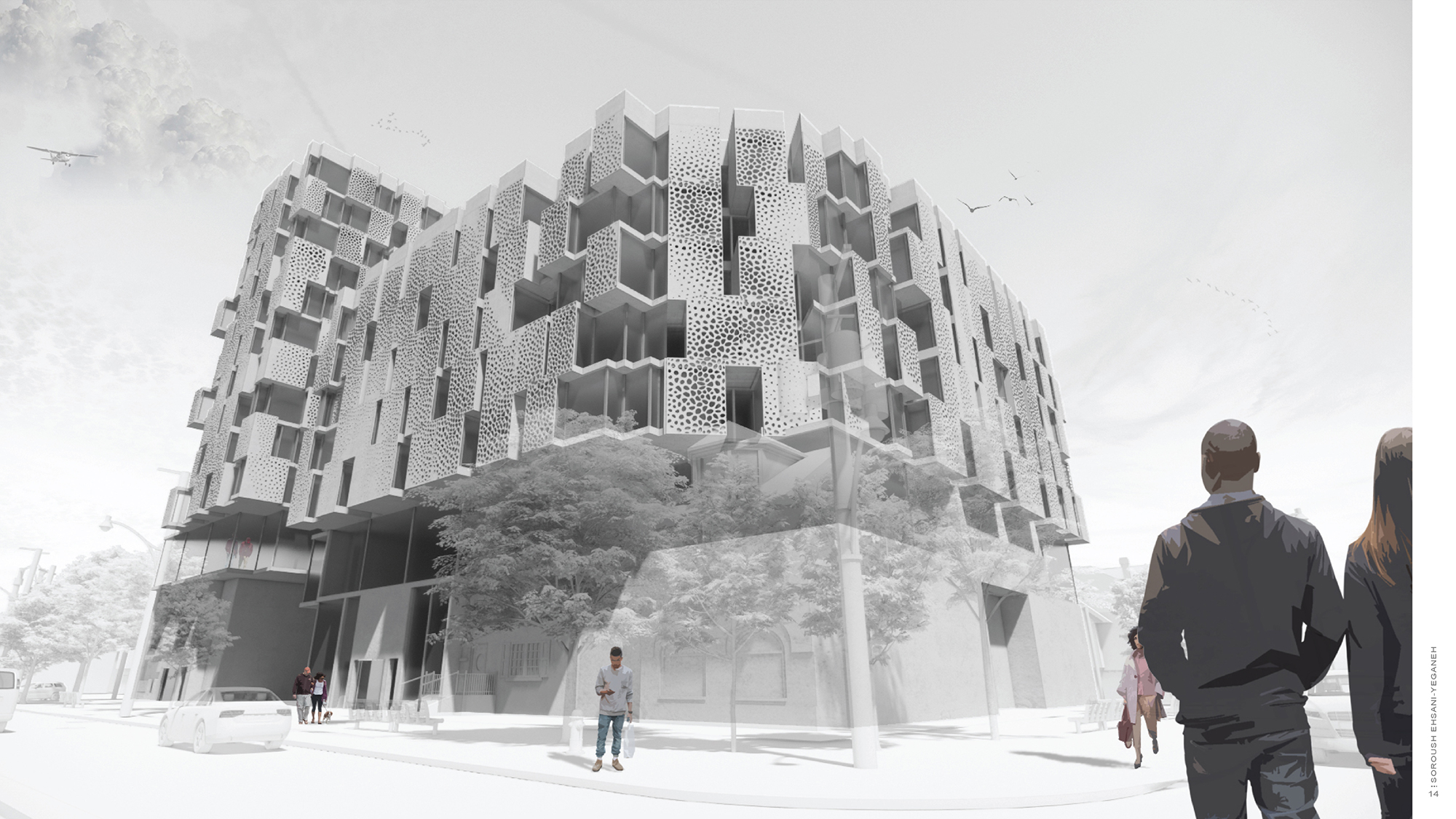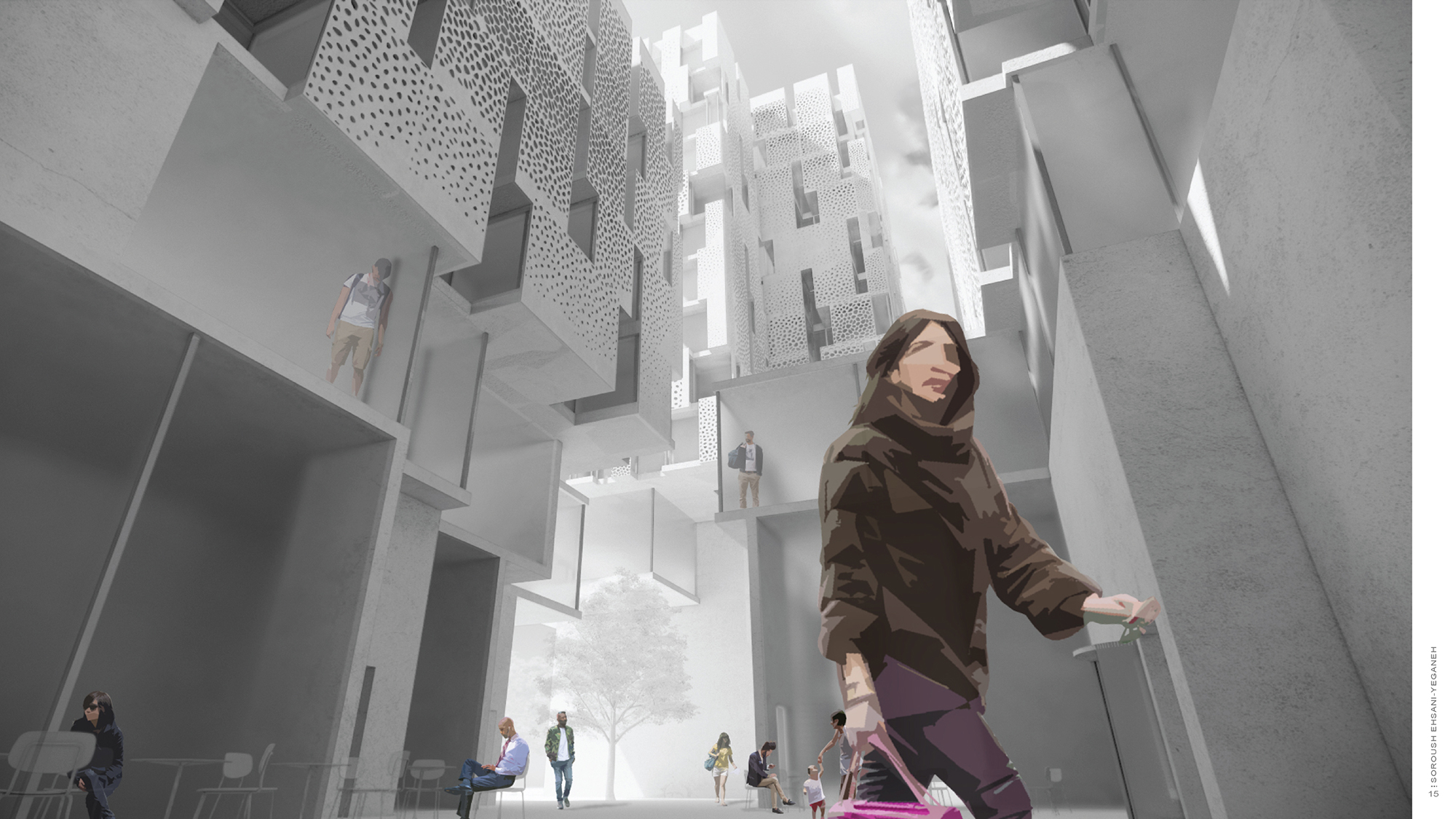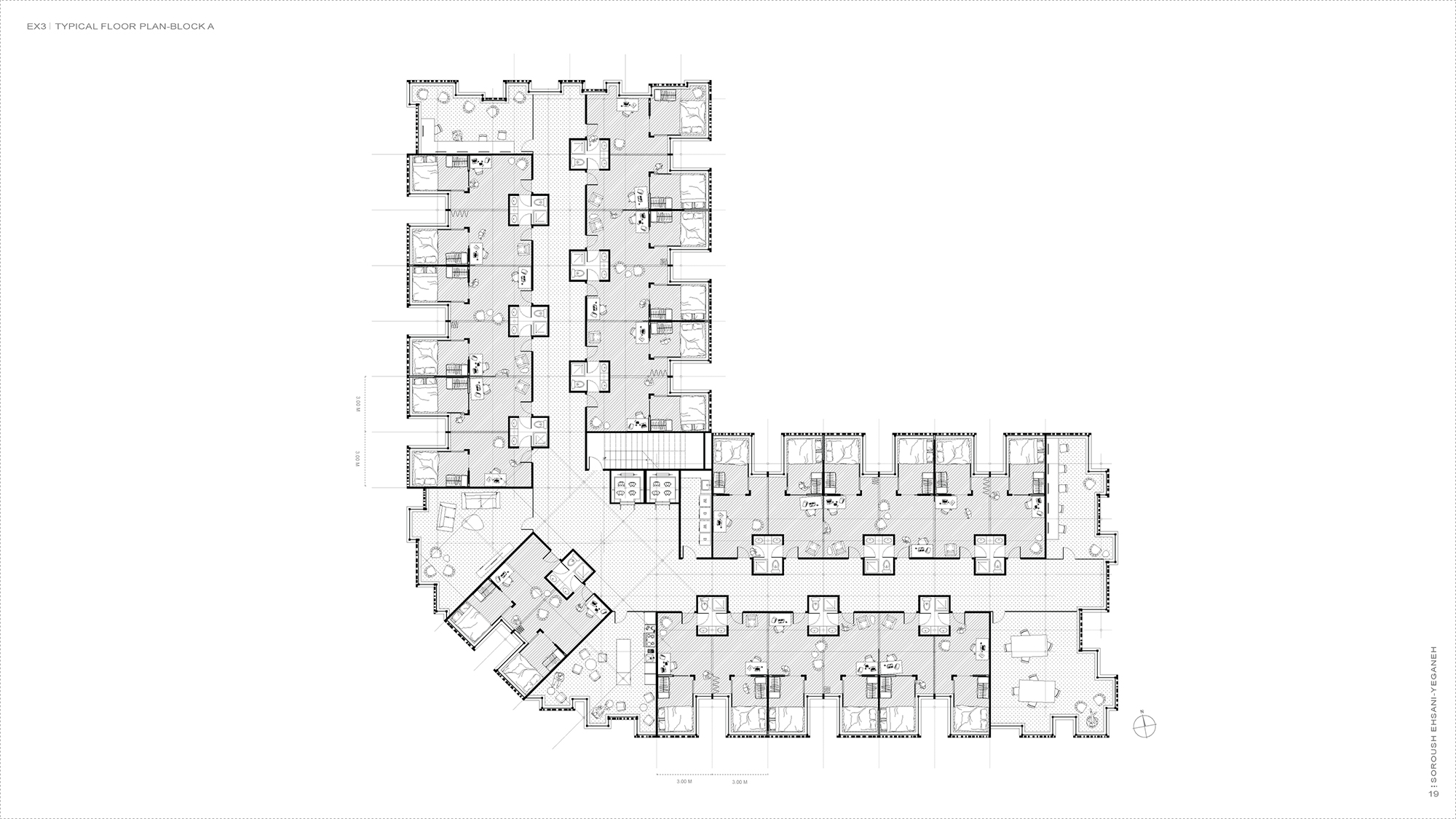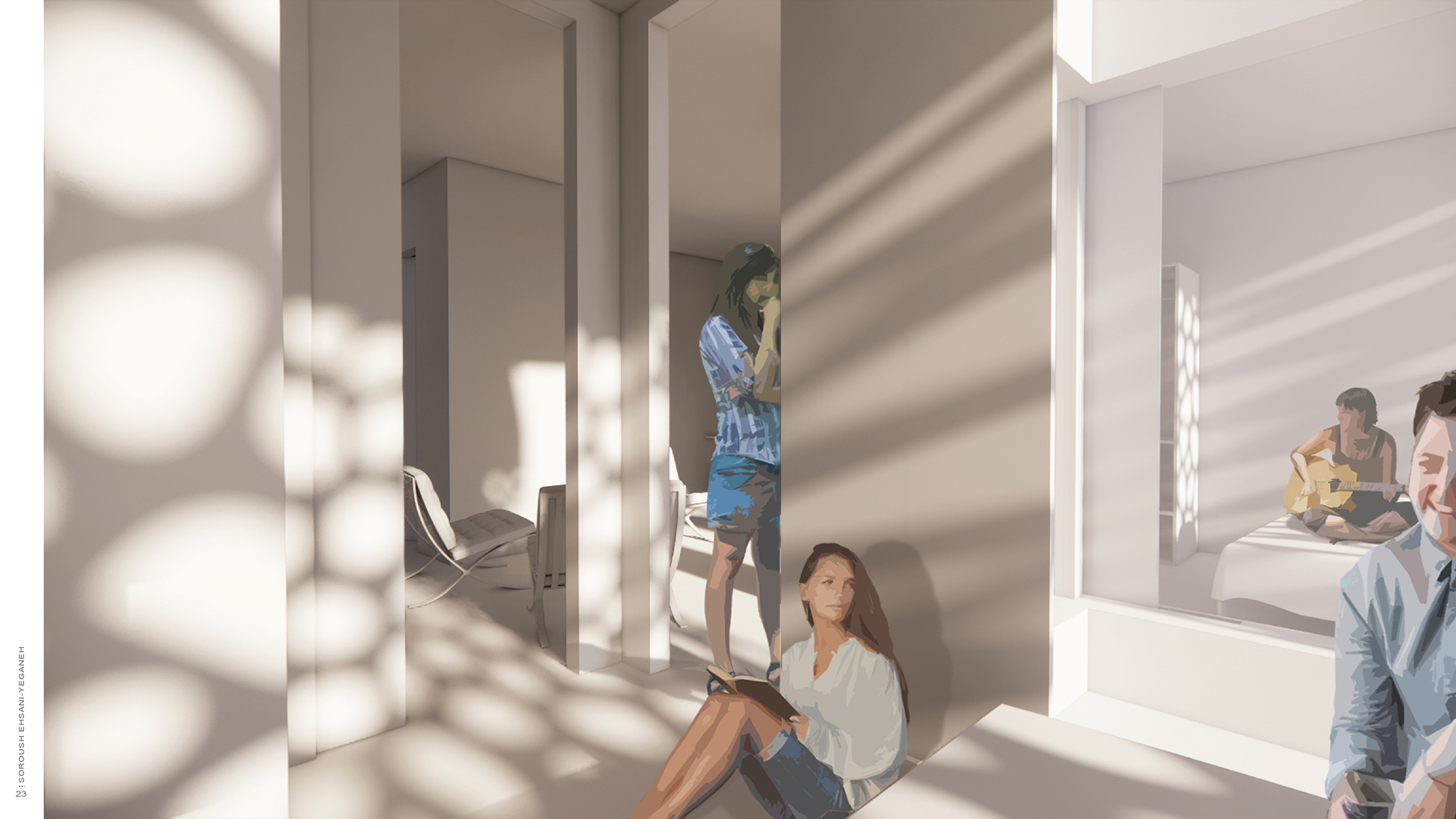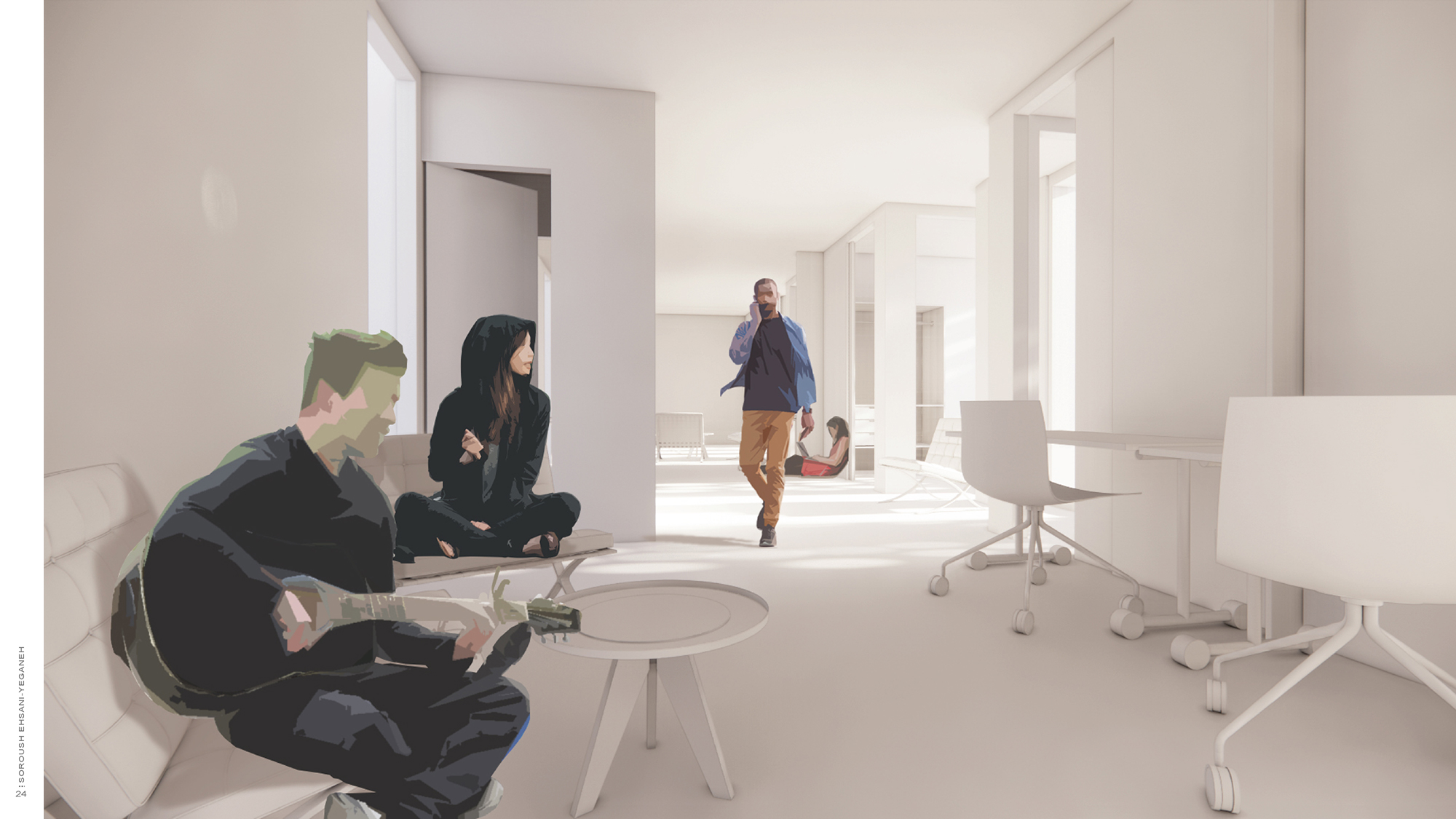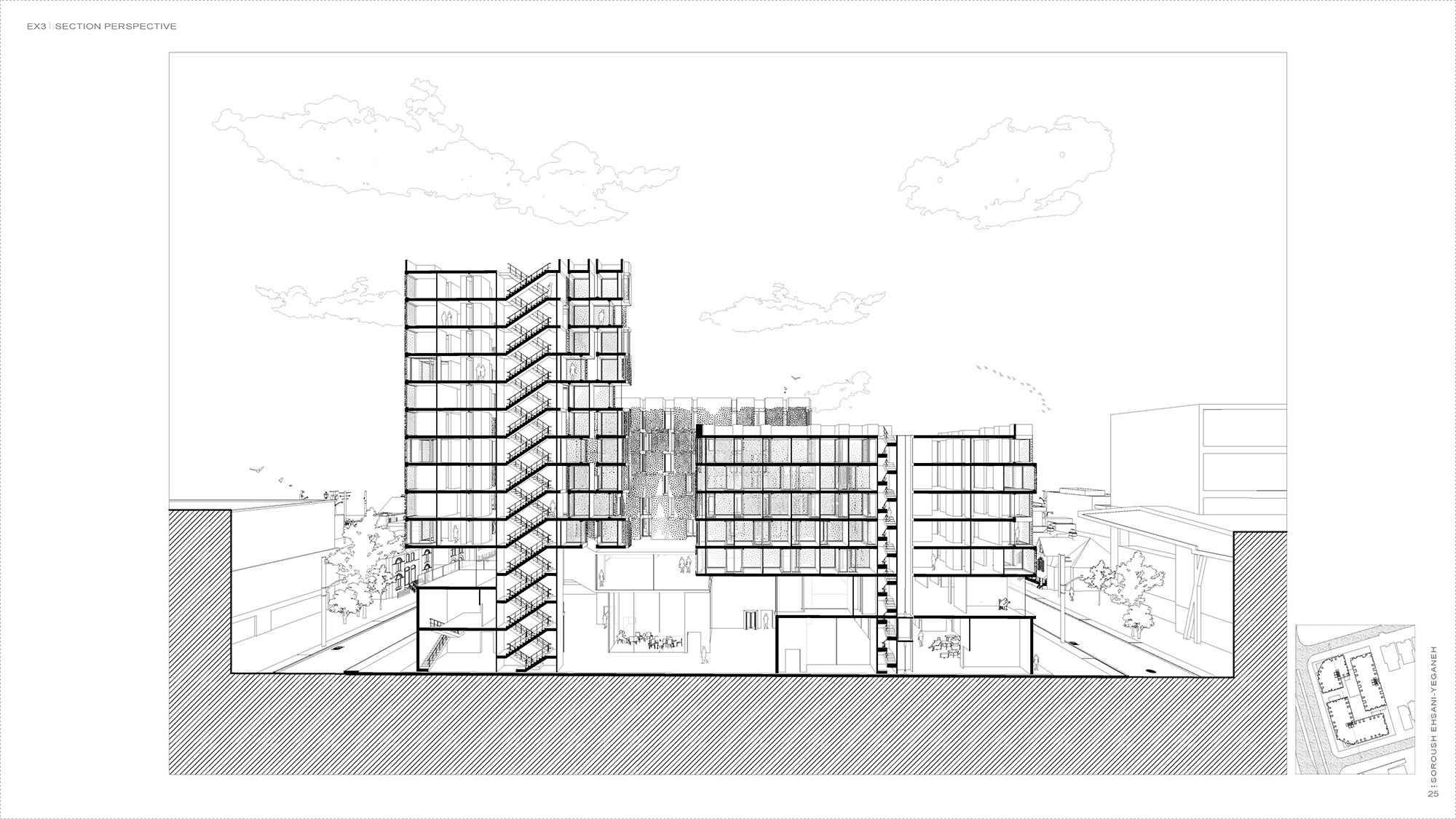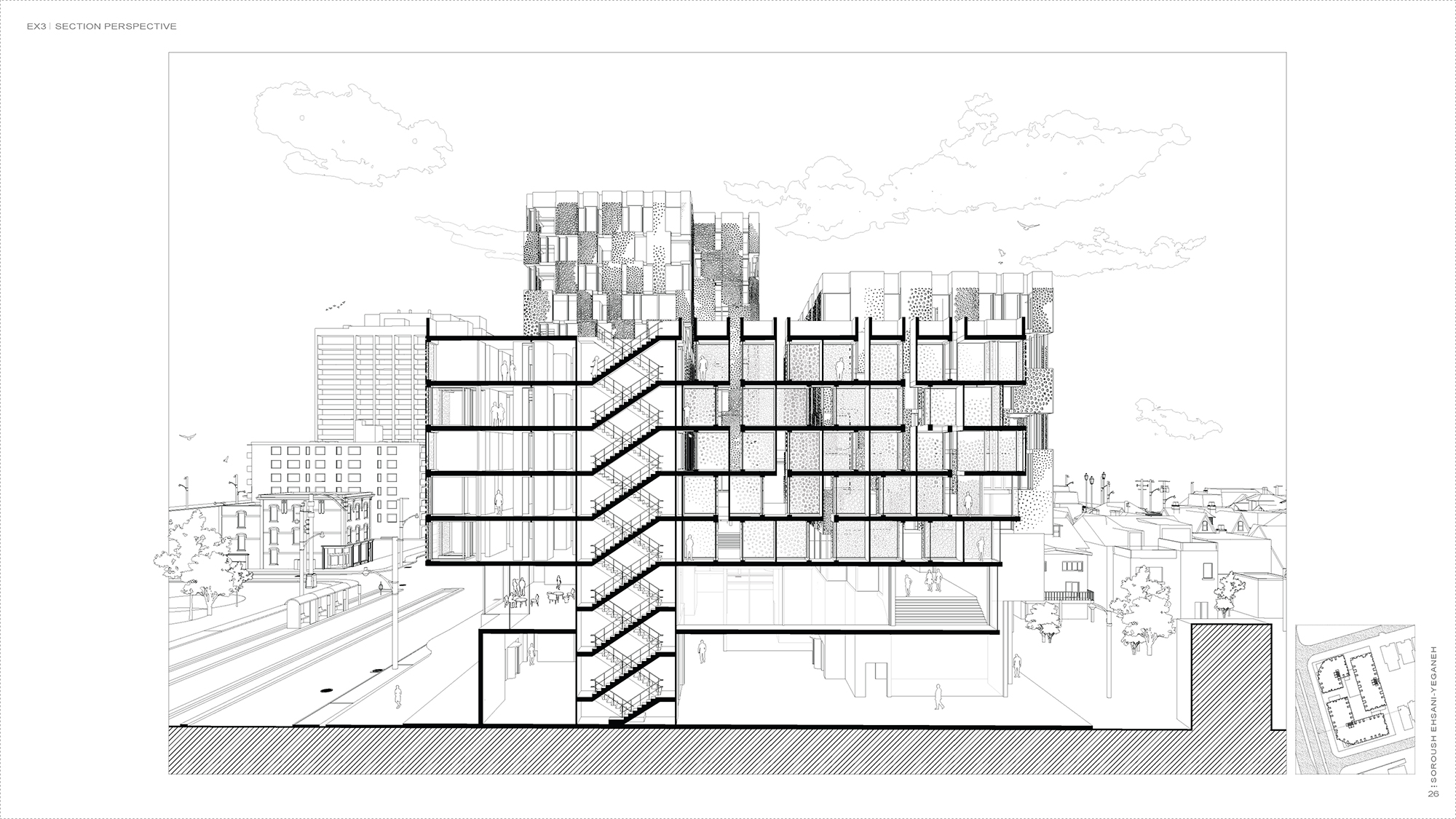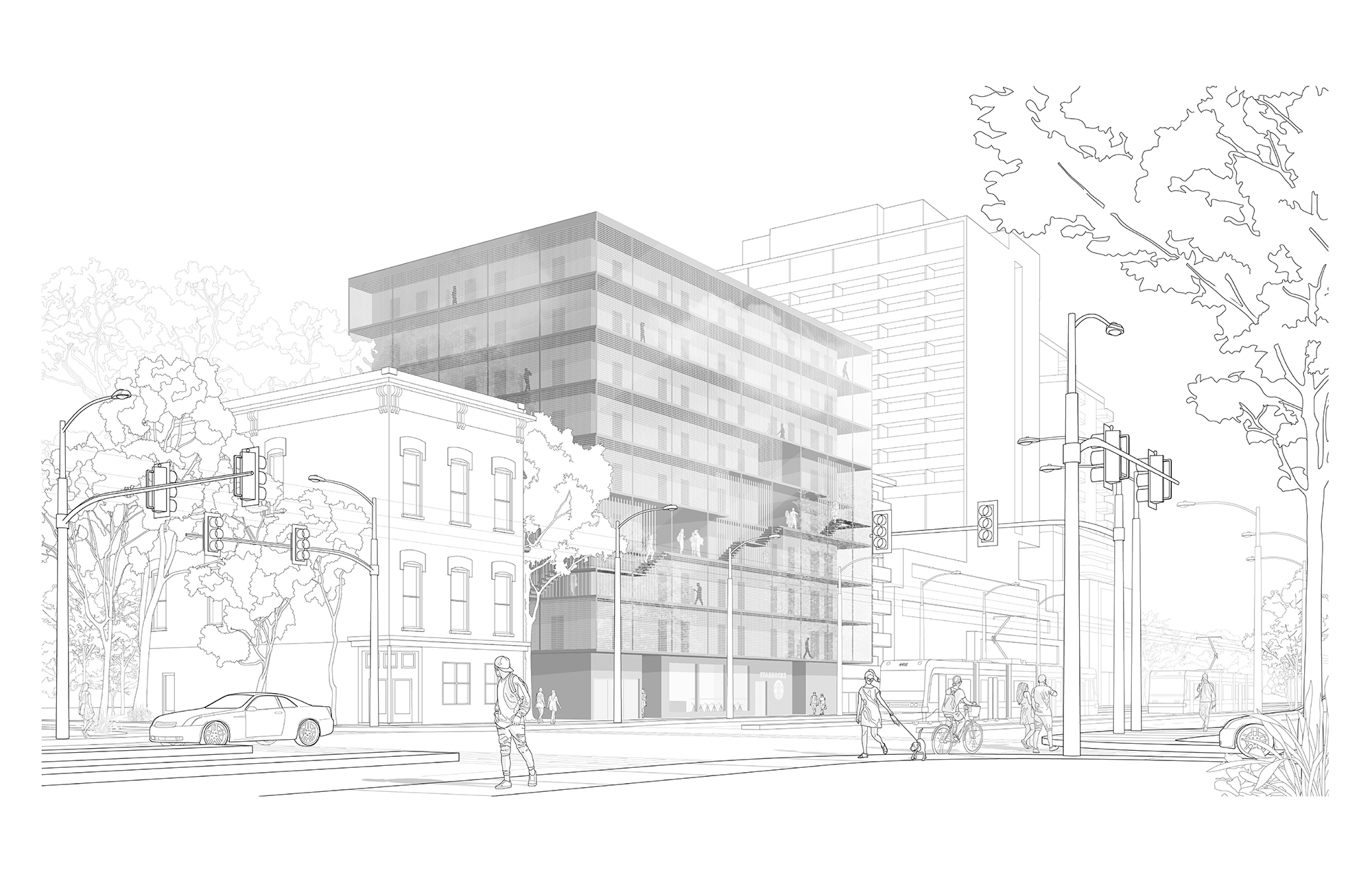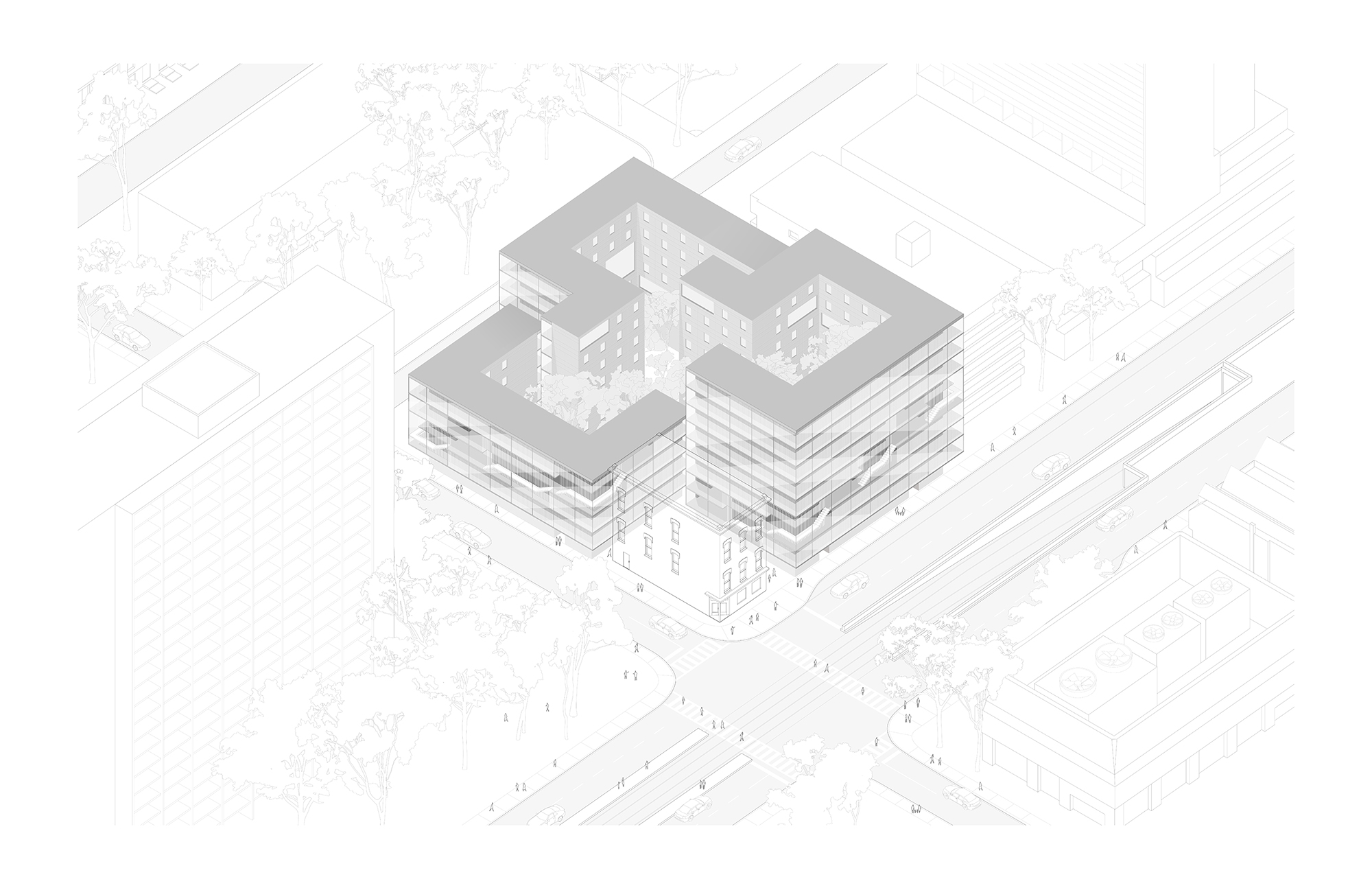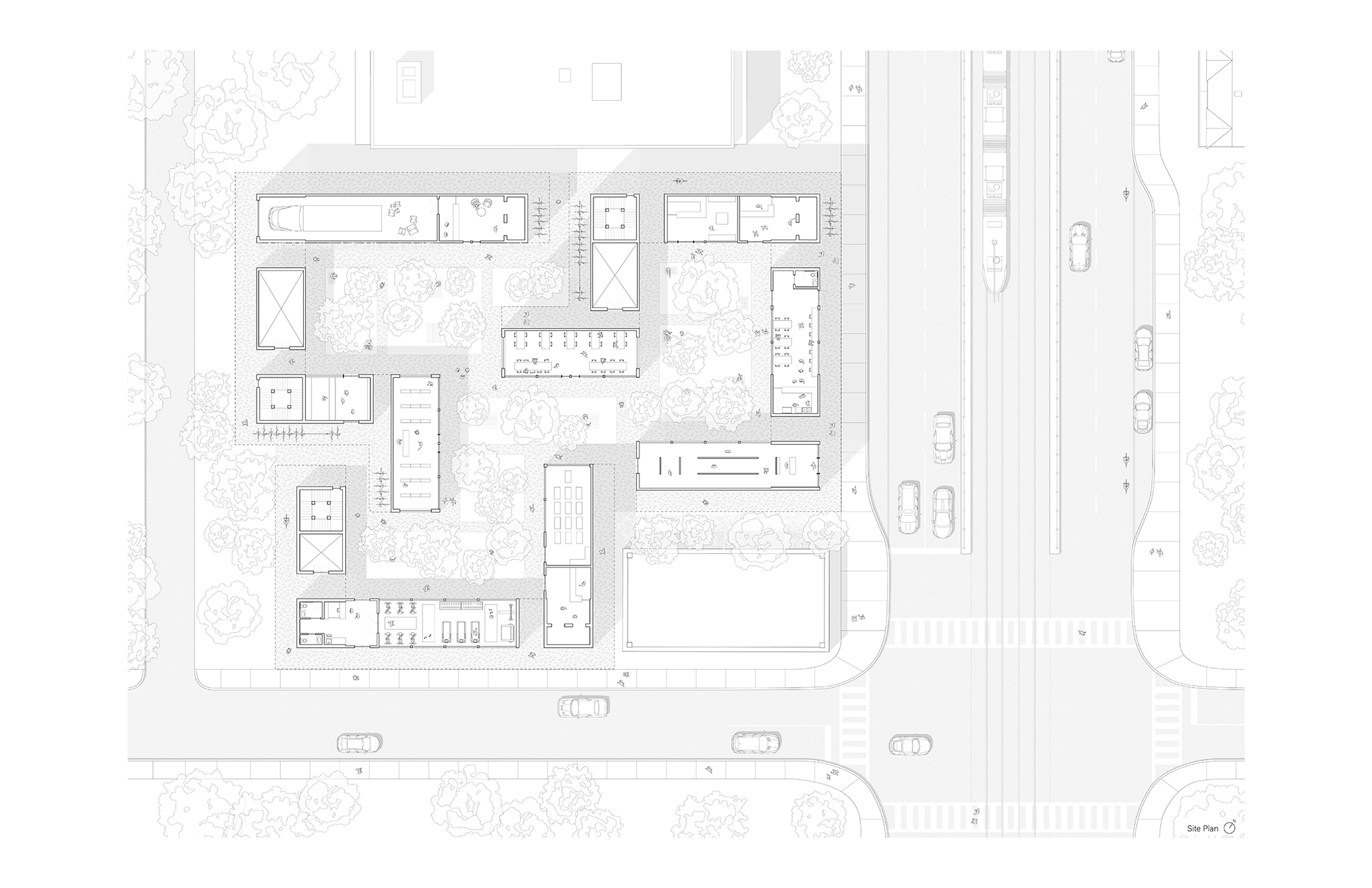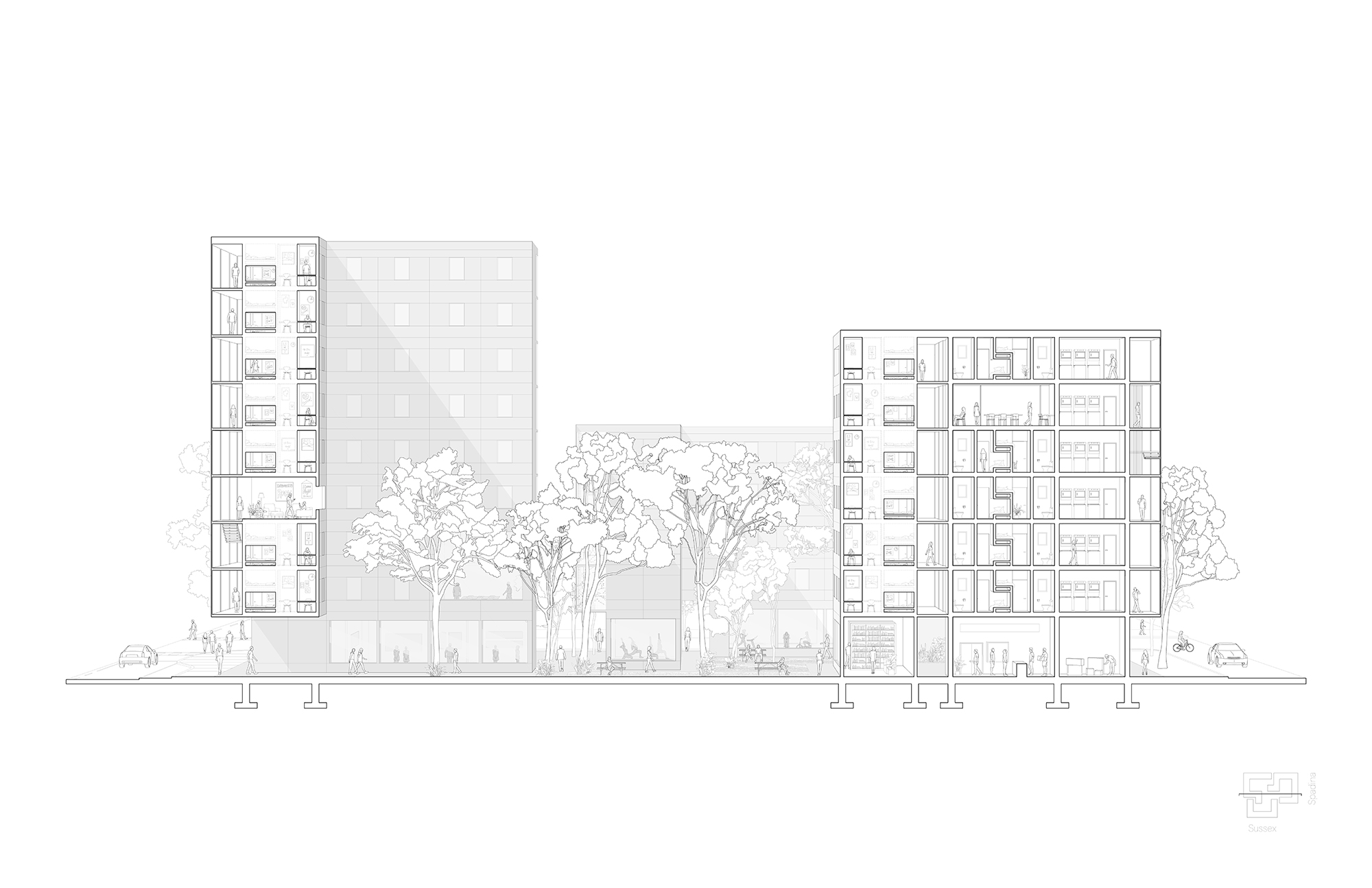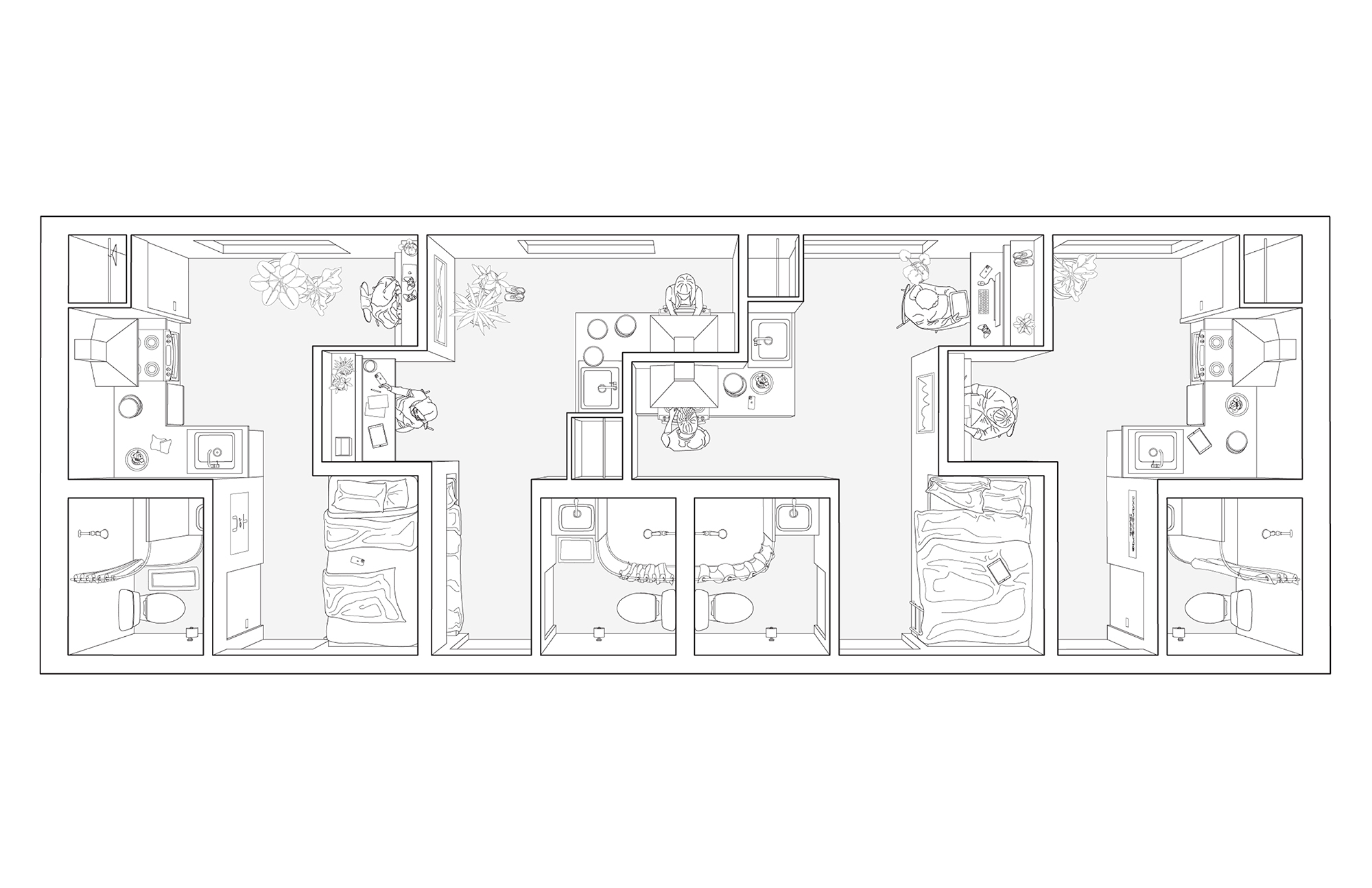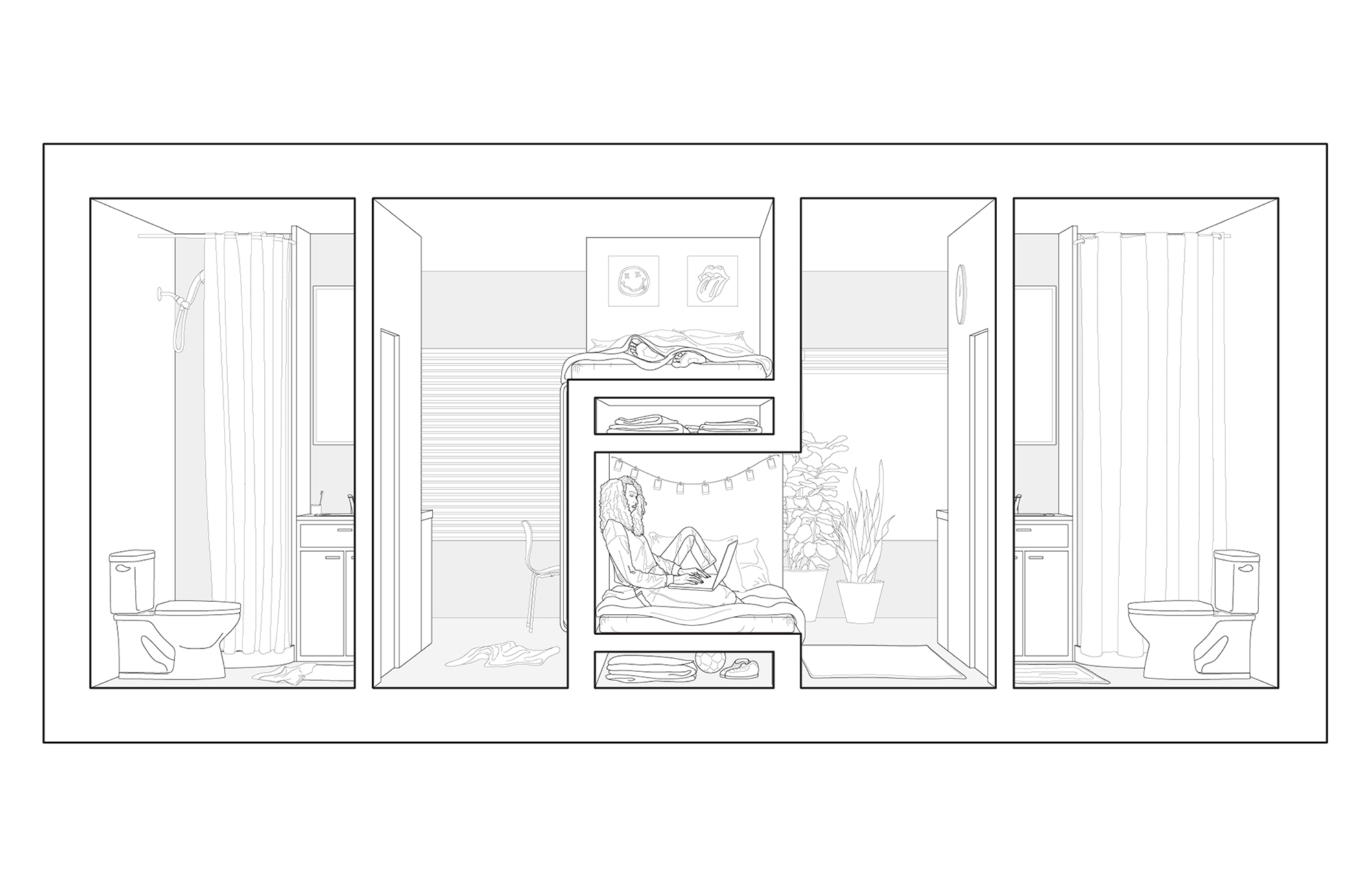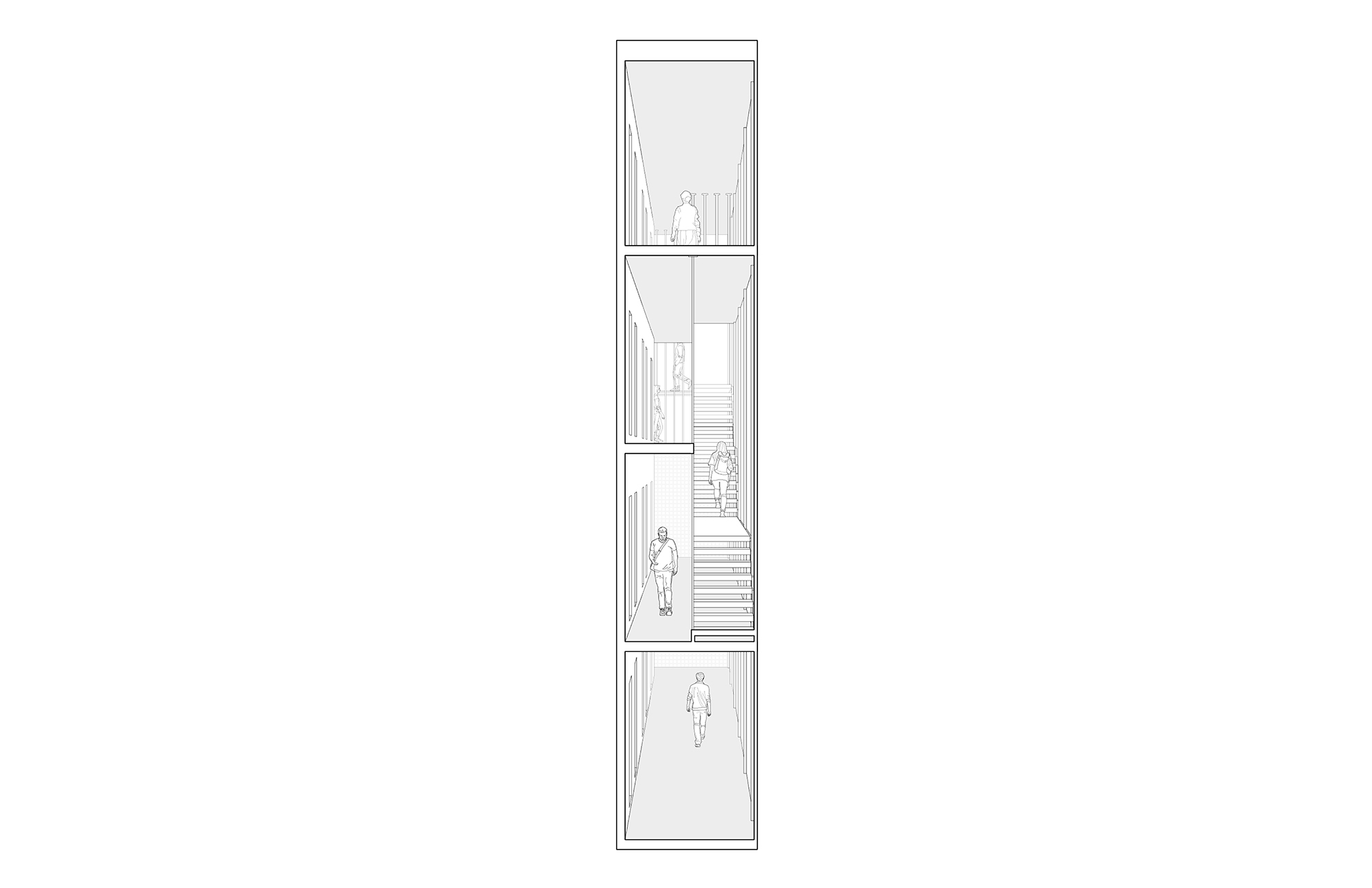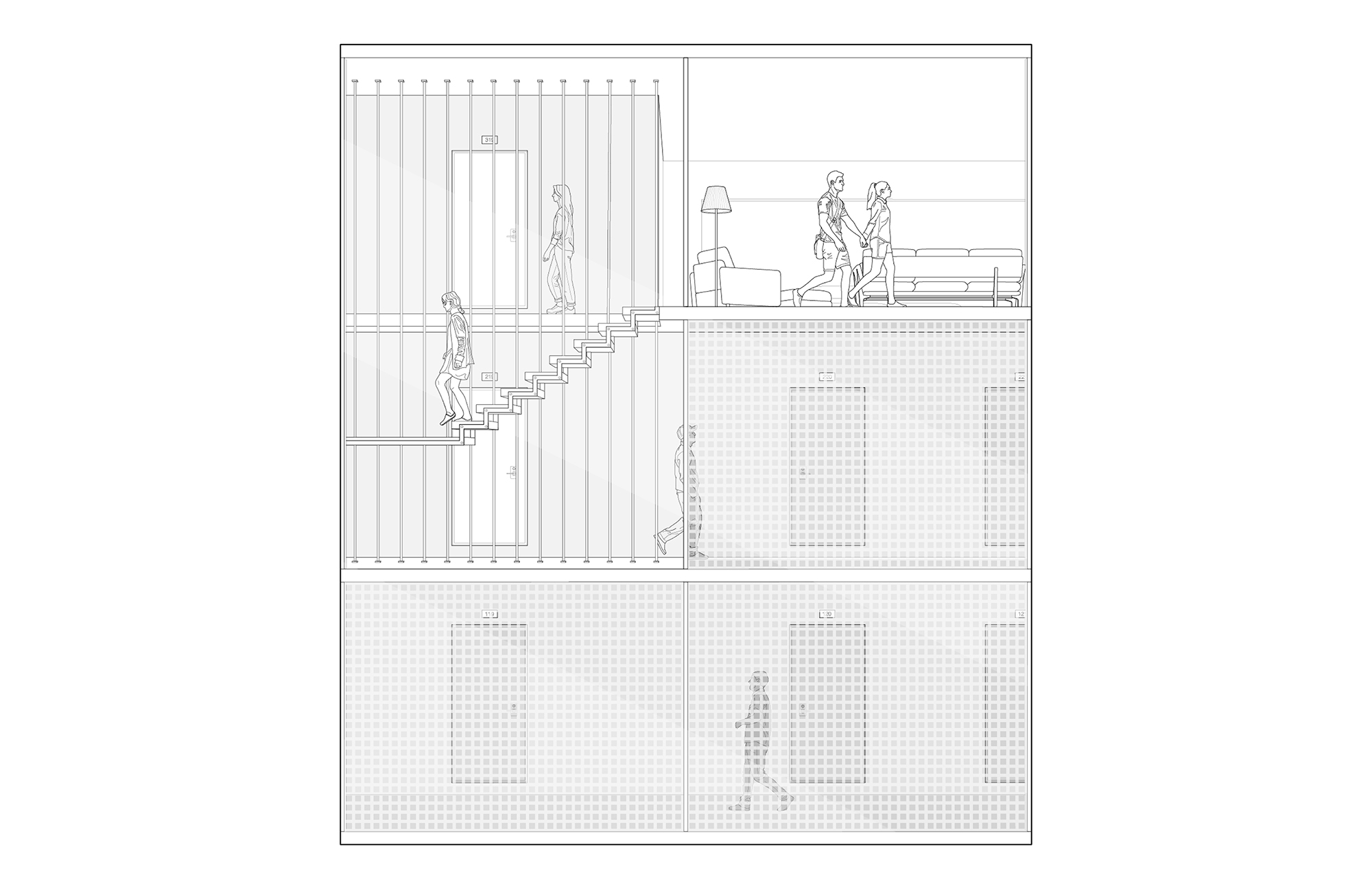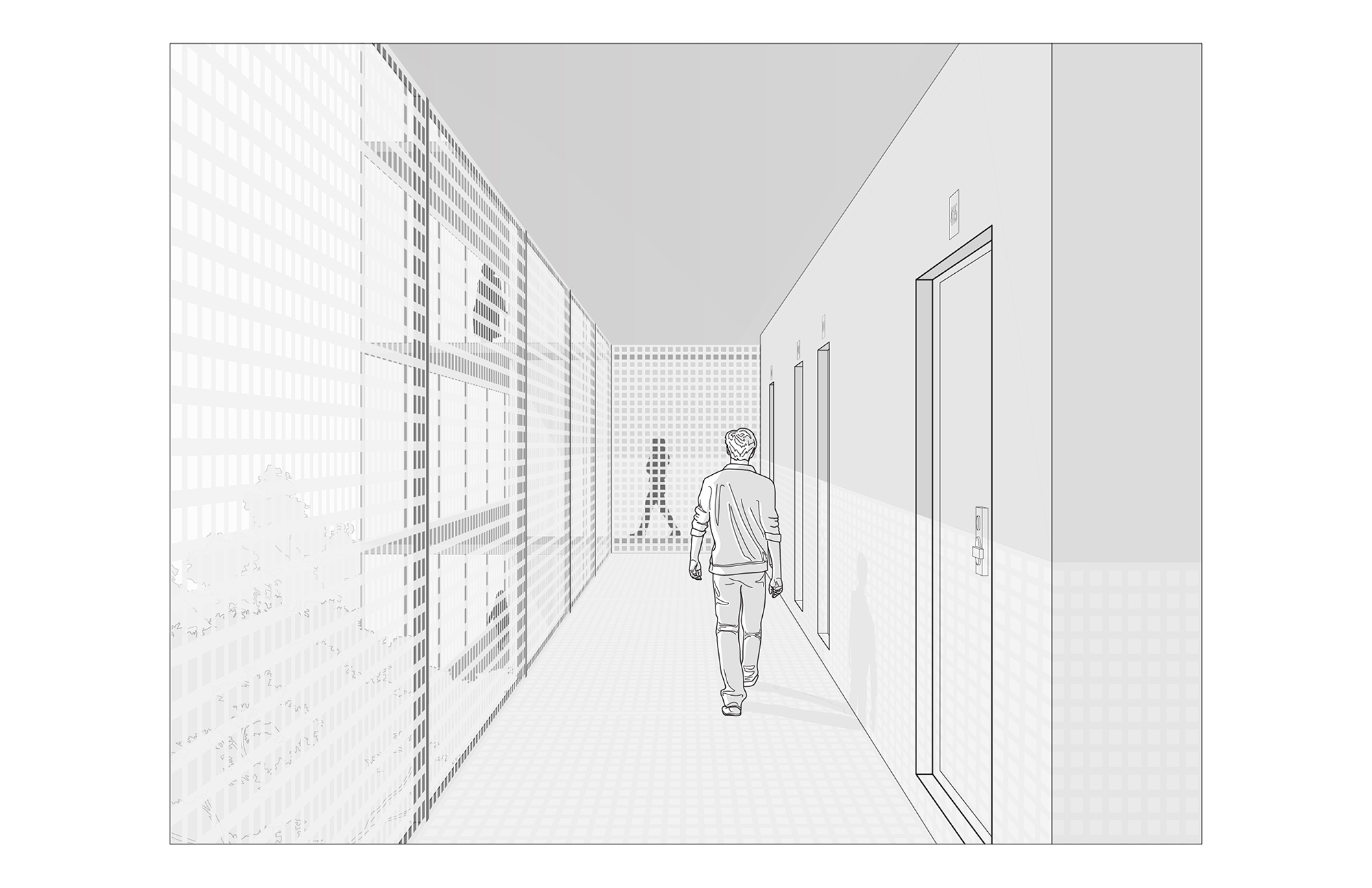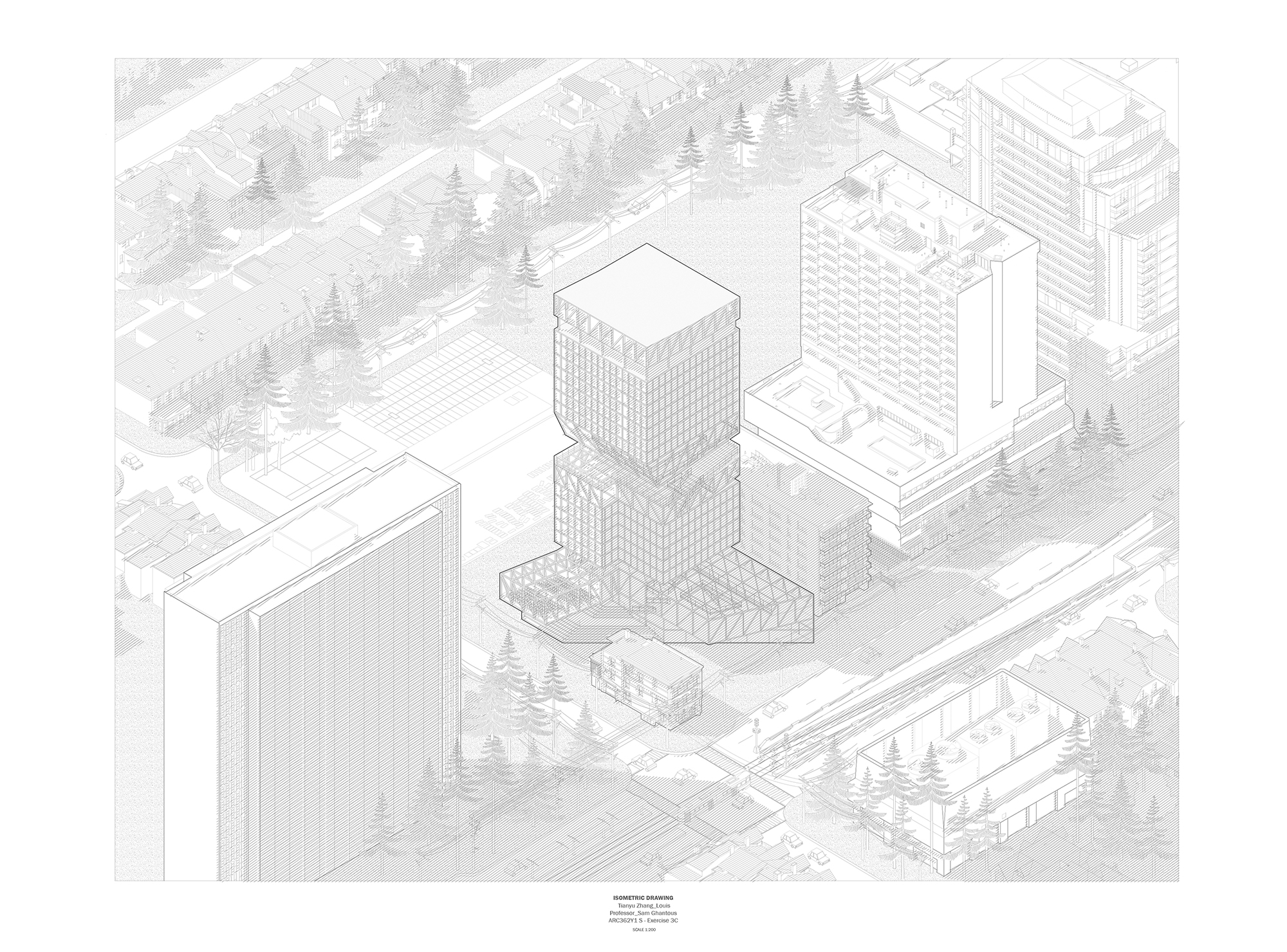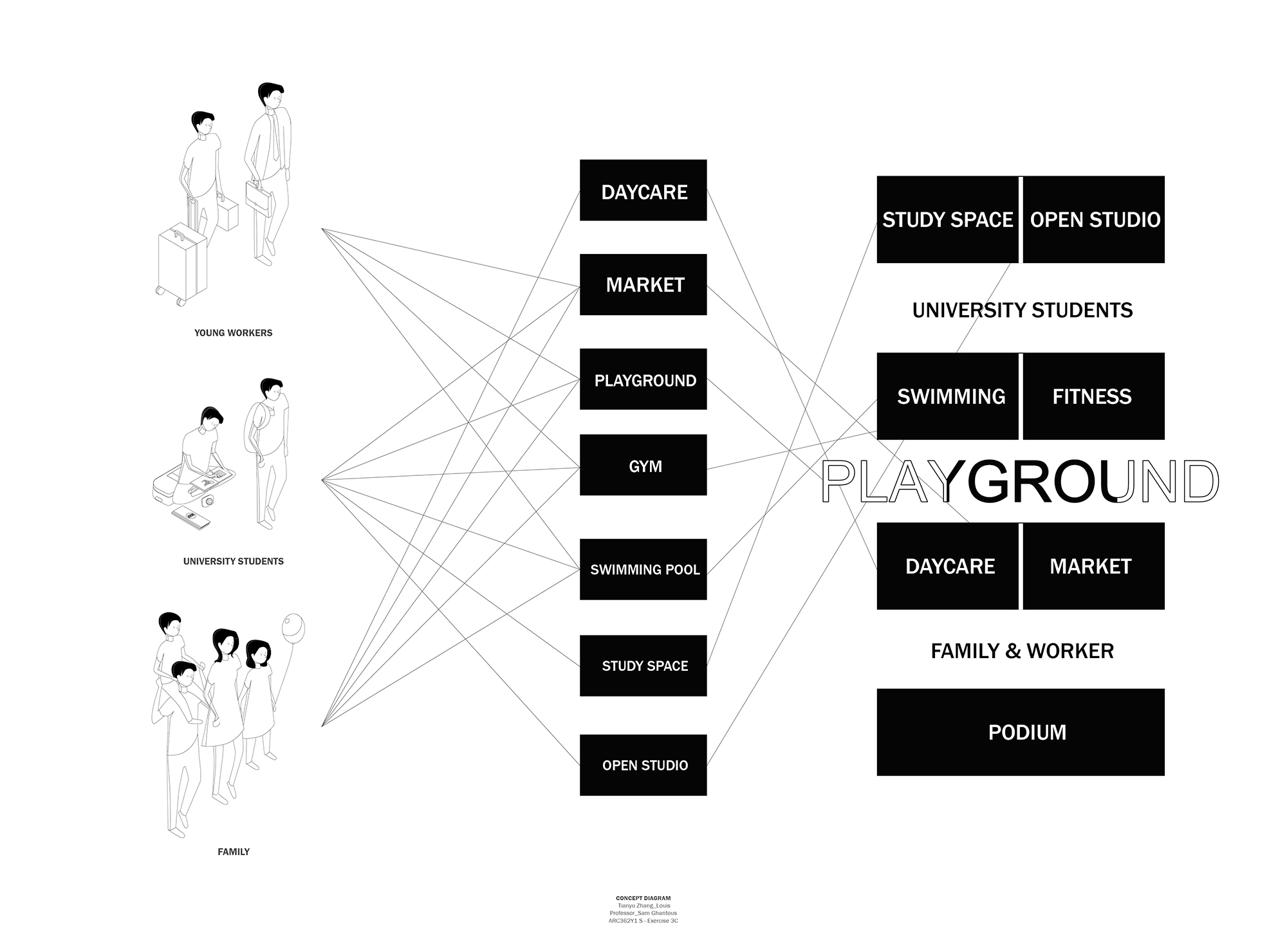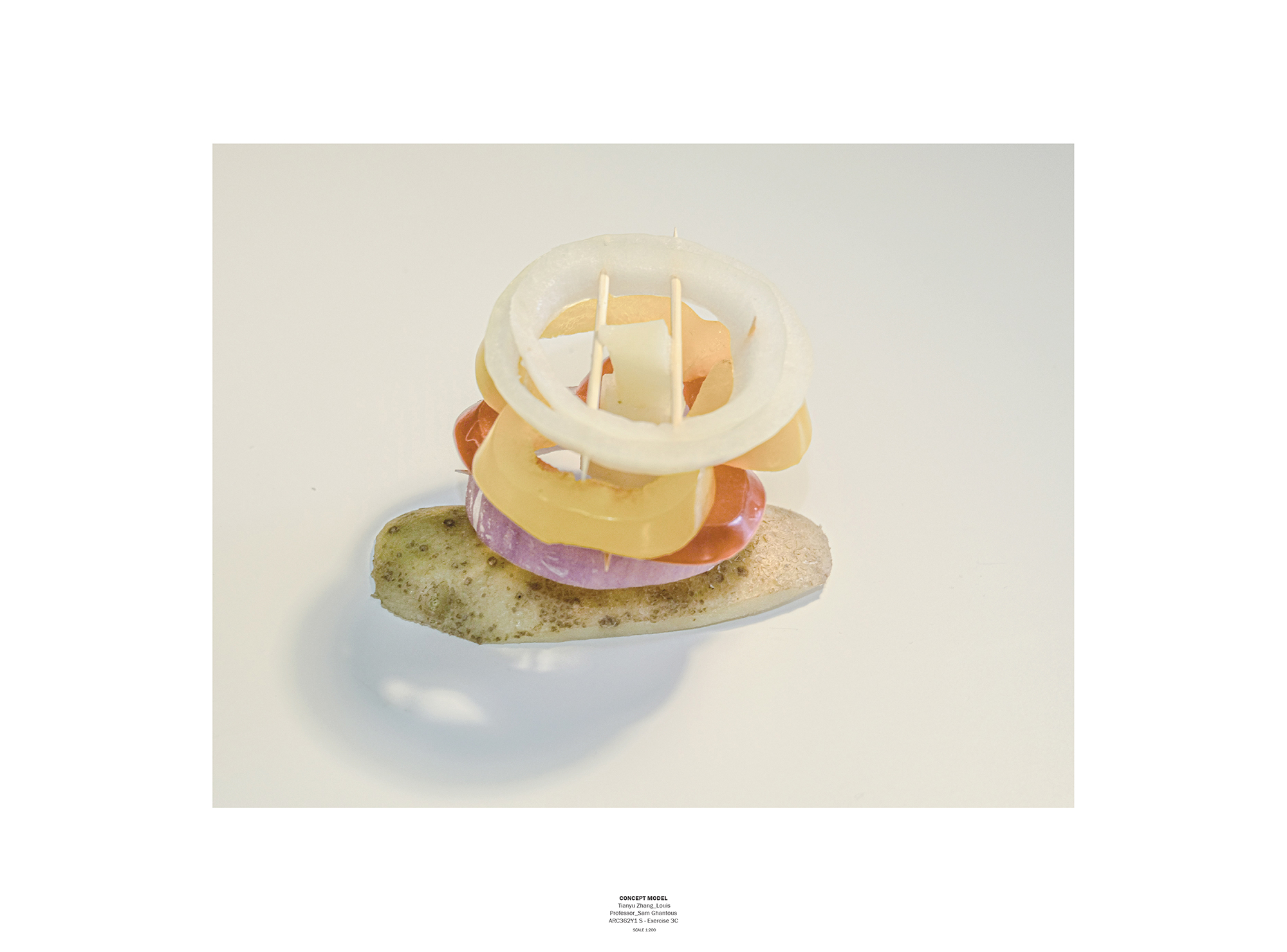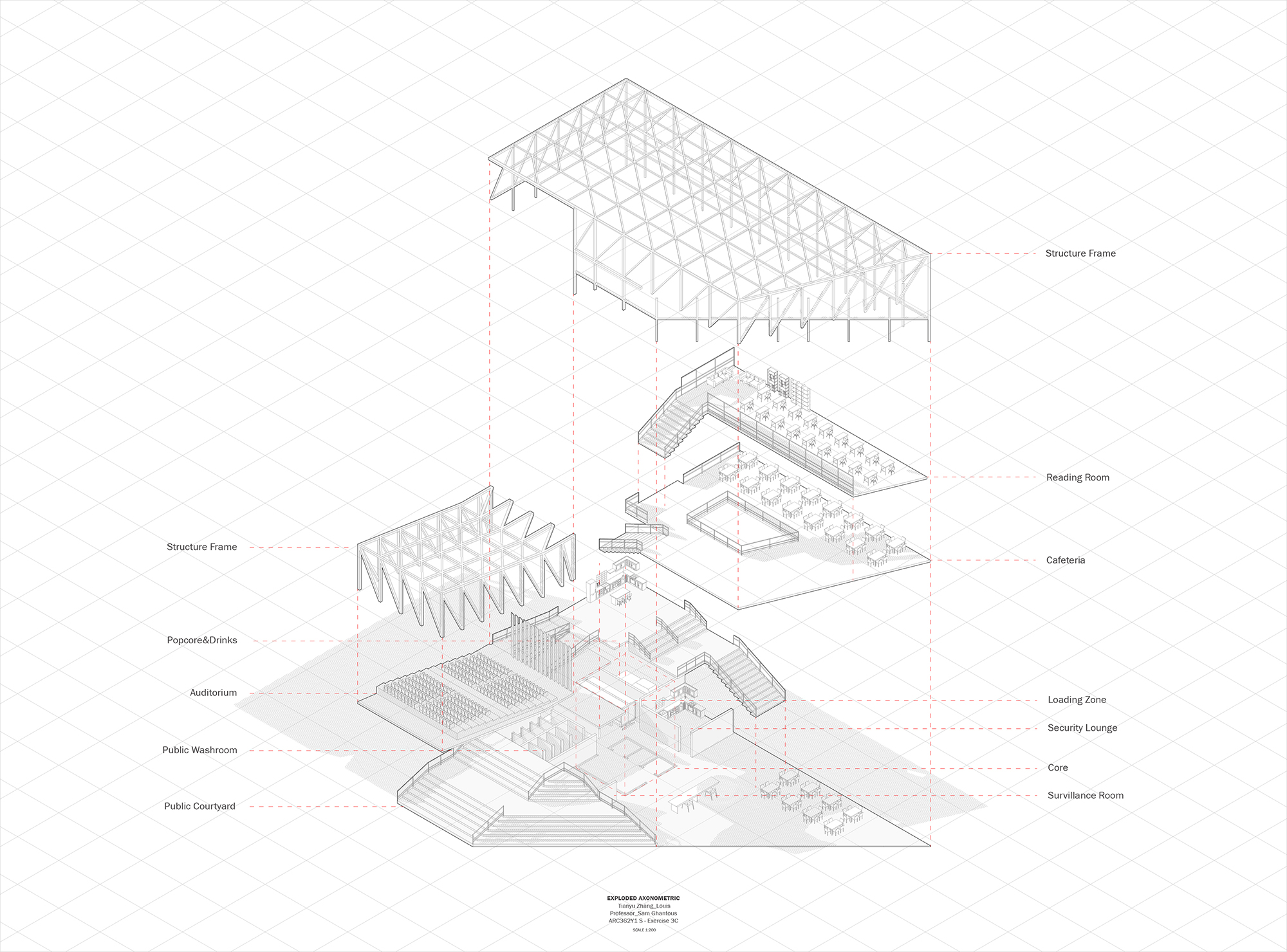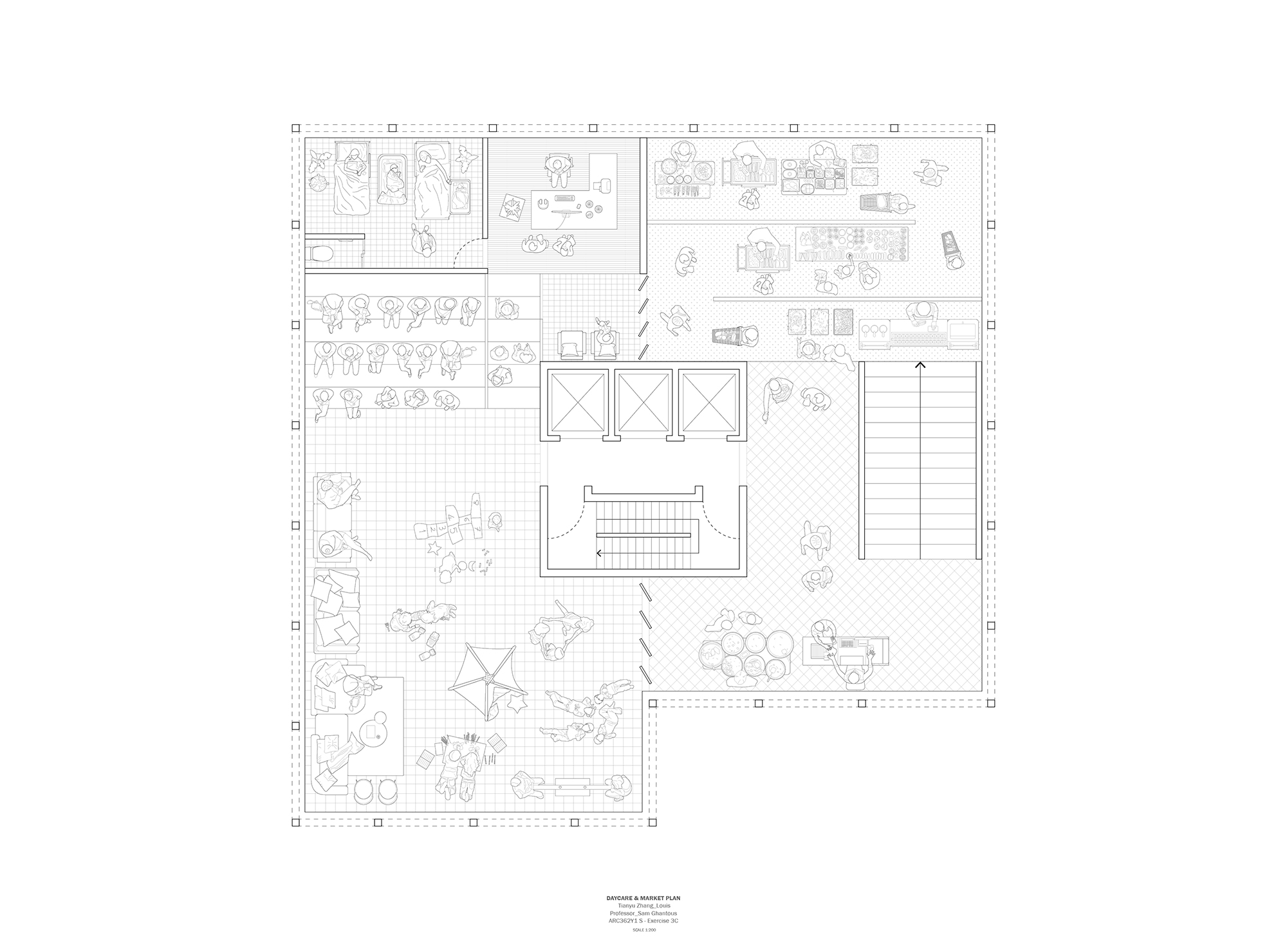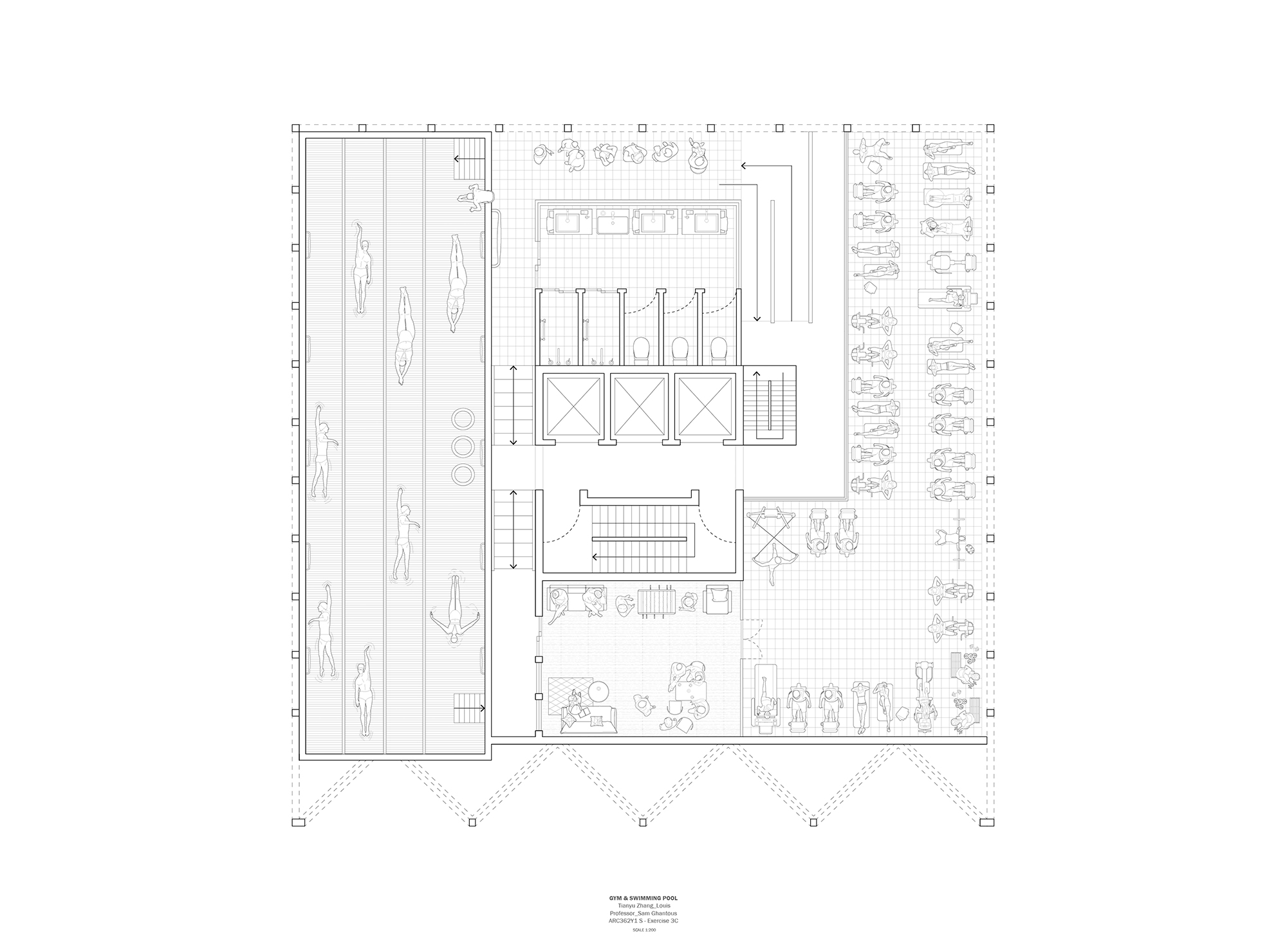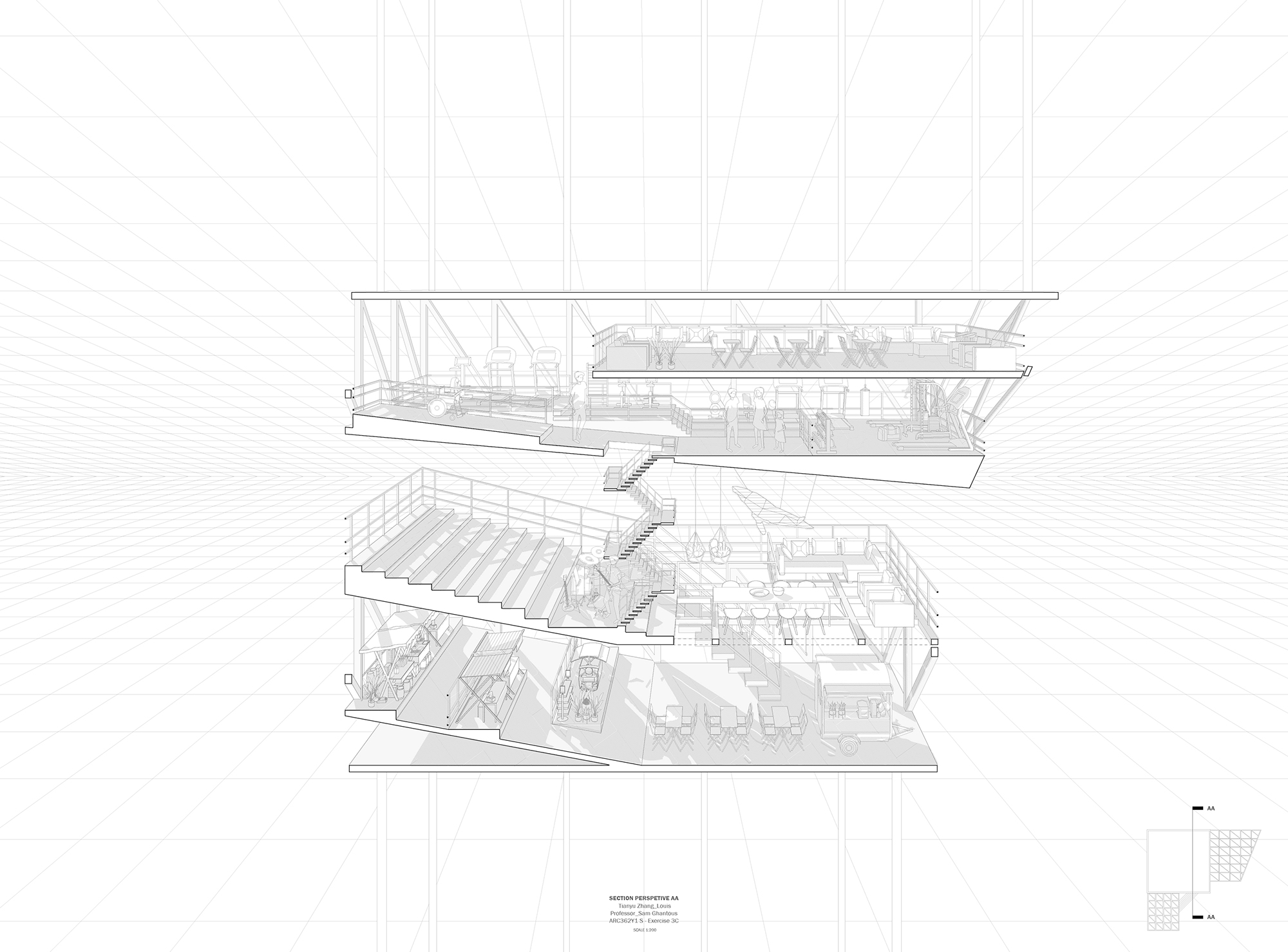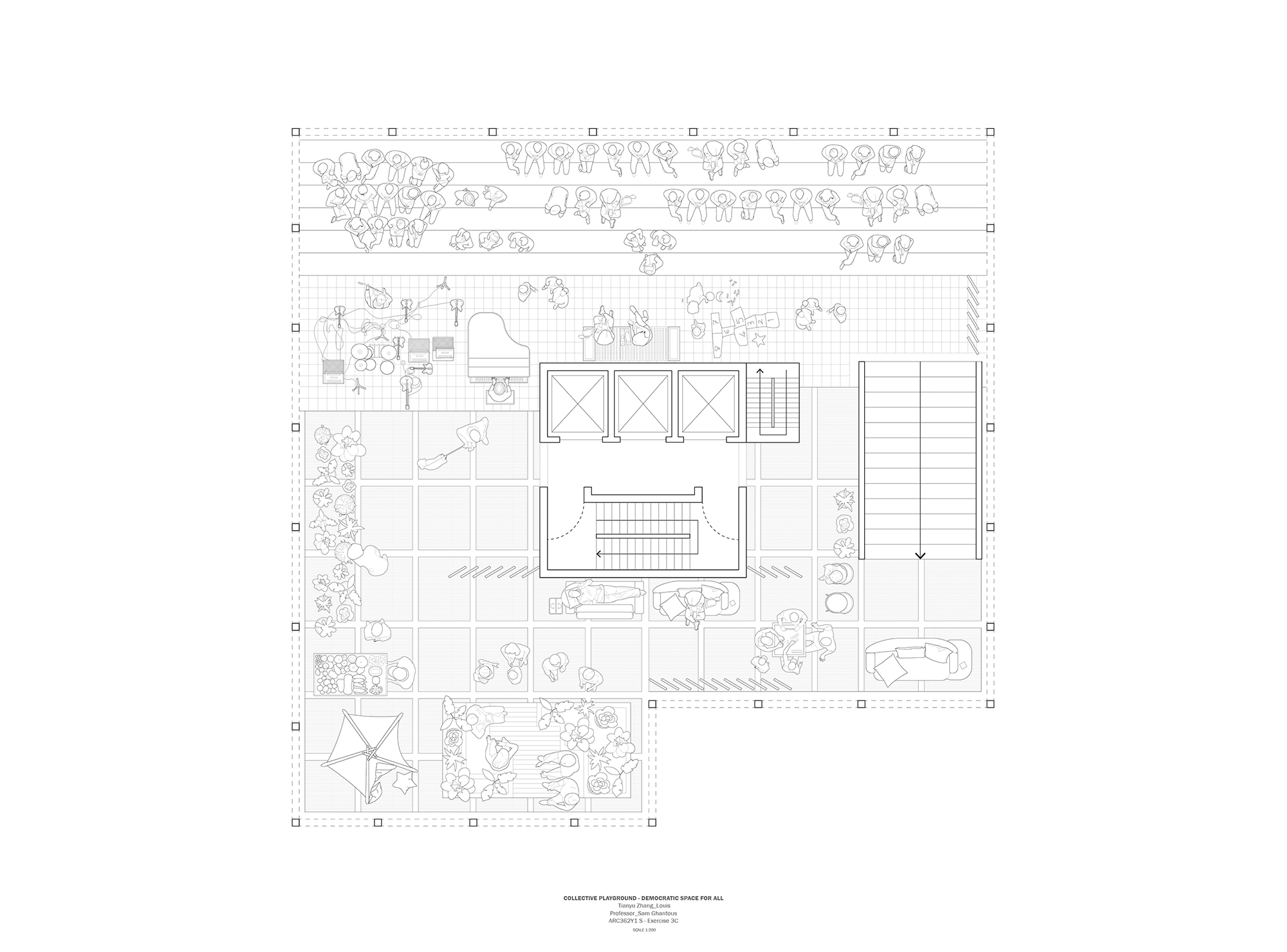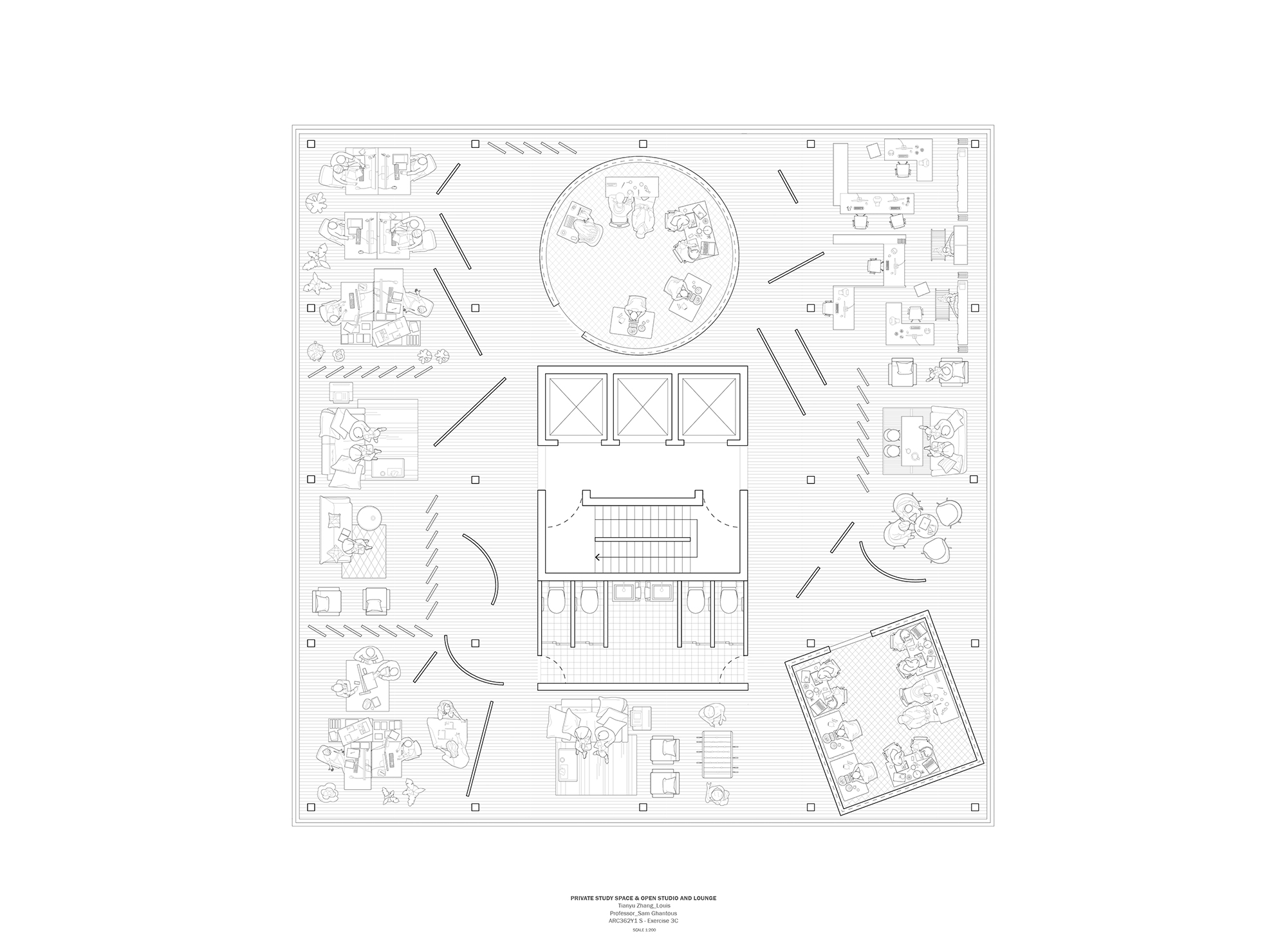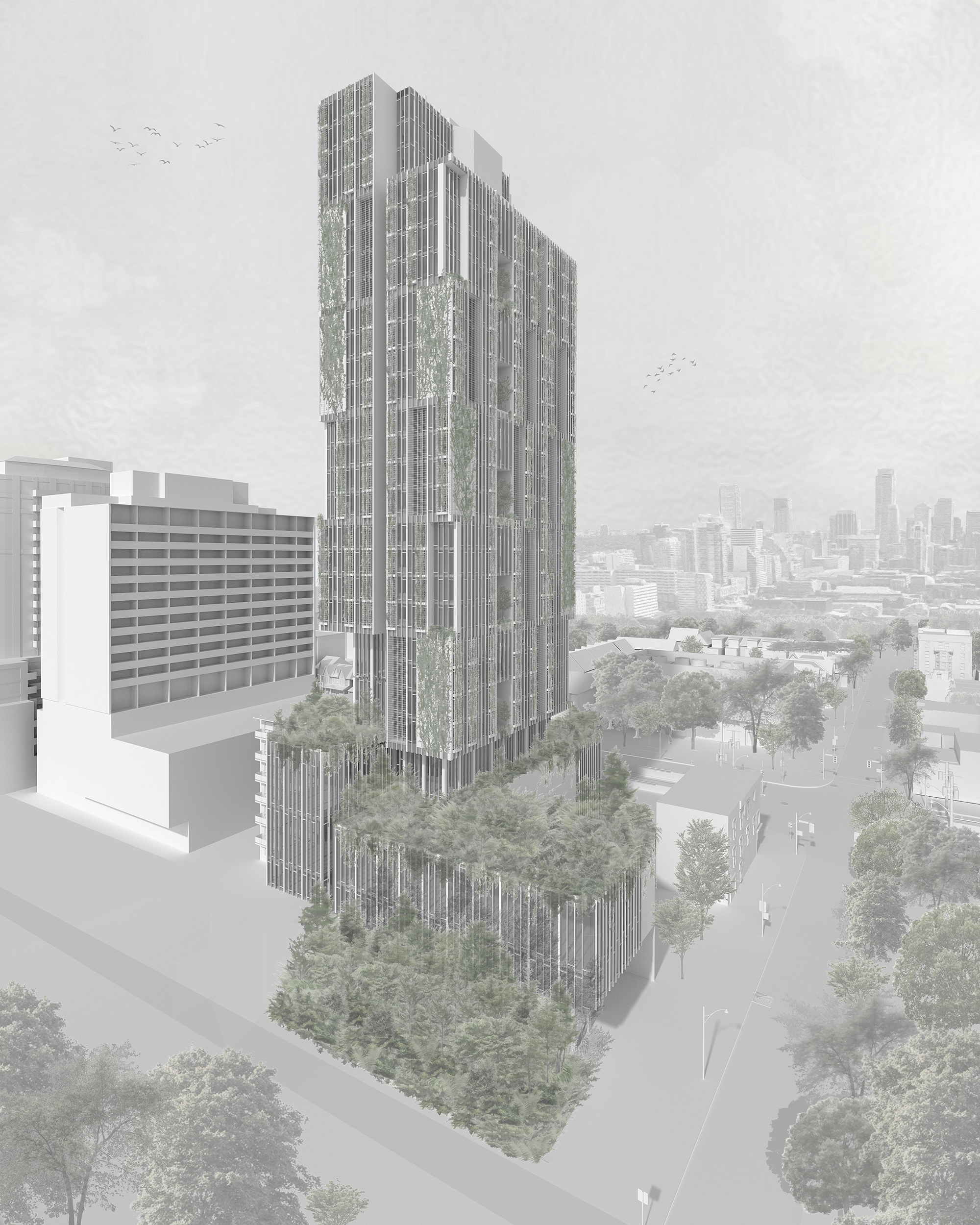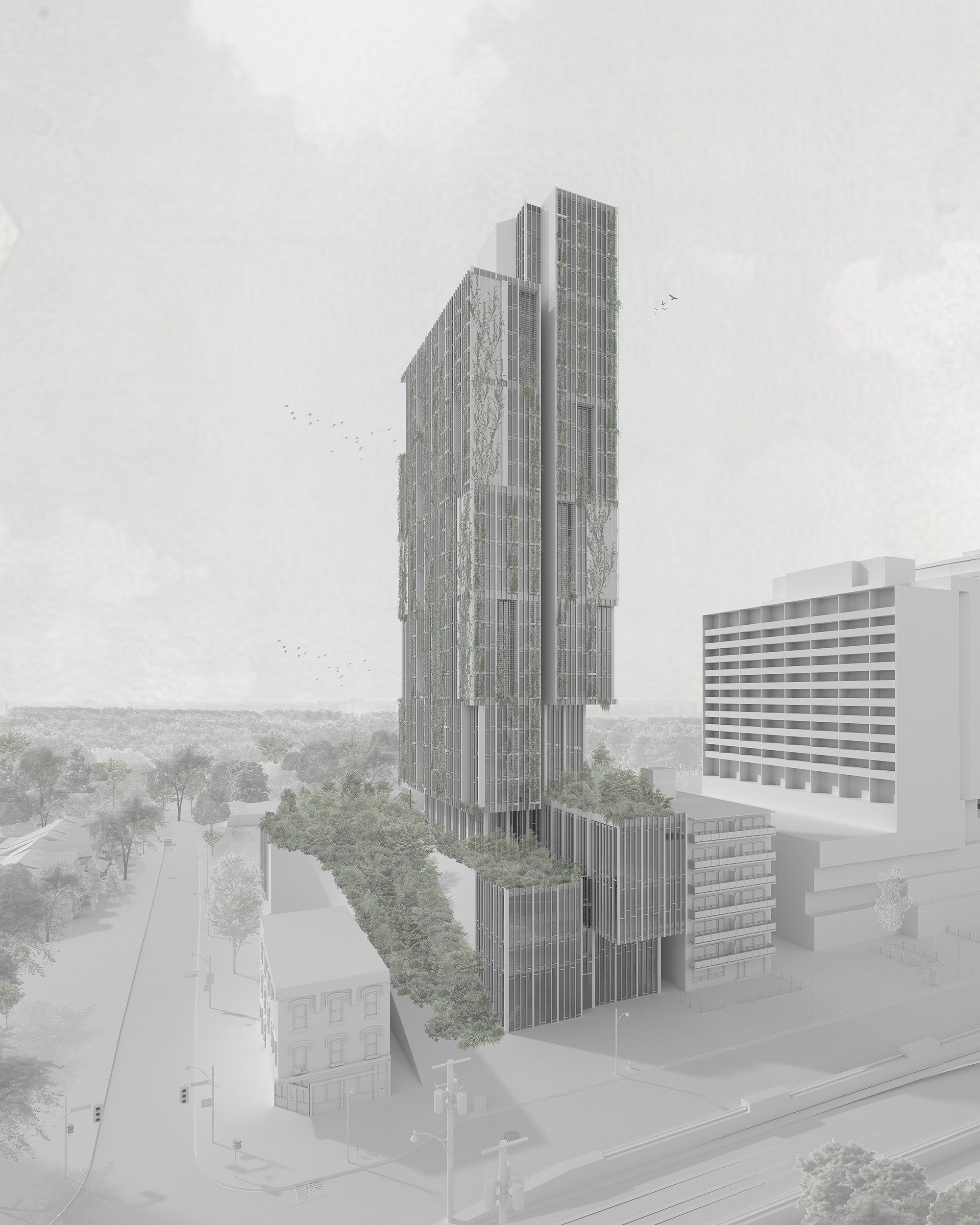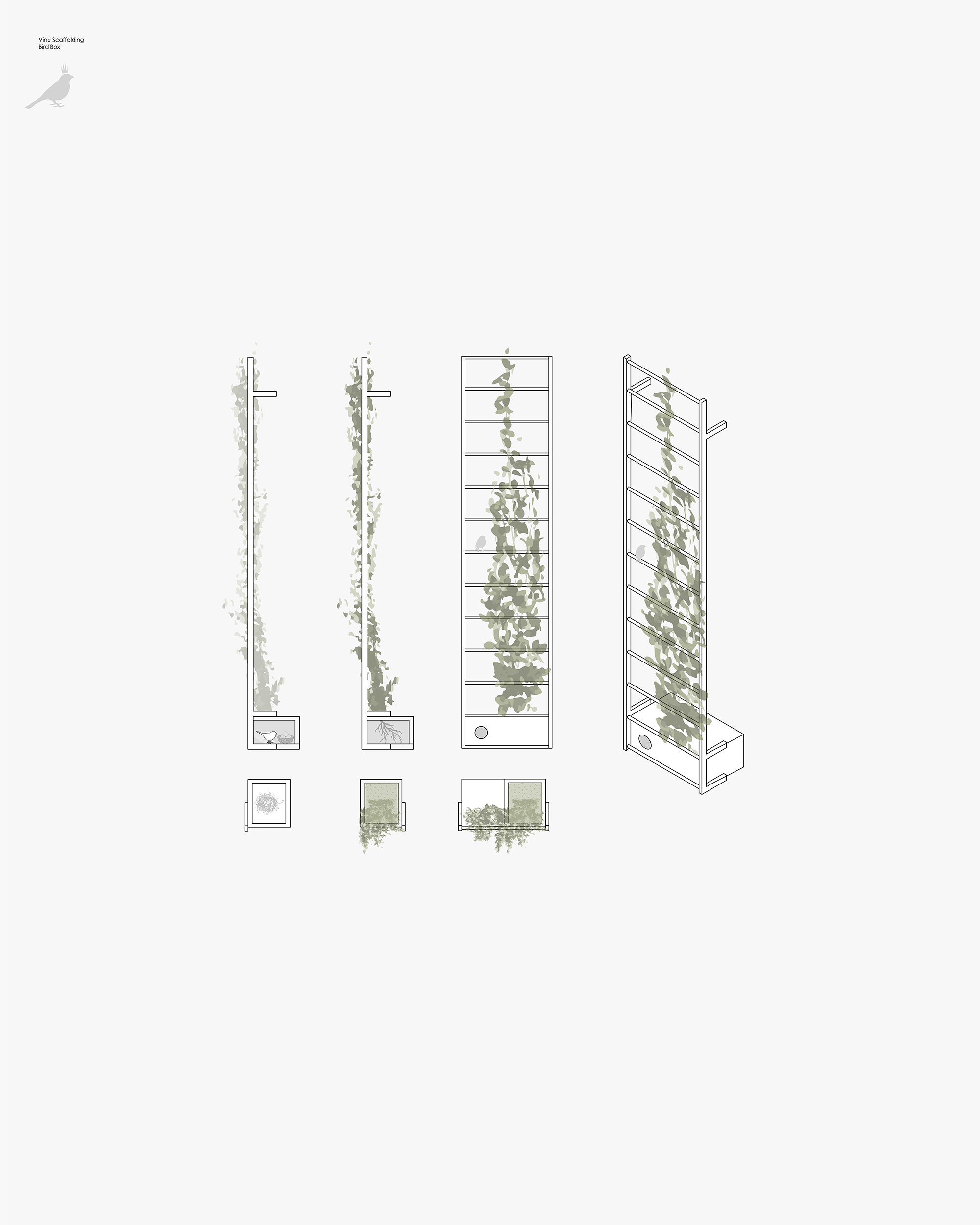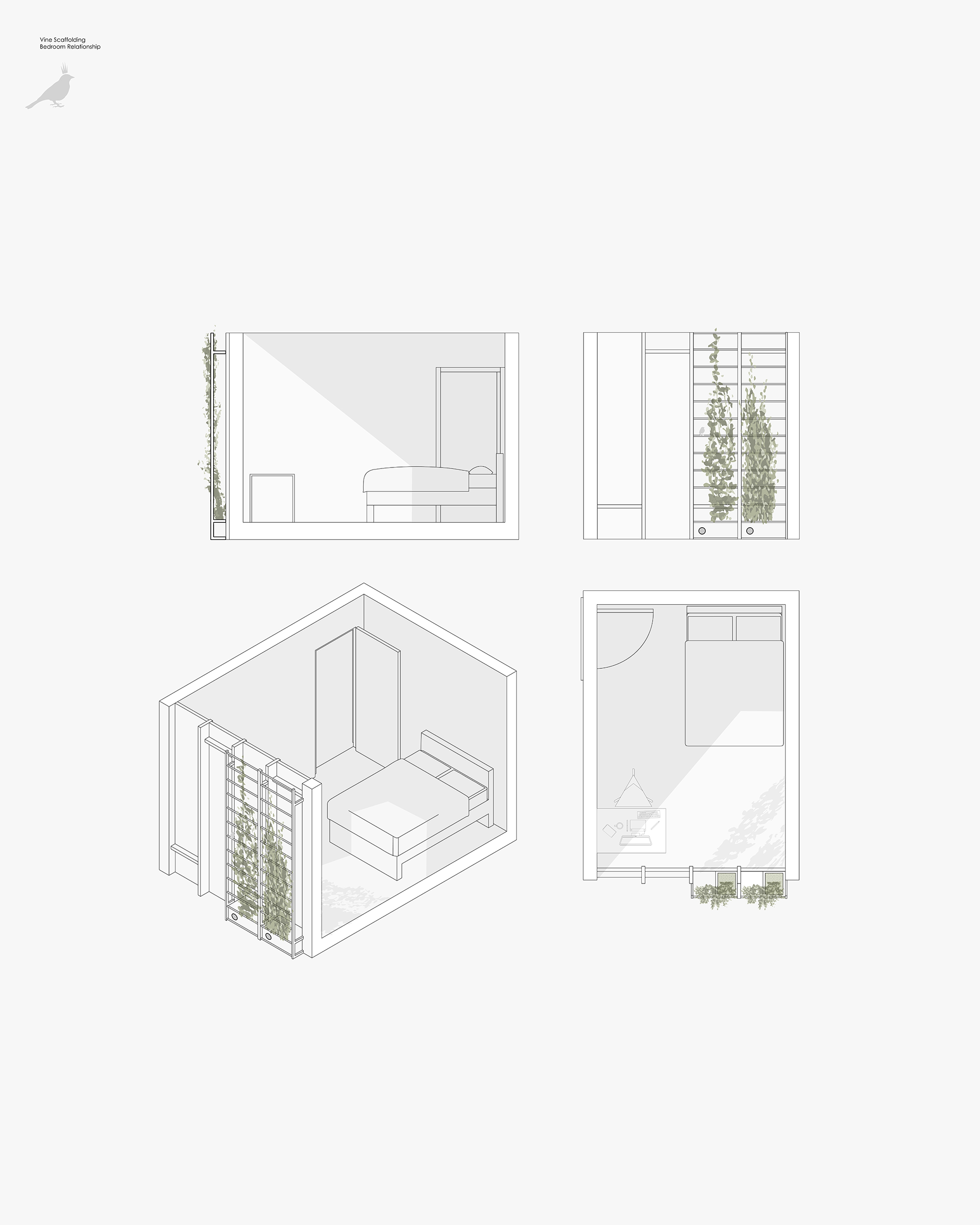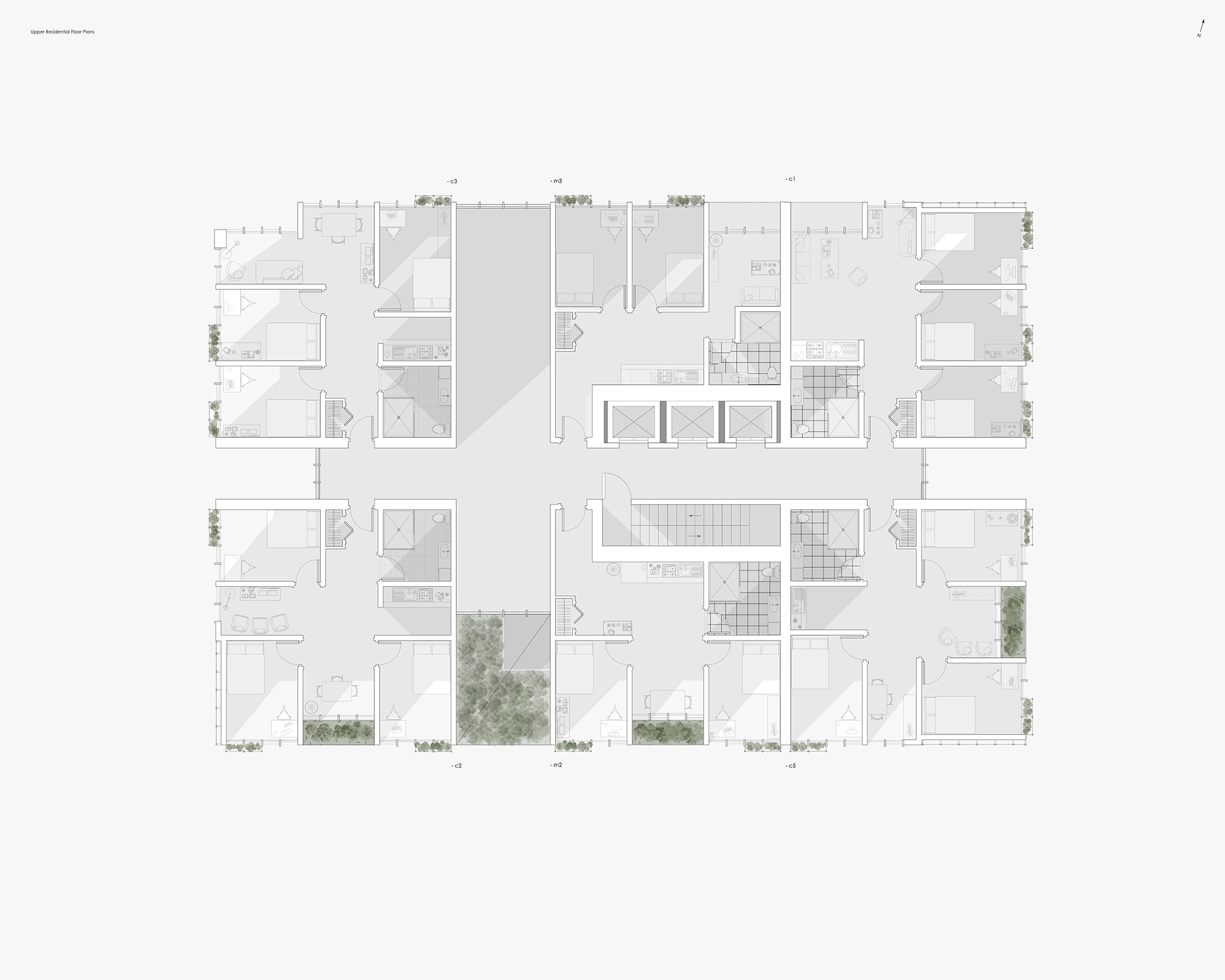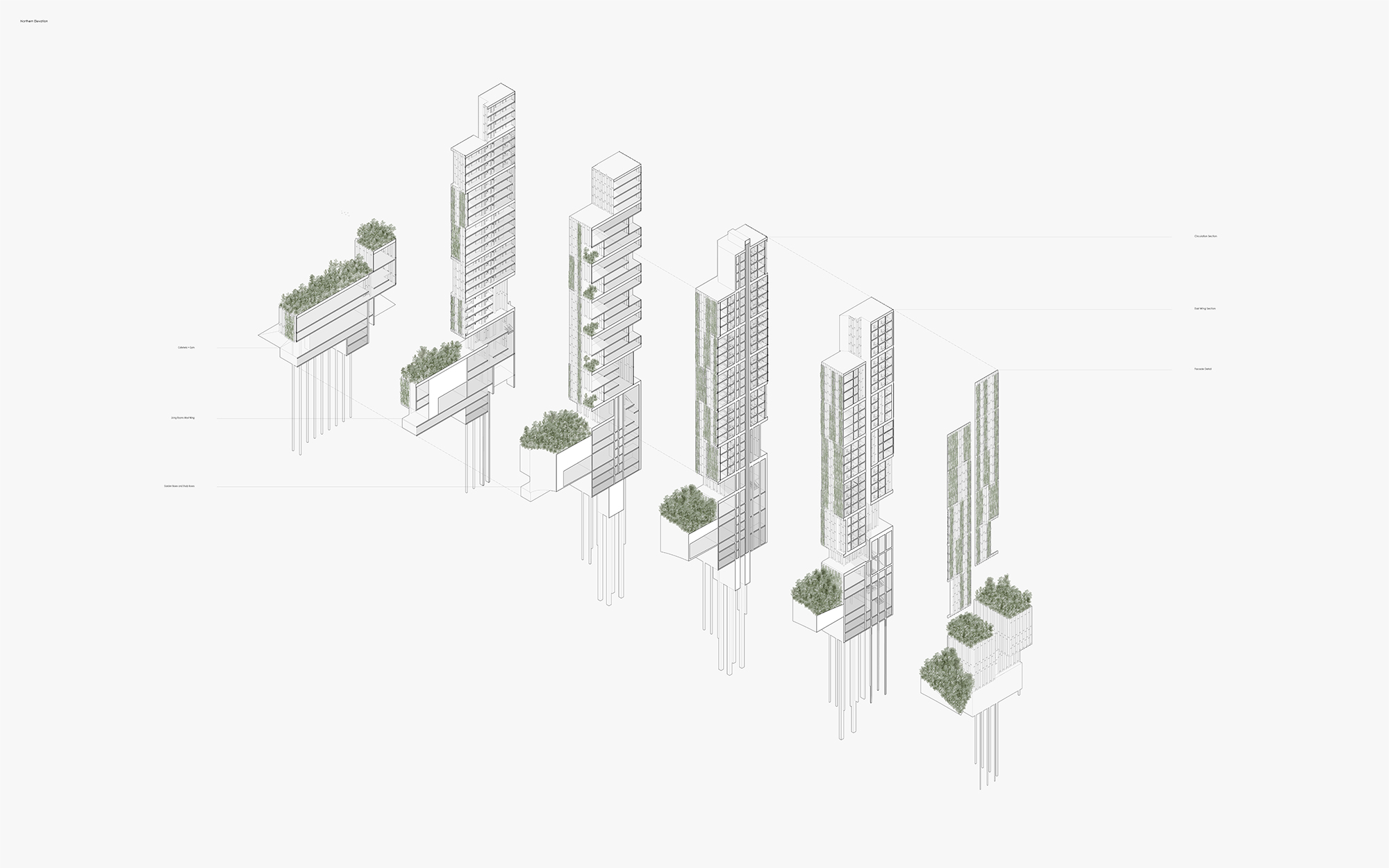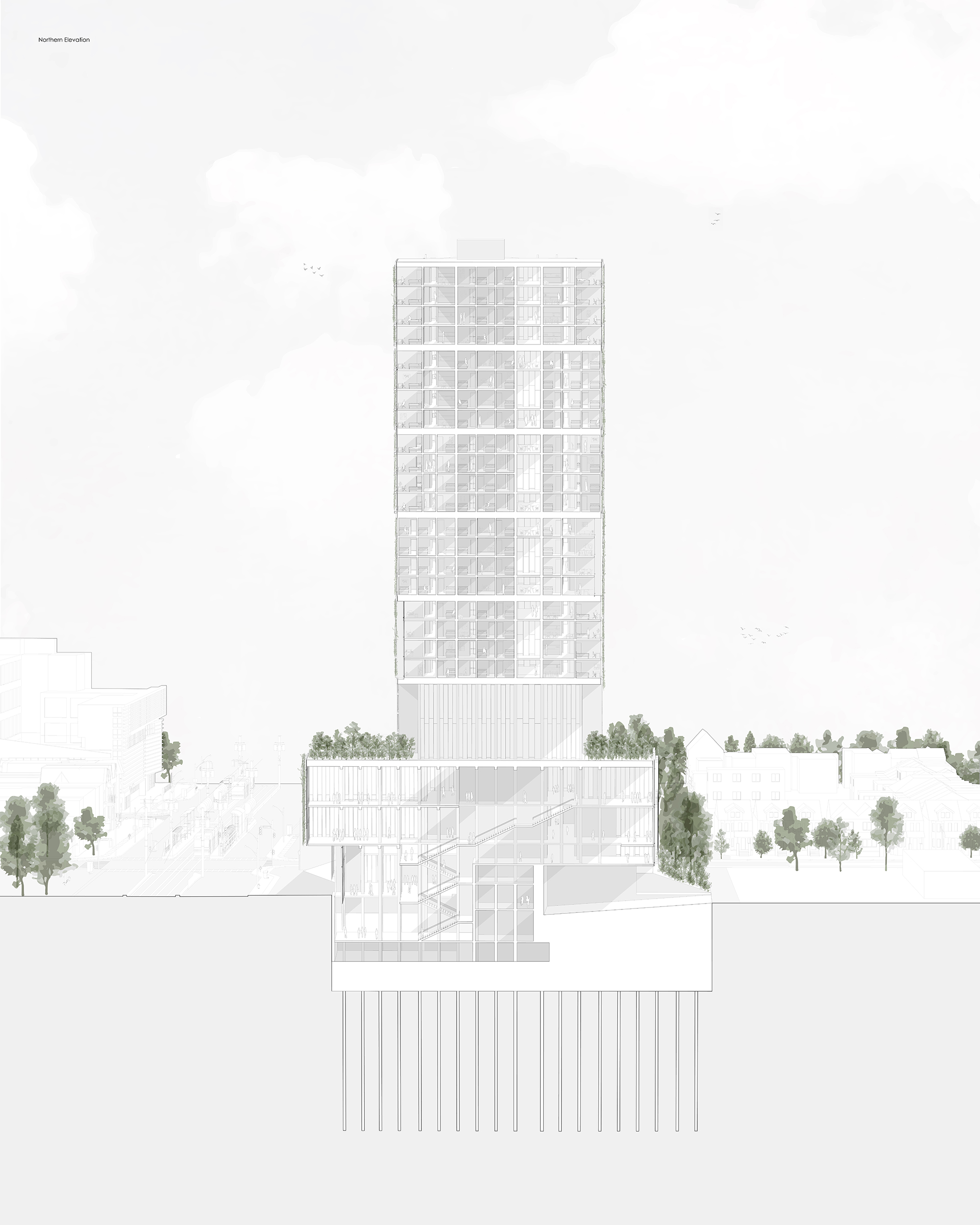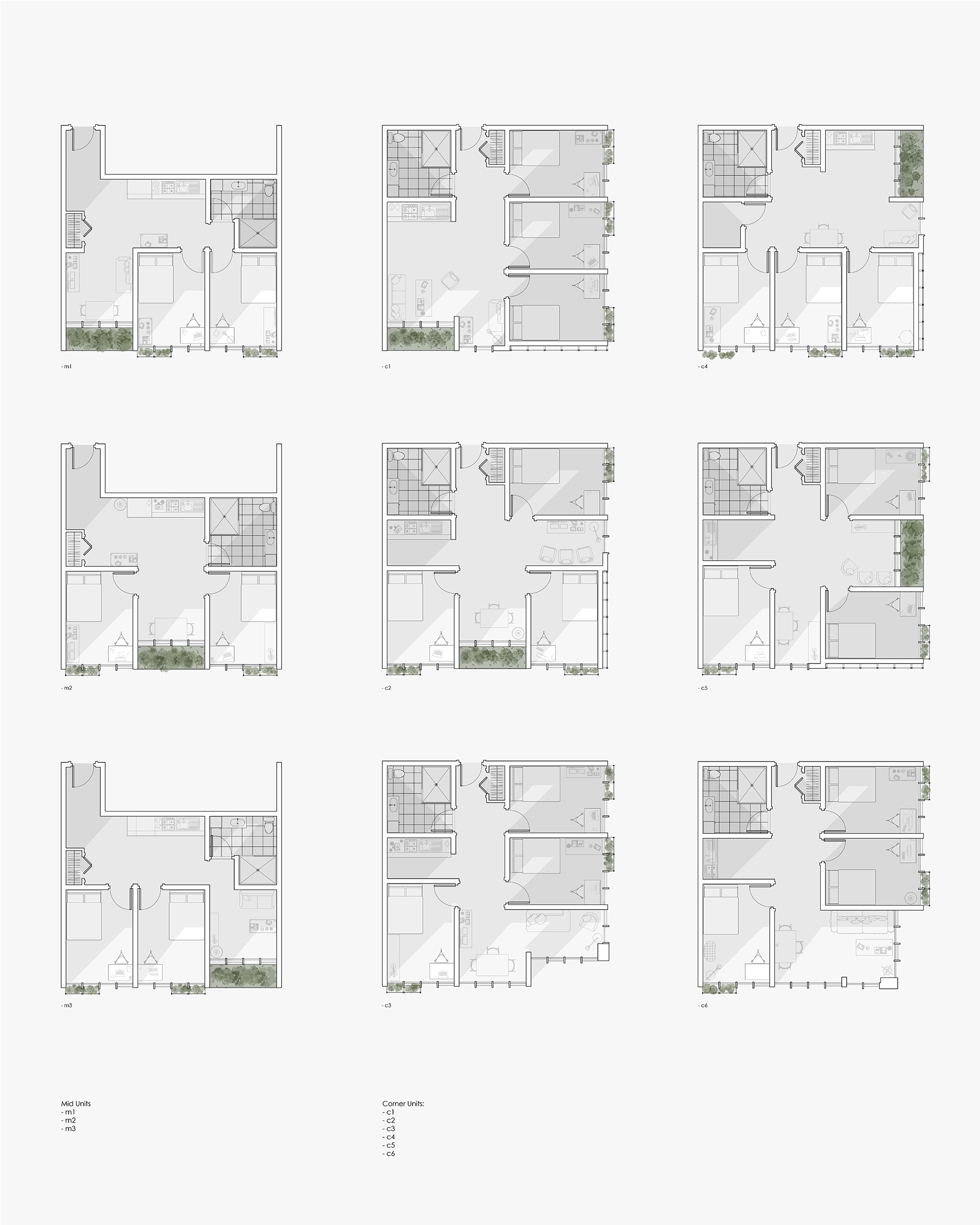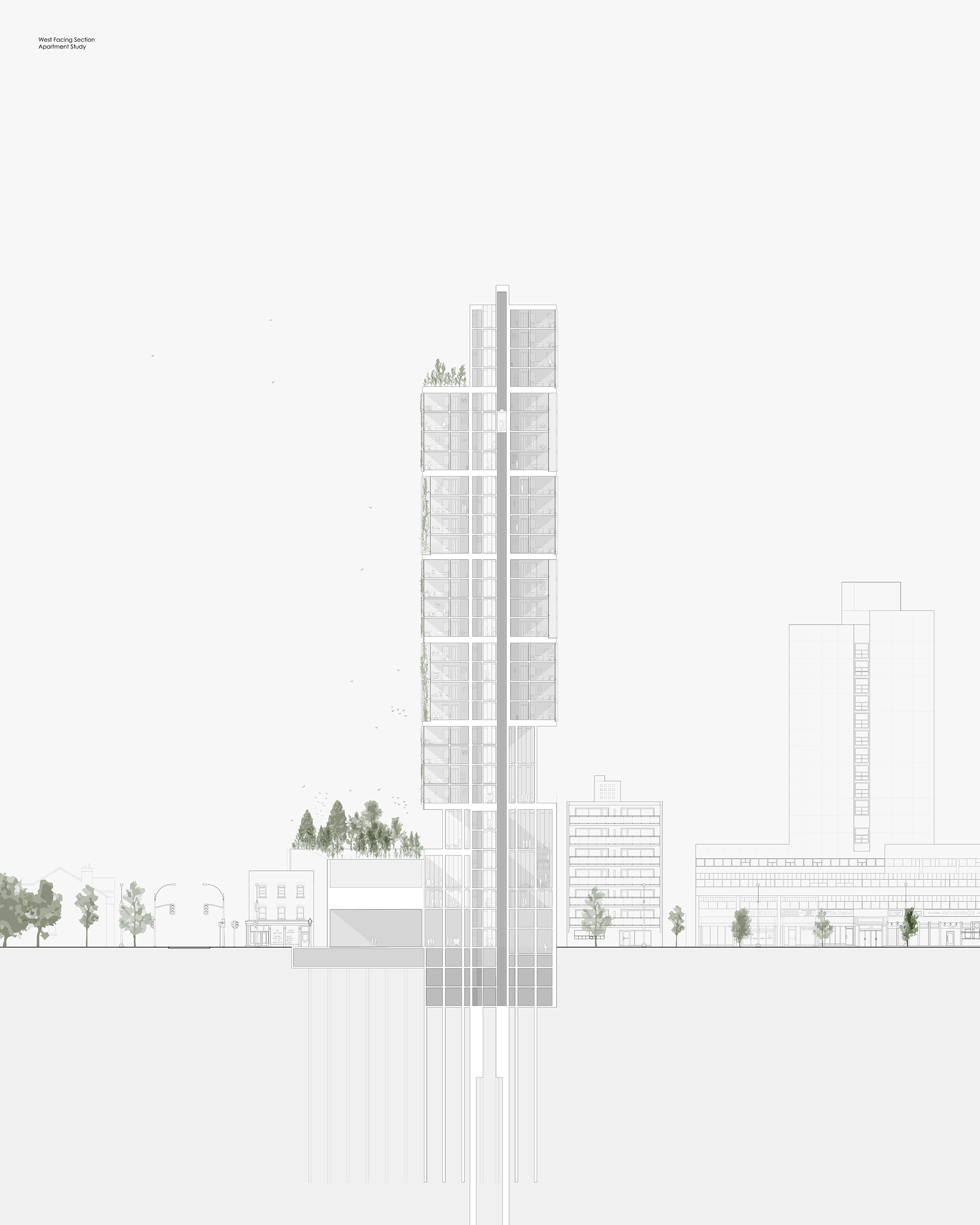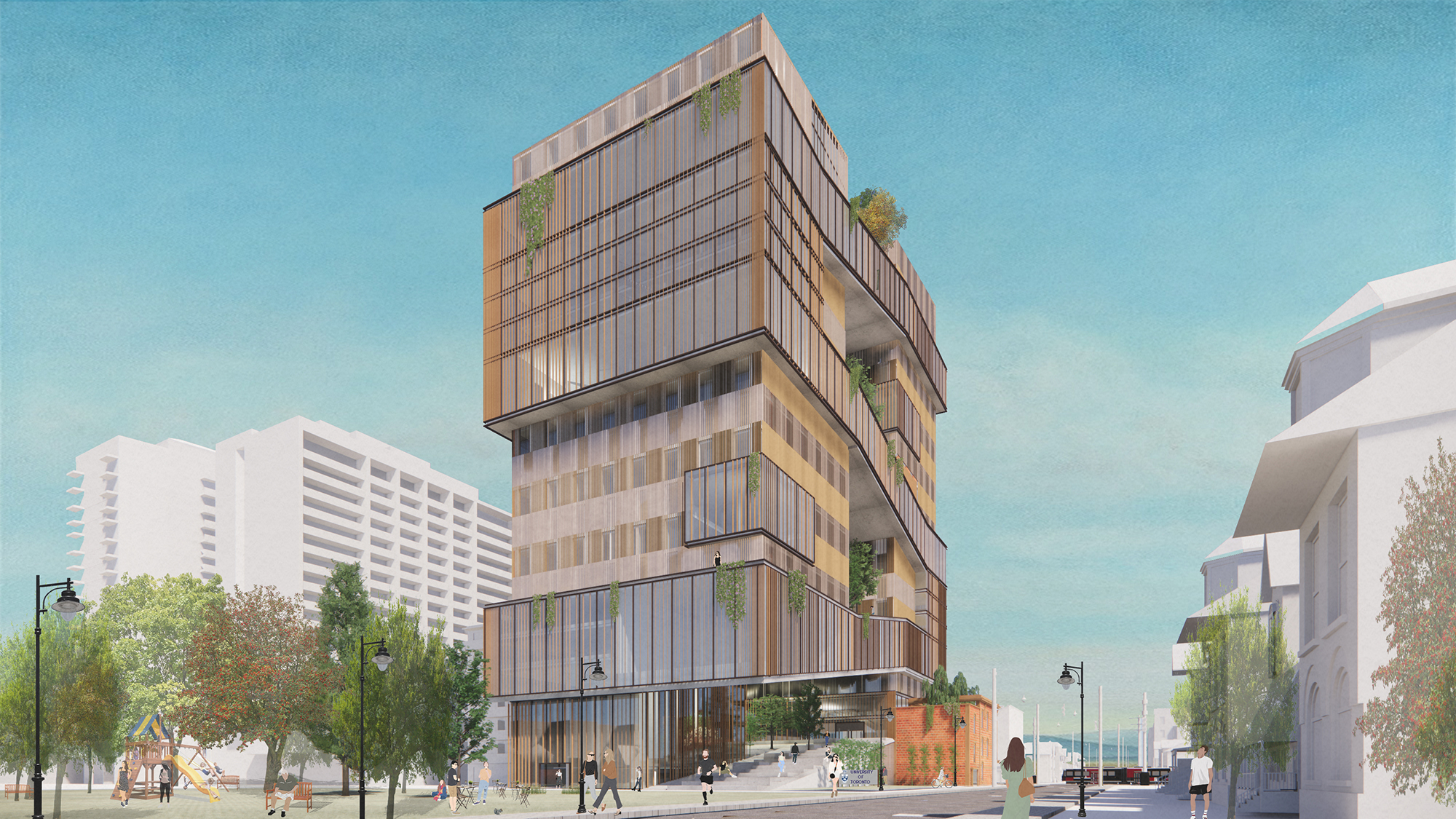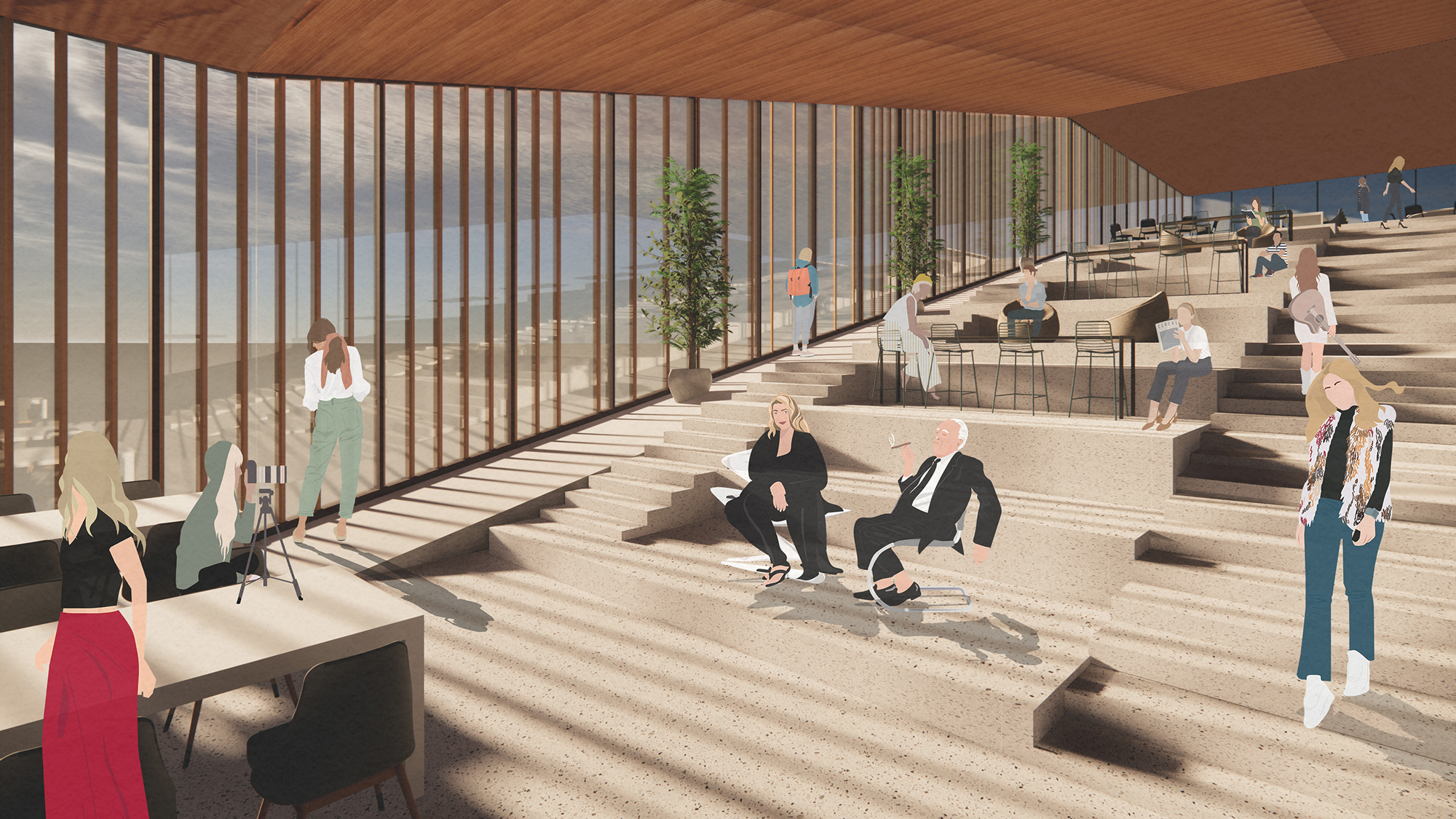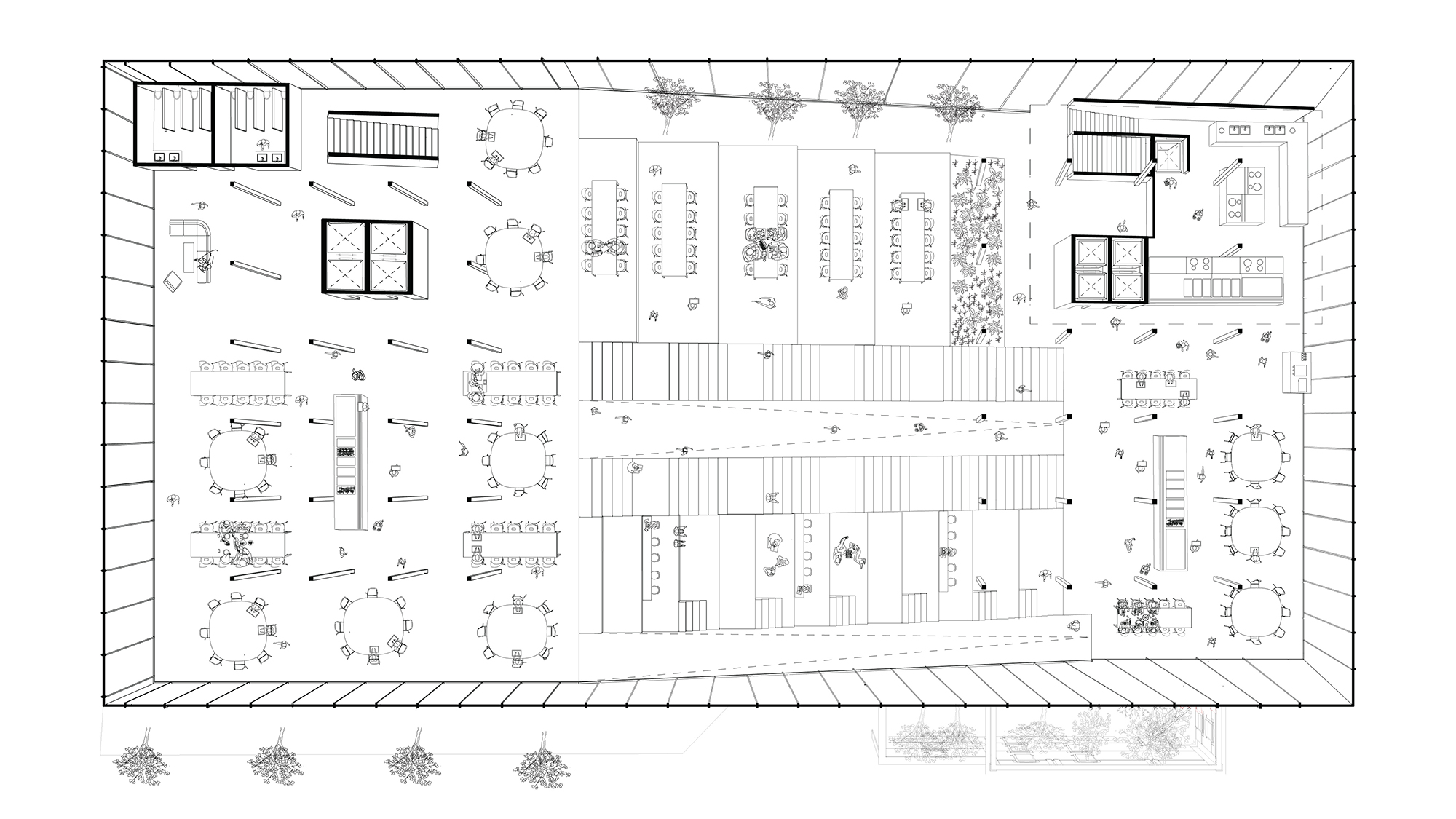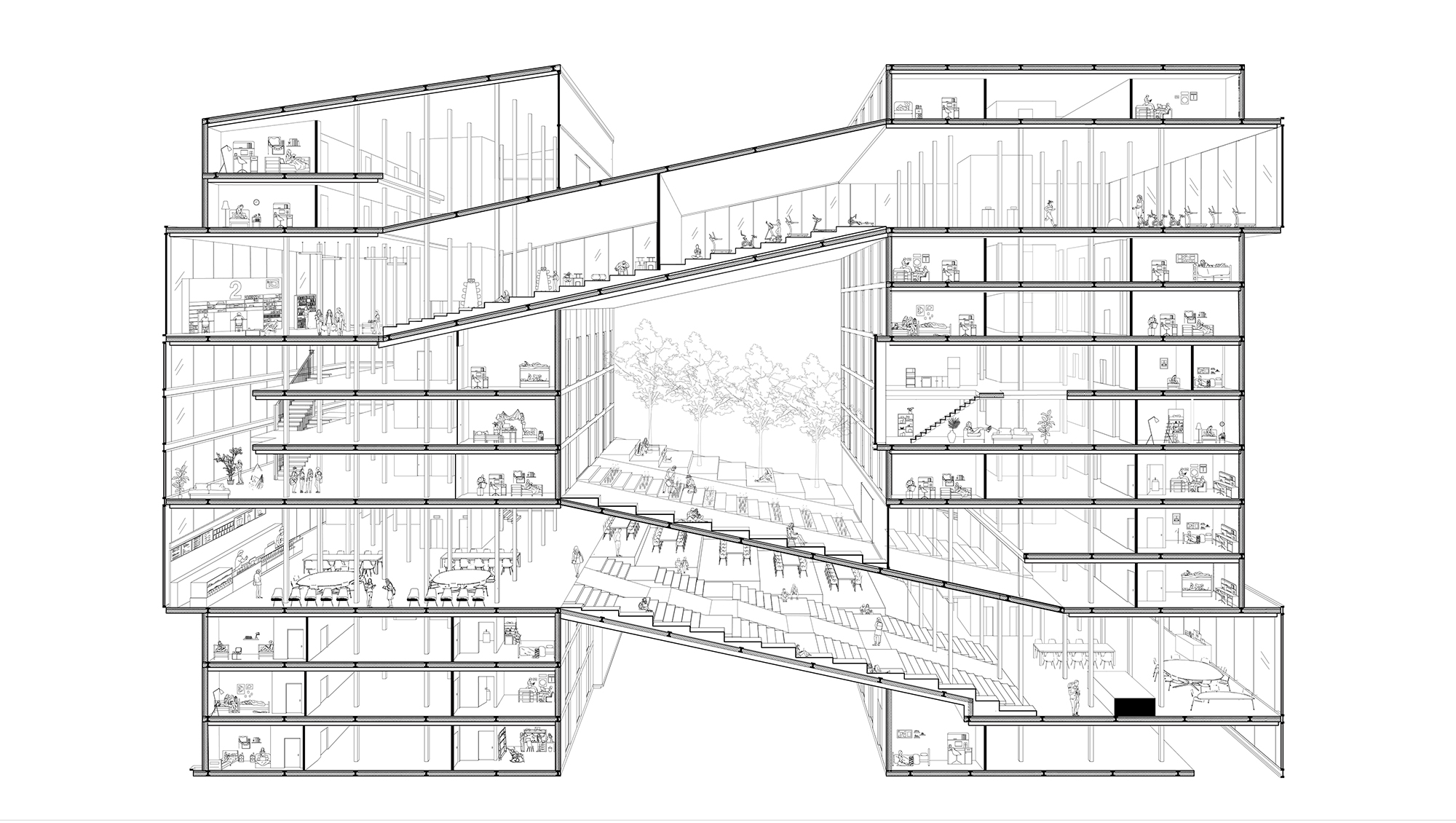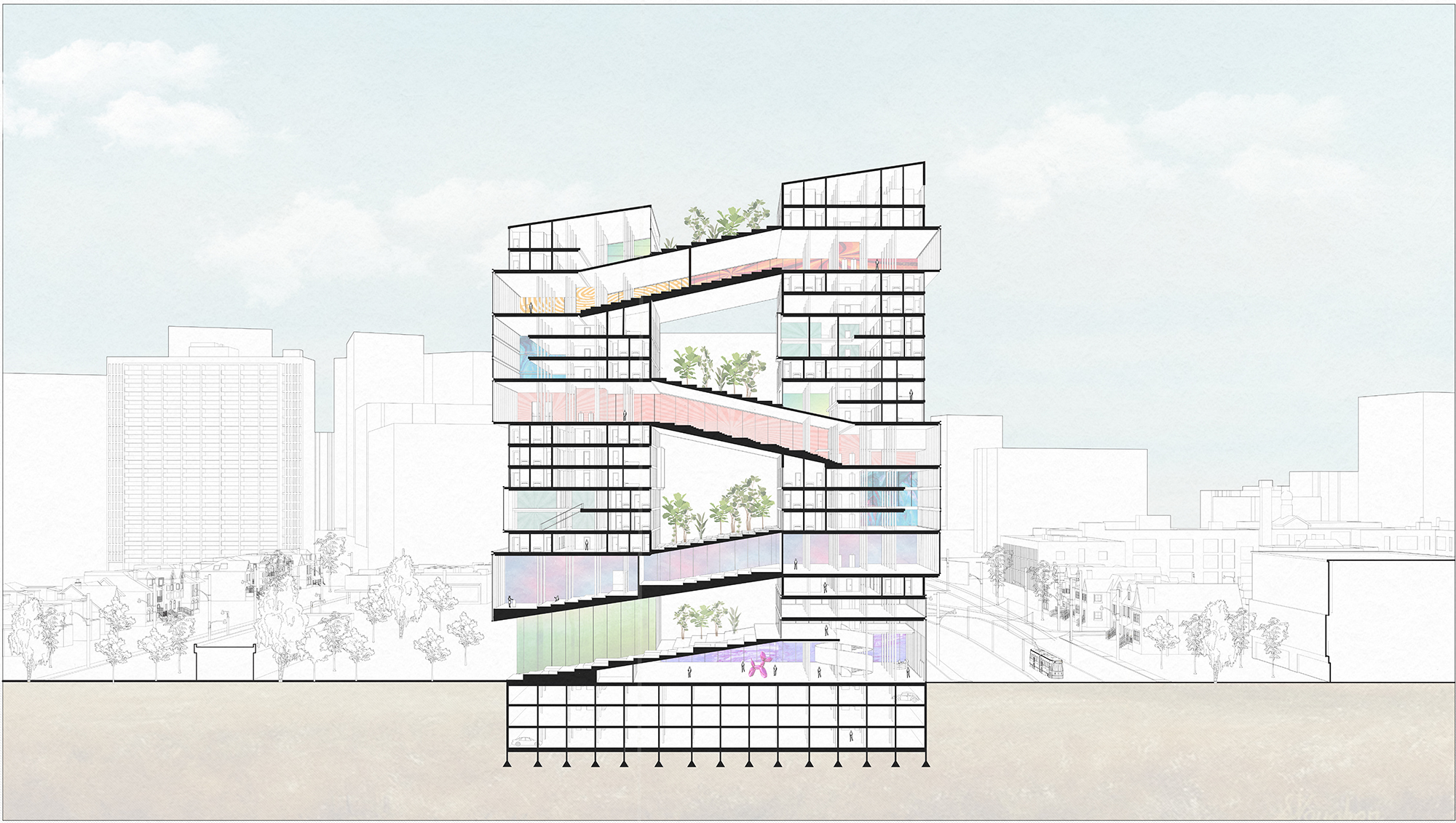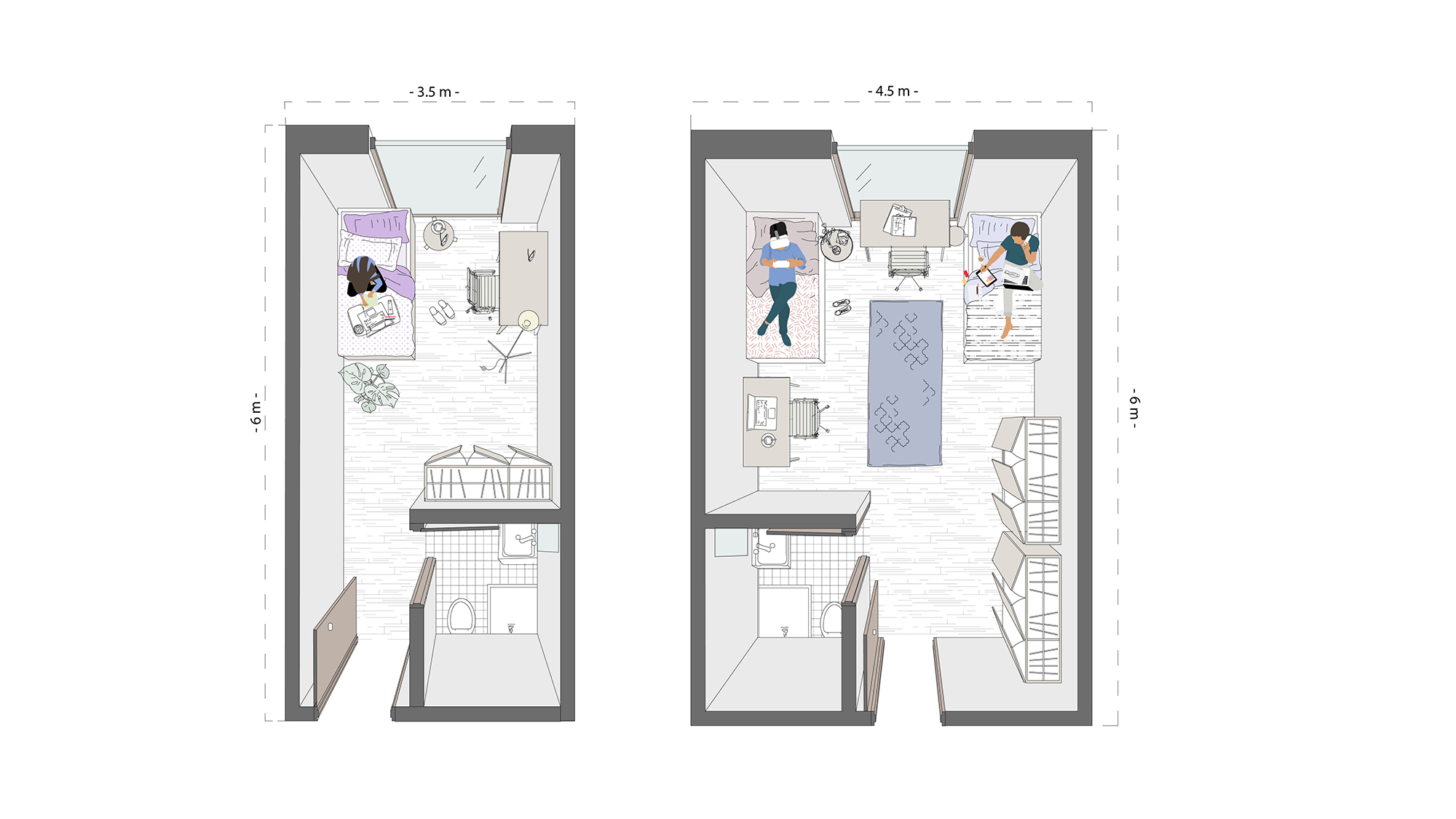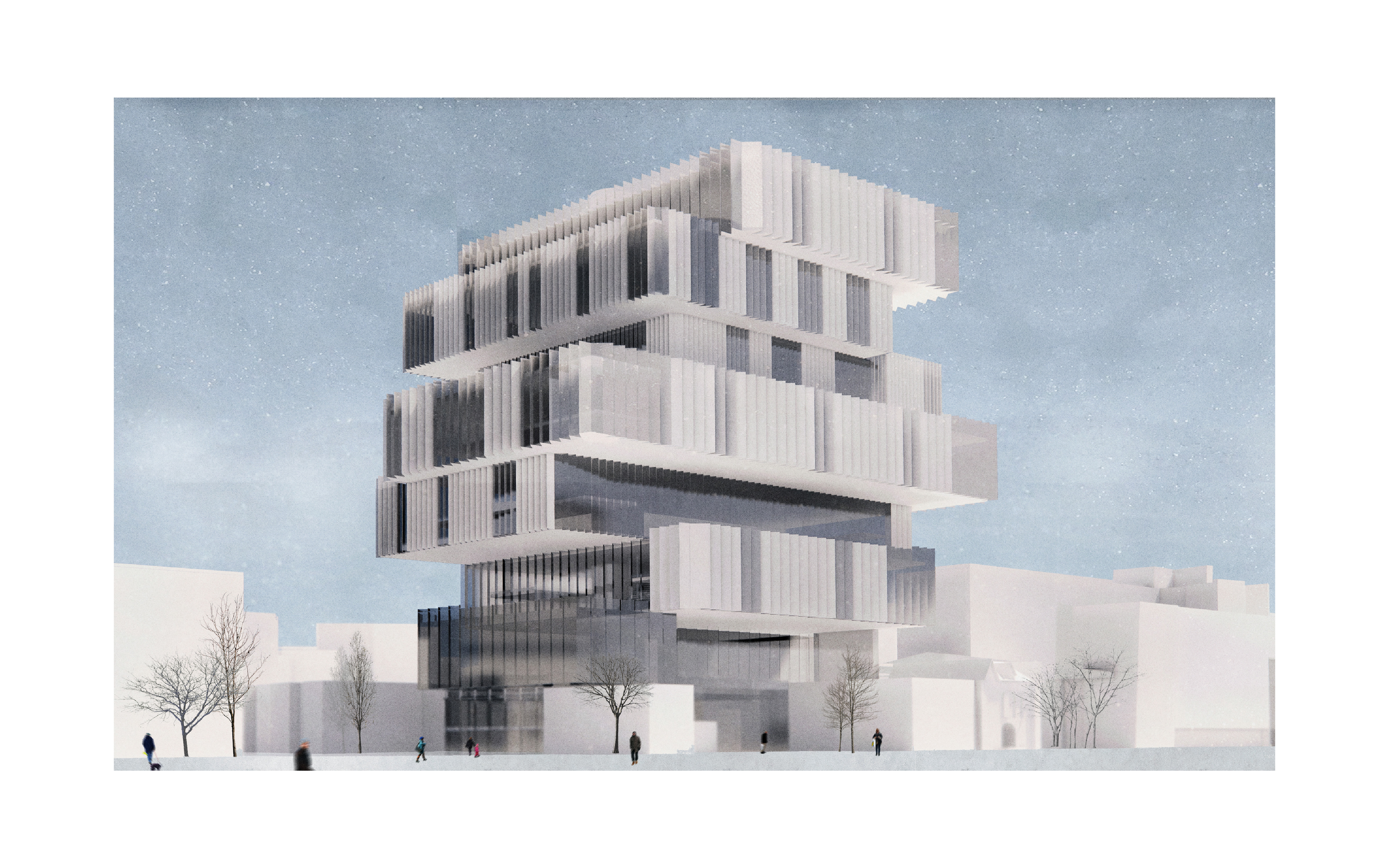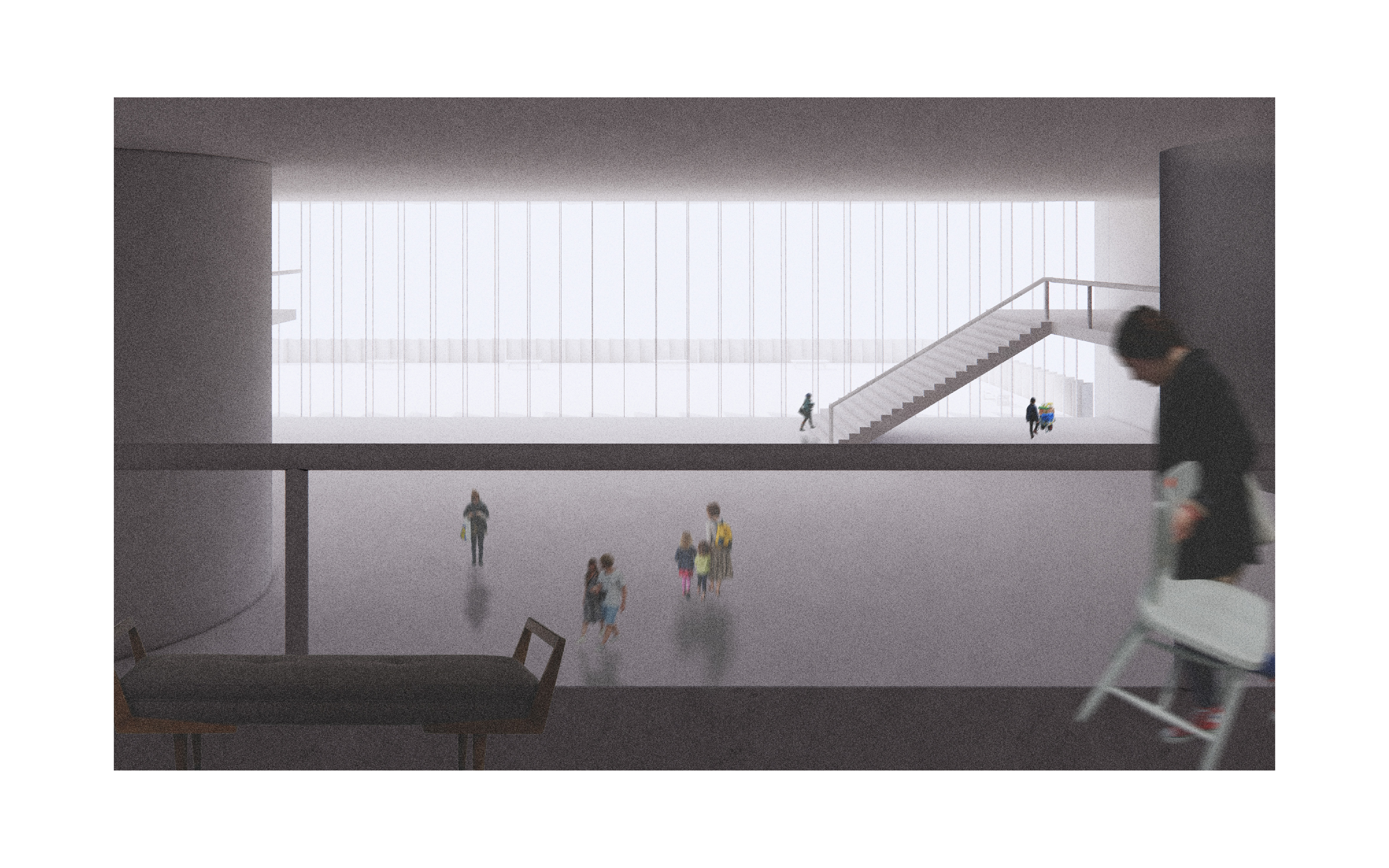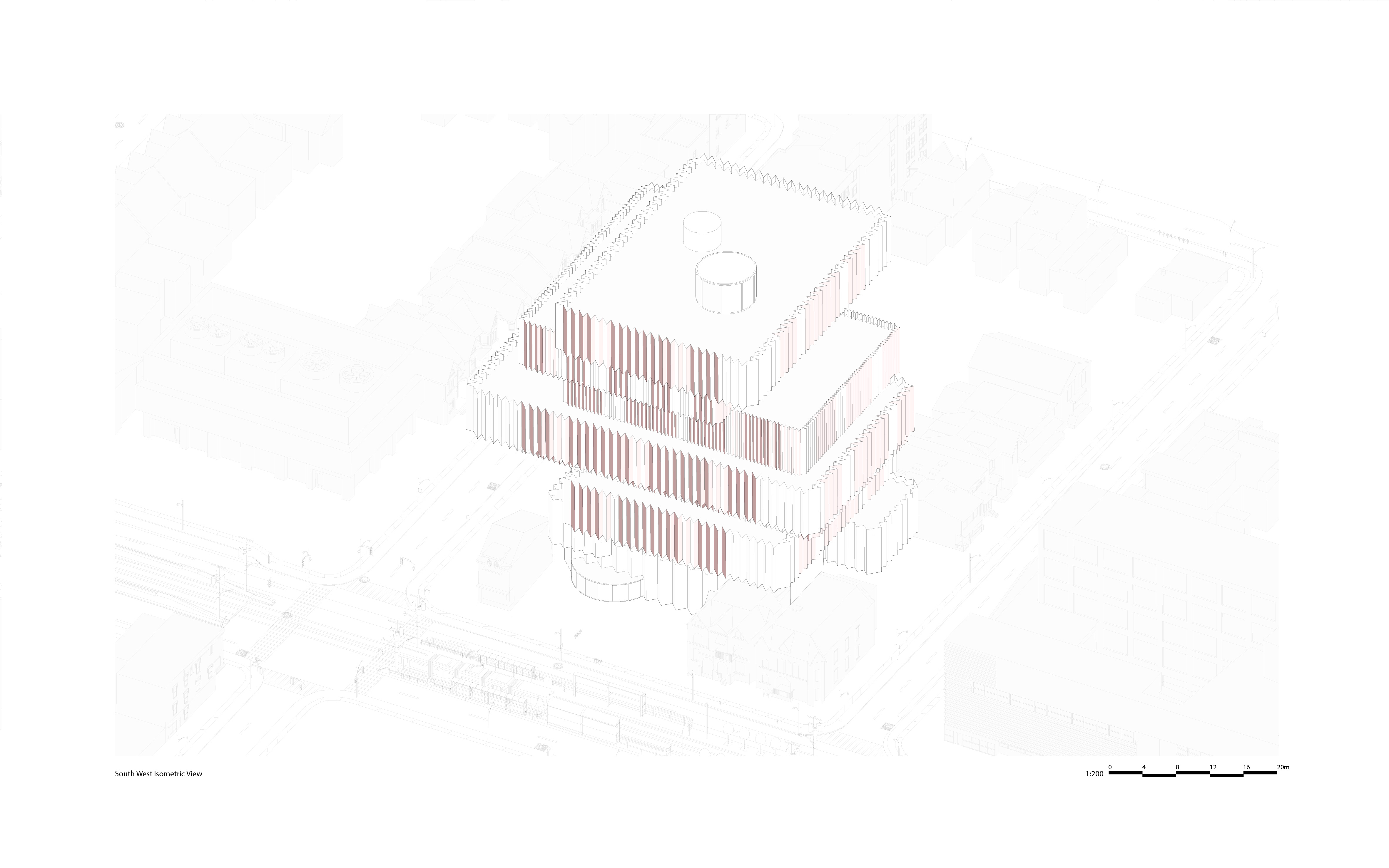ARC362: Architecture Studio 4
In Architecture Studio 4, undergraduate architecture students design multi-unit student residences for the University of Toronto campus. In the process, they explore the relationships between space, building types, tectonics, and material assemblies in an urban context.
Jessie Pan
Jessie writes: "My project, titled Where the Wild Things Grow, was designed in response to global urbanization and our psychological distance to nature as our connections to plants and animals have become abstract. Nature has become commodified and is seen as unlimited, making overconsumption and exploitation easier as the rise of urbanization, cities, and built environments has led to disconnection from food being harvested. By bringing the production of food to the urban environment, planting and harvesting food becomes an activity to gather people together, where the social culture revolves around the kitchen through cooking and eating. Three central kitchens signify their importance as they link together the serpentine form. Units of the residence revolve around growing fields, which strengthen our connections to the natural world while addressing issues of consumption."
(Instructor: Sam Ghantous)
Nur Nuri
Nur writes: "Flow is a student residence that knits together programs of study within the arts, curating an environment of work-live-play for students that is programmatically charged through sensorial design. A shell, defined by the bulbous facade, allows for art and sound to spill into one another through the sweeping ramp. Promoting collaboration, curiosity, and creativity, the curved ramp acts as the guiding element that unites the project under the question of what lies around the faceted corner."
(Instructor: Christopher Cornecelli)
Annie An
Annie writes: "My project addresses the need for architecture as a means to preserve collective memories and culture in order to maintain human connections. I propose doing so through the creation of signs and symbols that act as signifiers to propel memorial and cultural recollection. The importance of memory and culture lie in the fact that they help individuals form connections to a greater social environment. They remind us of our identity and give us a sense of place in a fast-moving era. They create a web that weaves and connects all of us, turning us from singular entities into multilevel dependent community members."
(Instructor: Dina Sarhane)
Christopher Law
Christopher writes: "The phrase 'common ground' is often taken for granted. In today's climate, a lot of matters are pushed to the extremes. This building represents a type of common ground where collaboration and individuality are promoted while celebrating uniqueness. With bright colours accompanied by soft, ergonomically shaped volumes, the (common) Ground invites its residents to be who they want to be. Each volume is different in the way it is shaped, and each one represents a program. No unit is the same. This is a move away from the mass-produced, identical units that are common in today's condos. The spaces formed within a unit, the views towards the outside, the arrangement of functions, and the lights and shadows are all different. The building is supposed to promote the users' experience, whether they are a student or part of a family."
(Instructor: Sam Ghantous)
Jason Low
Jason writes: "My concept was to provide every room with a walk-out terrace that receives sufficient sunlight and introduce a new design language into the interior of the residence, with a grand atrium to generate a new type of social space.”
(Instructor: Christopher Cornecelli)
Nezar Alkujok
Nezar writes: "'Medina' takes the essence of Piranesi’s objectives and becomes a component of the modern city by taking on the mould of a Toronto condo, with the objective of introducing a transitory experience and a refined cultural outlook within the city’s increasingly diverse urban fabric. Inspired by HABITAT 67, the natures of breathability and symbiosis become a comprehensive addition to Medina’s backbone."
(Instructor: Dina Sarhane)
Perry Wang
Perry writes: "My design focuses on exploring the principles of modular architecture. The building is composed of two components: the structural steel spaceframe structure that acts as a shelf, and the modules themselves that slide and lock and vary in typology. This level of program interchangeability enables the building to respond to the many unexpected demands that come from urban contexts, such as a housing shortage."
(Instructor: Dina Sarhane)
Soroush Ehsani-Yeganeh
Soroush writes: "My concept for the student residence is maximizing the idea of living together parallel to maintaining the individuality of the residents and allowing them to have their own private spaces. I believe that modern collectives could be presented with empowered residents that could define their own living spaces based on their social interactions."
(Instructor: Dina Sarhane)
Caleigh MacDonald
Caleigh writes: "Instead of generalizing an entire student body, I chose to design a residence specifically for introverts. Individual units act as refuge within a larger complex that supports different layers of community. These layers offer the option of interaction for when students are feeling sociable. The residence makes use of wrapping gestures at different scales to produce unique moments of interaction where students are connected and disconnected at the same time. While enabling a level of privacy, this effect establishes informal relationships between residents that generate a sense of community."
(Instructor: Sam Ghantous)
Tianyu Zhang
Tianyu writes: "My project is called Mediatory Architecture. It's a collective model, intended to embrace all demographics living on the site — which are single families, young workers, and university students. I became interested in maintaining each group's individual/collective identity while creating unexpected encounters between them. Public spaces are 'inserted' into different parts of the building, with a series of techniques to divide circulation, program, and 'ownership.'"
(Instructor: Sam Ghantous)
Noel Sampson
Noel writes: "This design is intended to be a statement that architecture has a responsibility to regenerate and enhance urban habitats to promote biodiversity and restore a human connection with nature. My aim for this project was to make a carbon-negative design that was capable of serving as a sanctuary for avian wildlife within the city."
(Instructor: Christopher Cornecelli)
Mina Onay
Mina writes: "The Vertical Campus Student Residence creates a unique experience for U of T students and faculty members by merging residential, educational, and recreational green spaces in one volume. The most distinctive features of this student residence are the continuous recreational bridges, which accommodate various facilities, including lecture halls, study spaces, a cafeteria, and a gym. The facade's panel design, with its transparency, creates a contrast with the densely populated panels of the private residential spaces."
(Instructor: Dina Sarhane)
Jessica Yoon
Jessica writes: "My design aims to create a student housing project that fosters a community through varying degrees of public spaces. And by creating quality public spaces, both in design and scale, students are encouraged to occupy them. The building is divided into two-storey increments to provide a neighbourhood-like scale to the residence. I then offset each two-storey block to create unique outdoor terraces. Amenities suspend from the atriums to create unexpected spaces of congregation that break free from the two-storey block."
(Instructor: Christopher Cornecelli)


